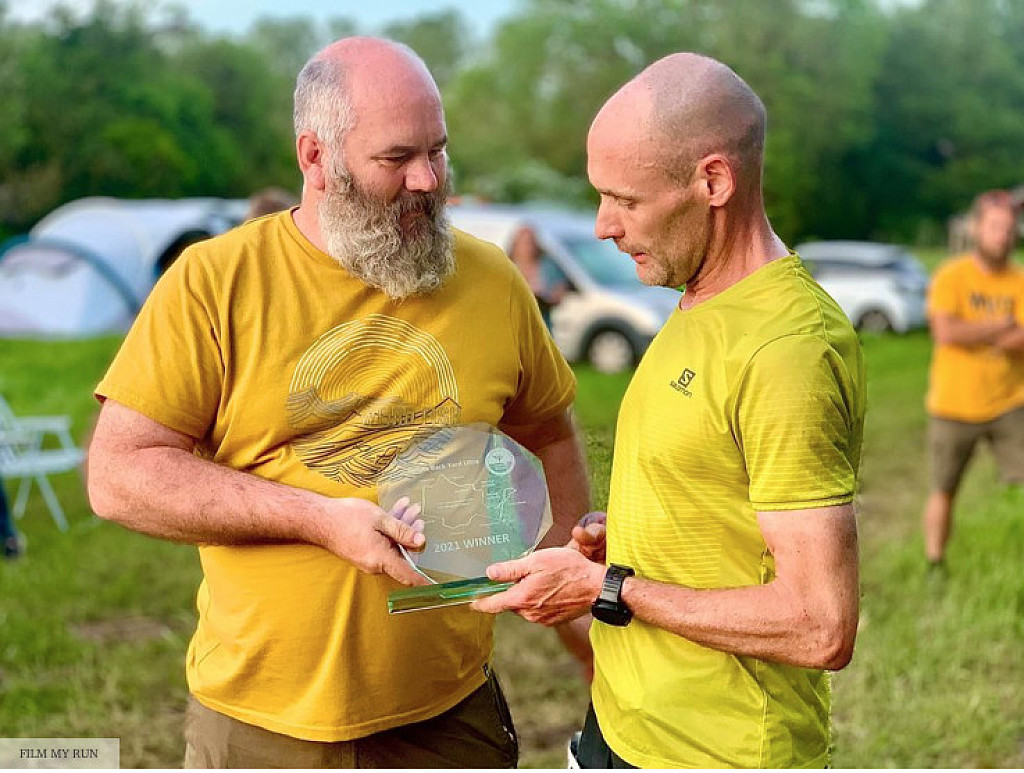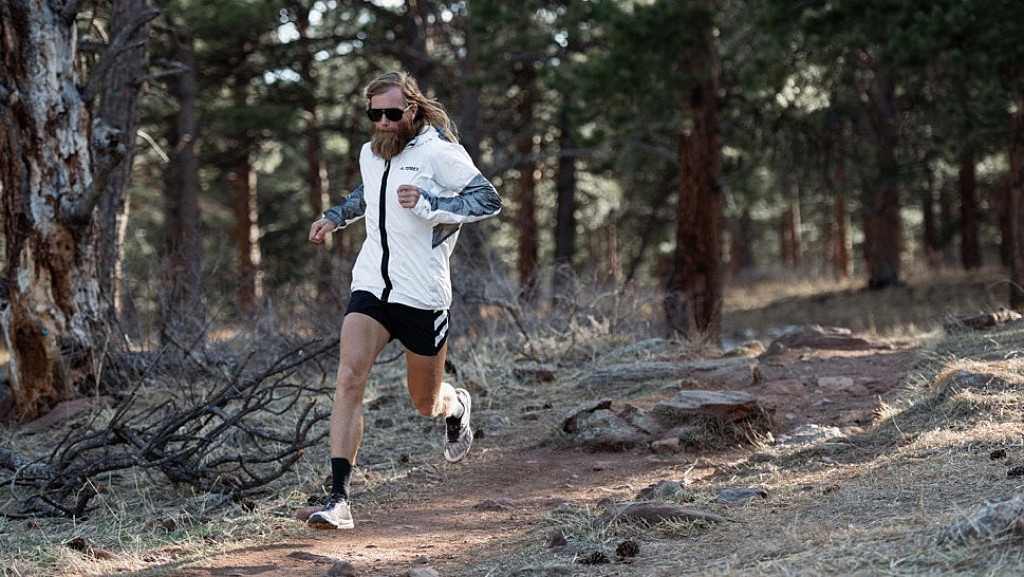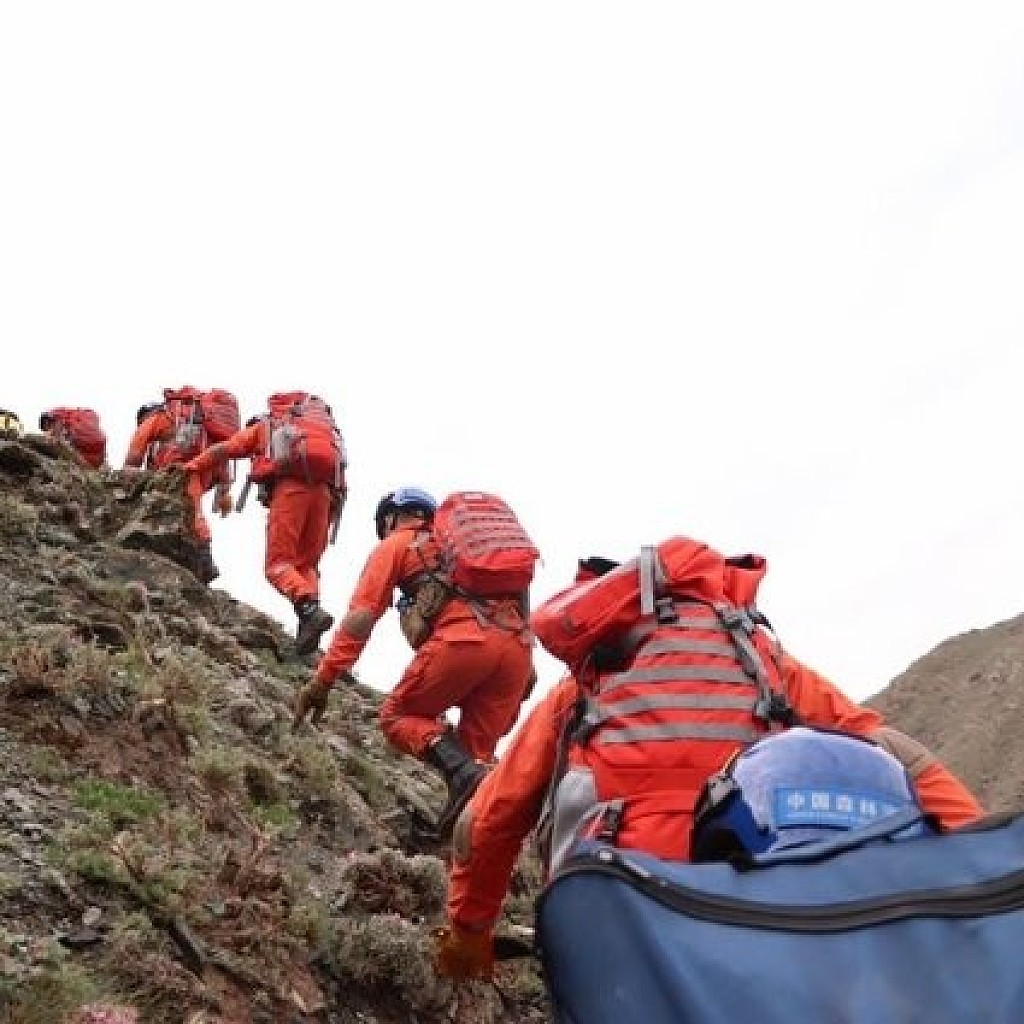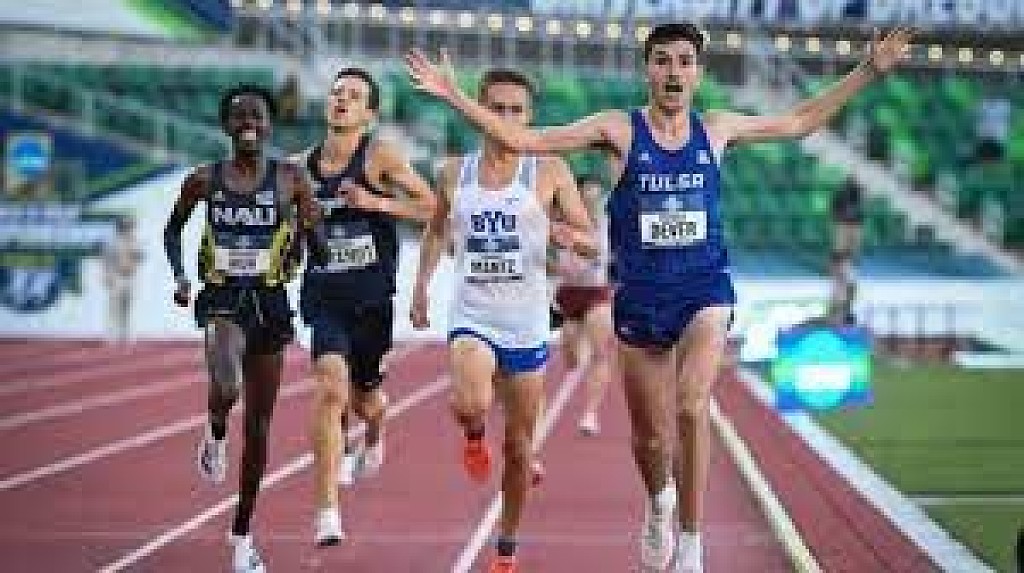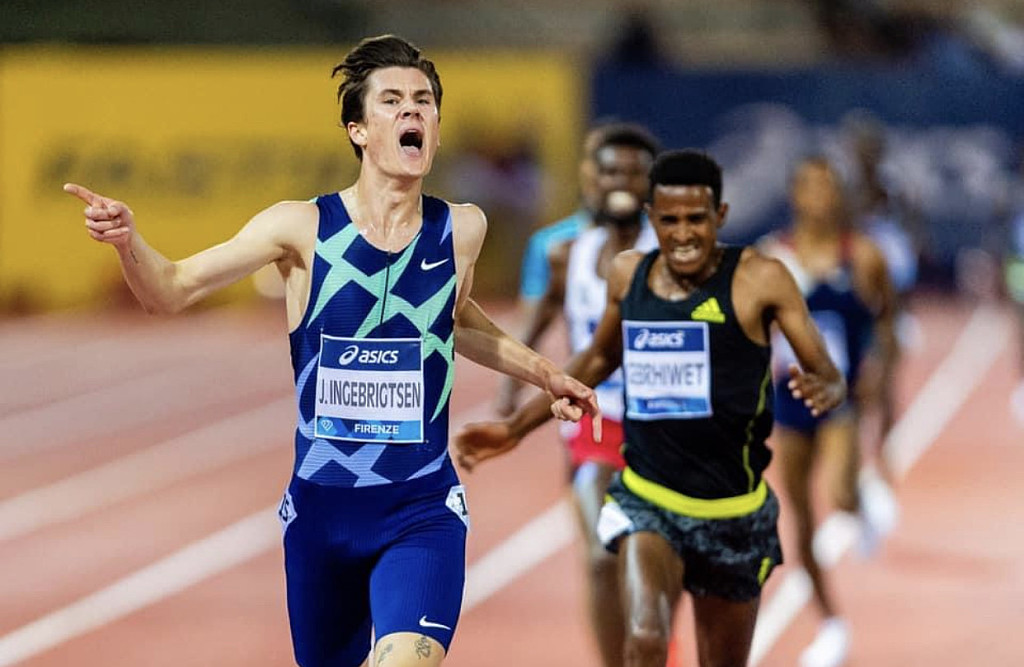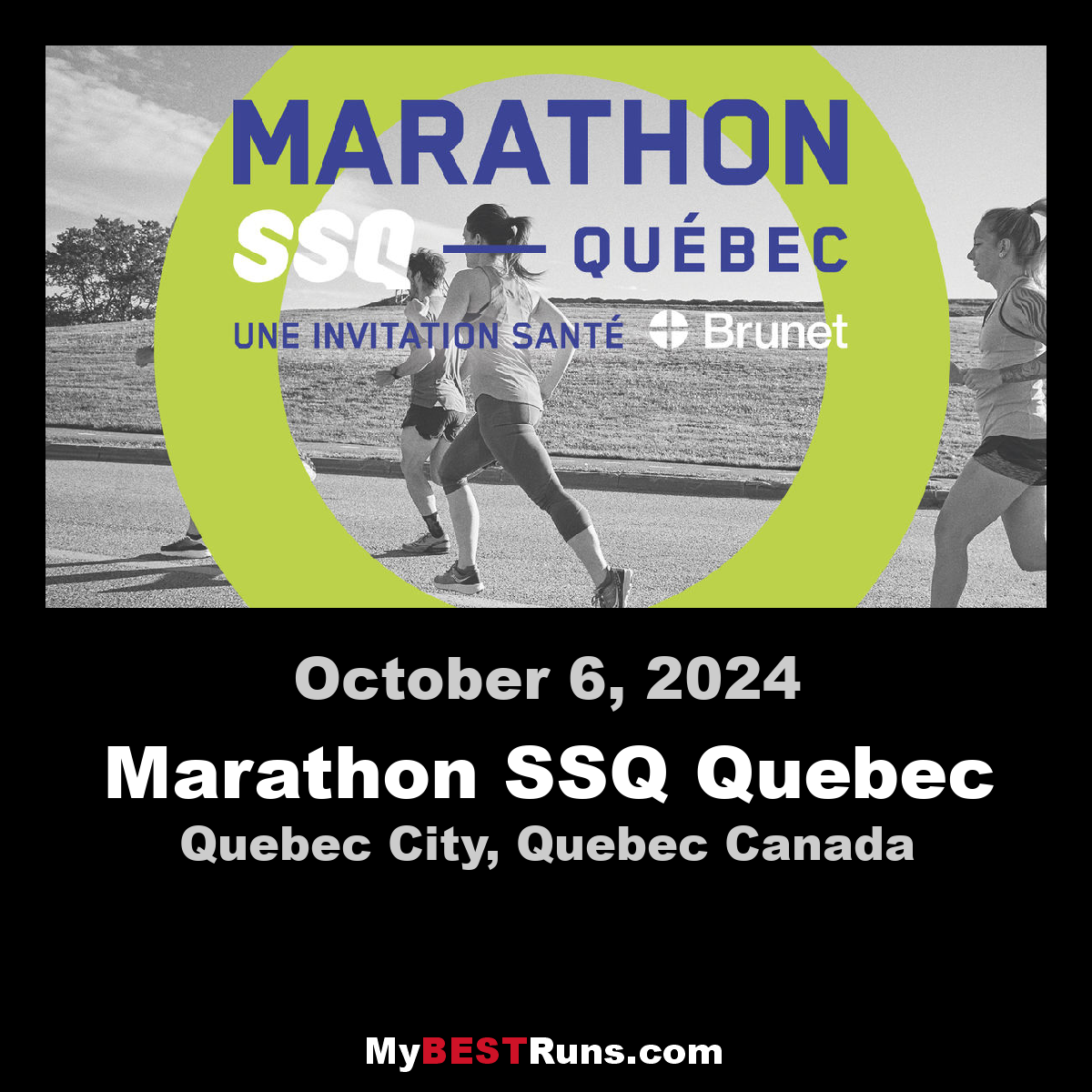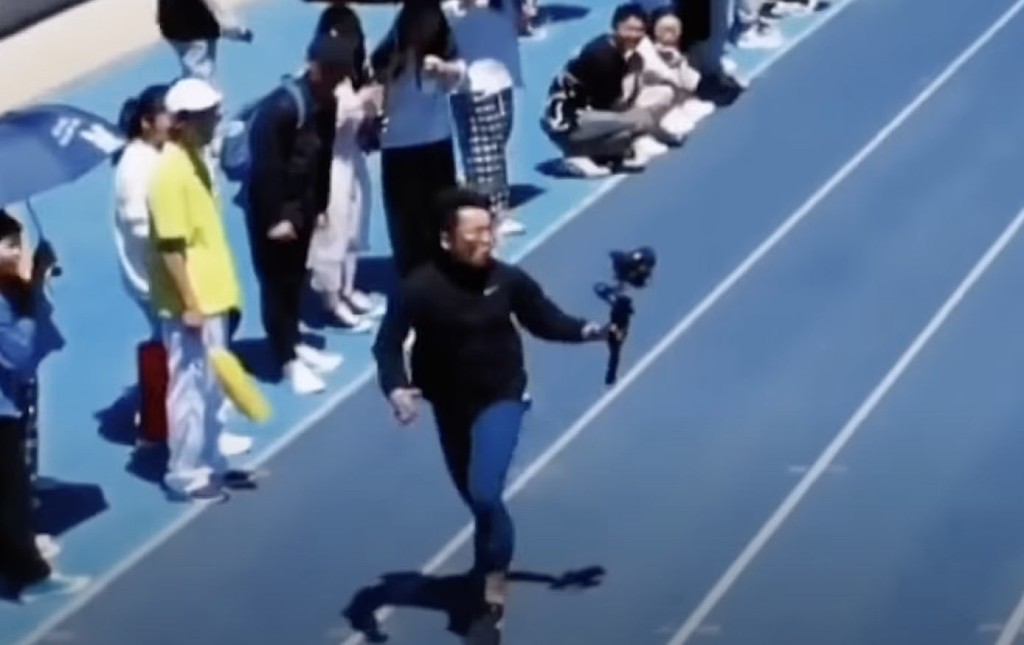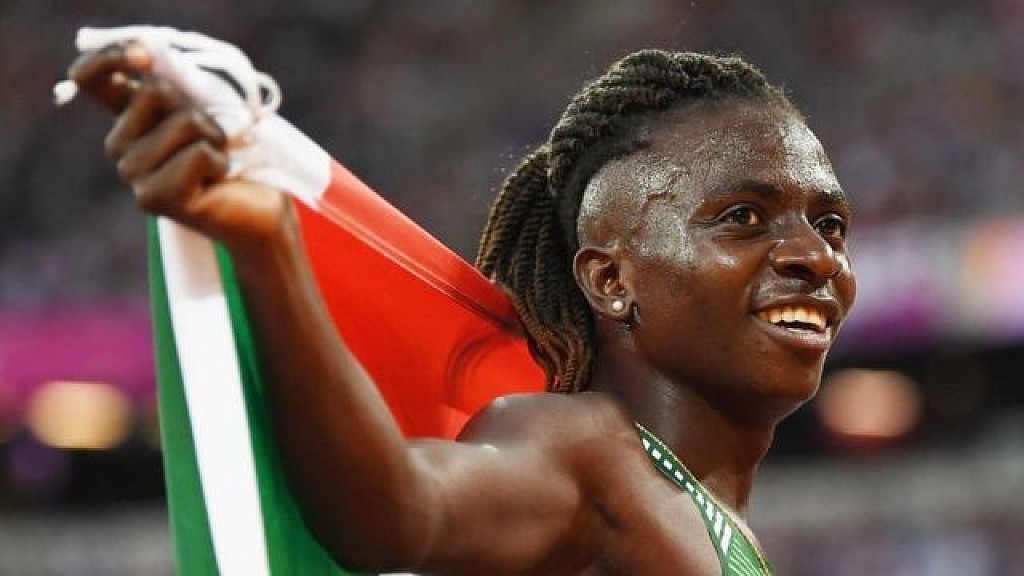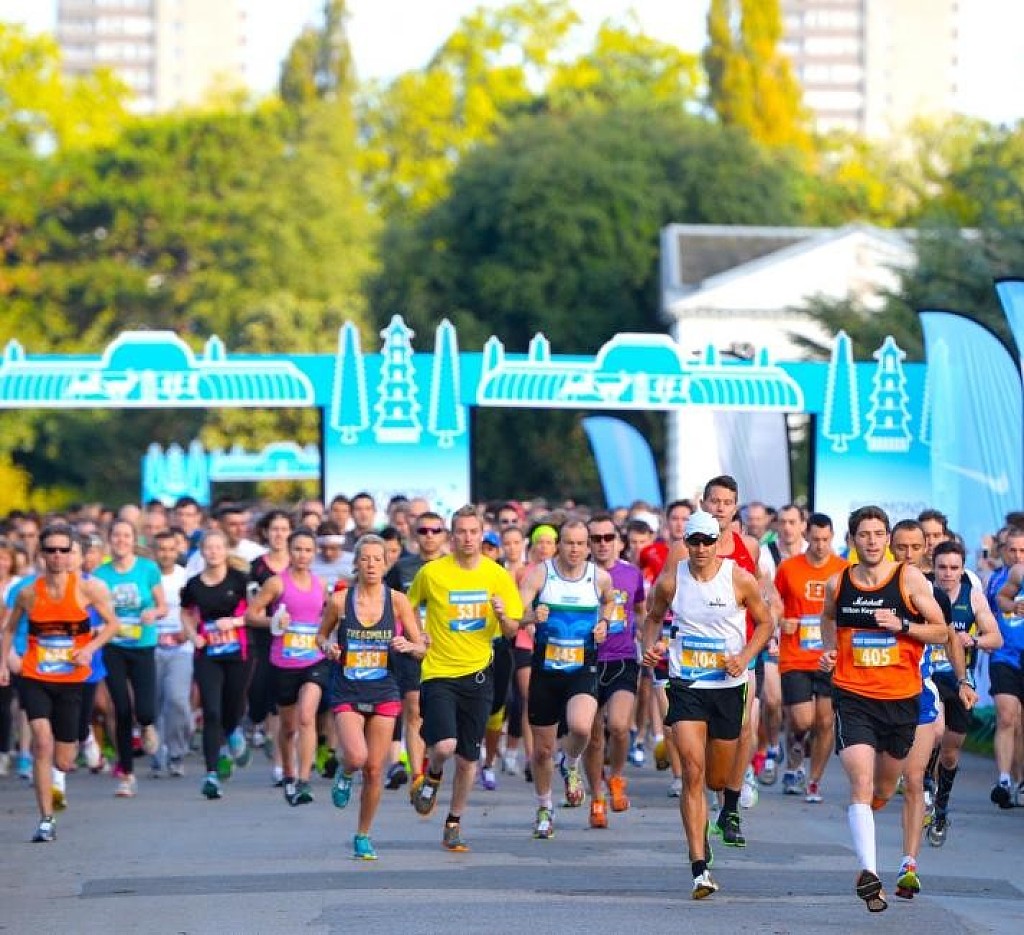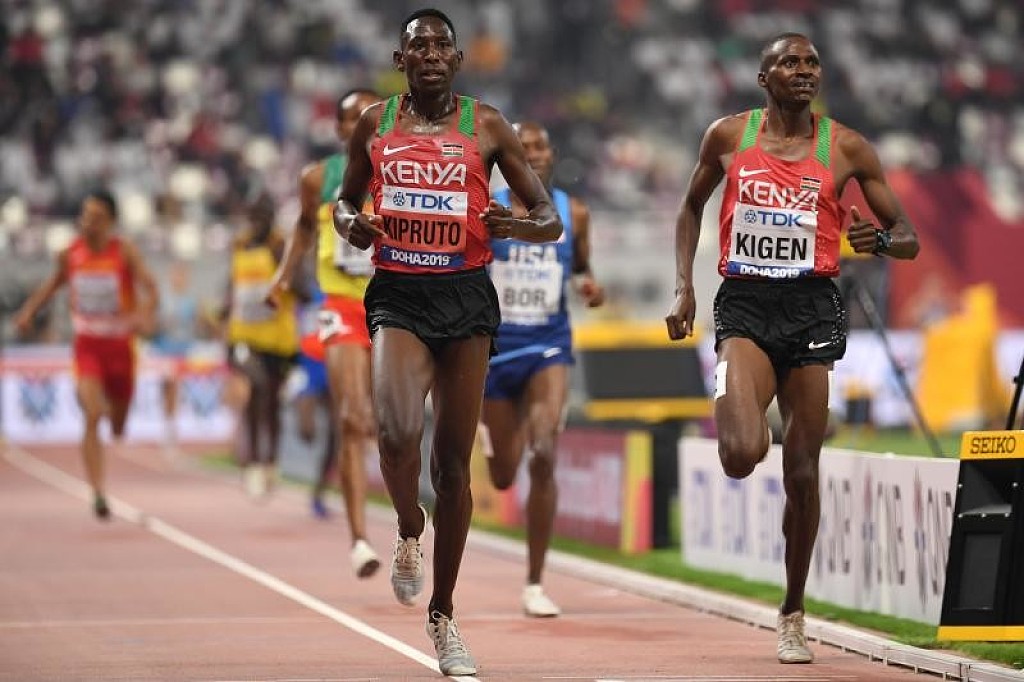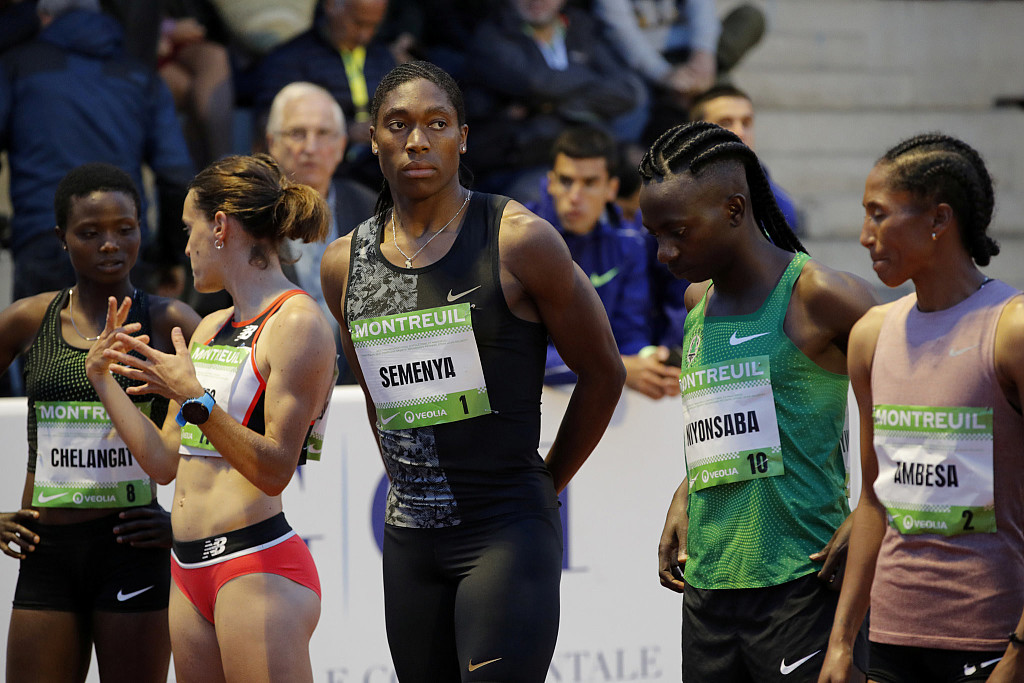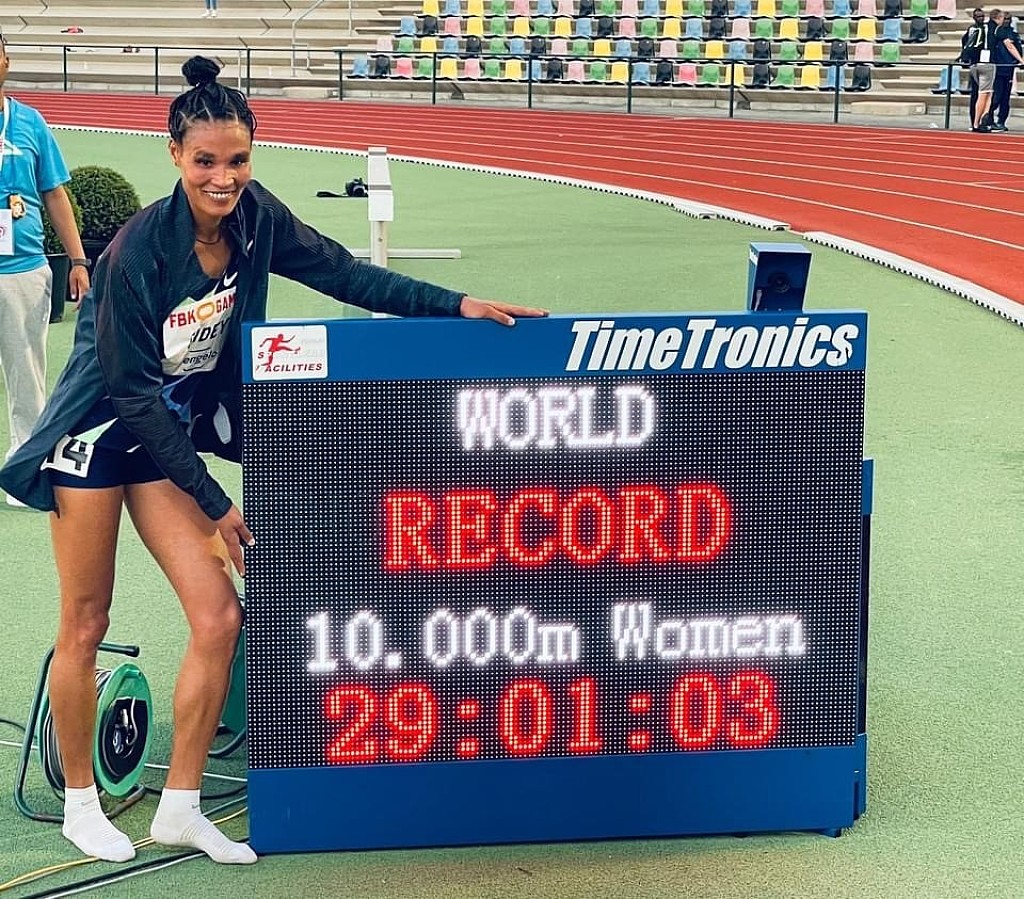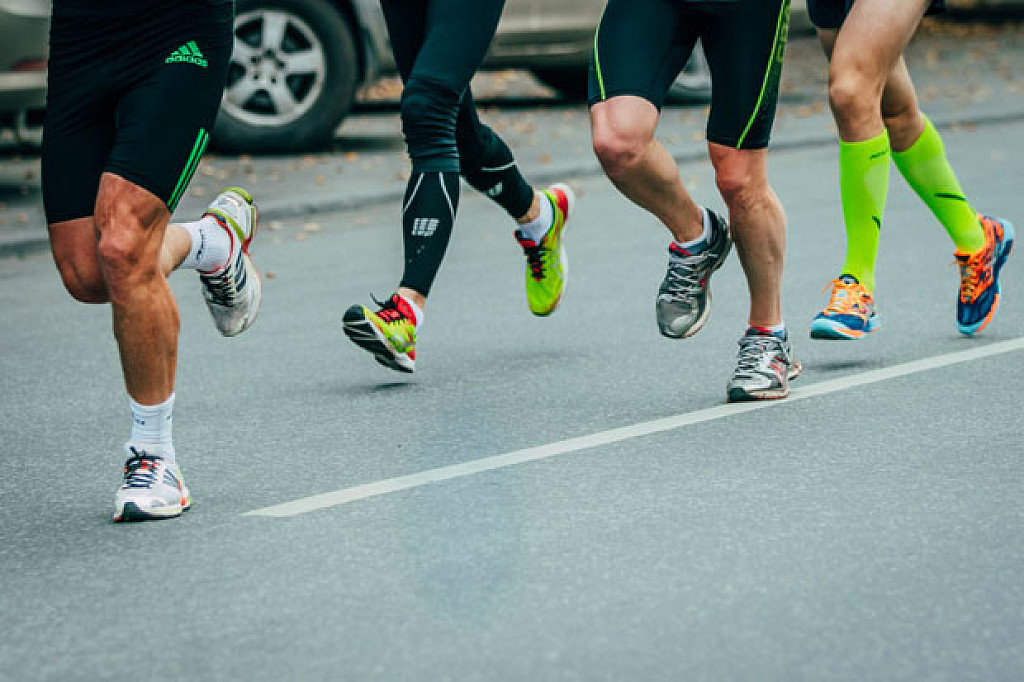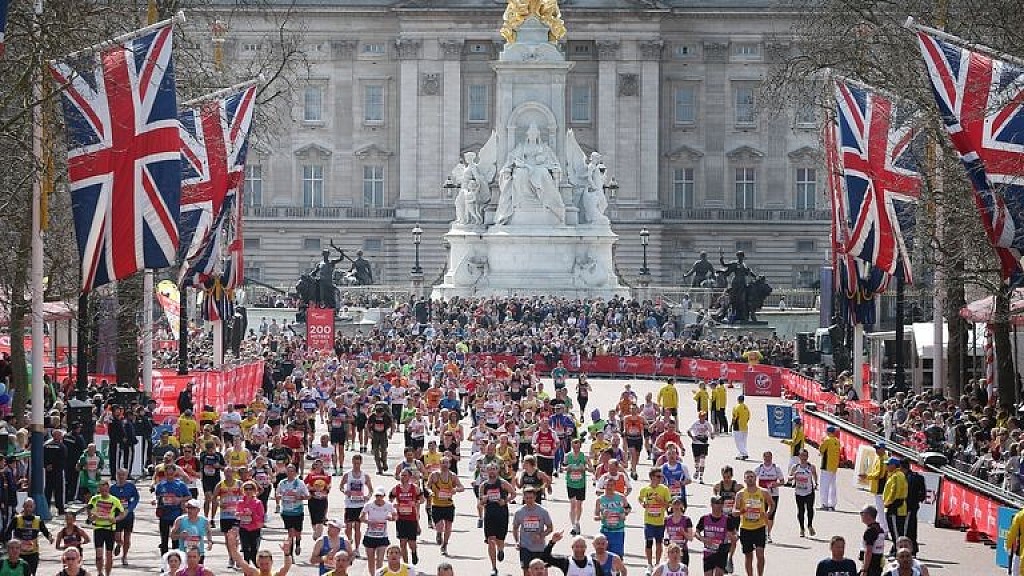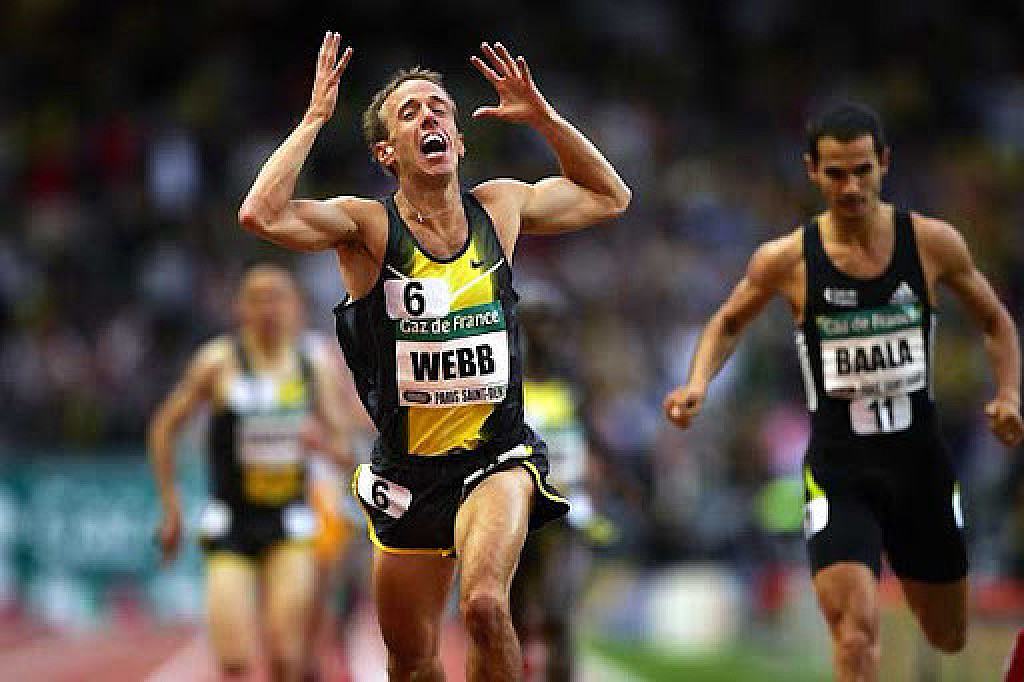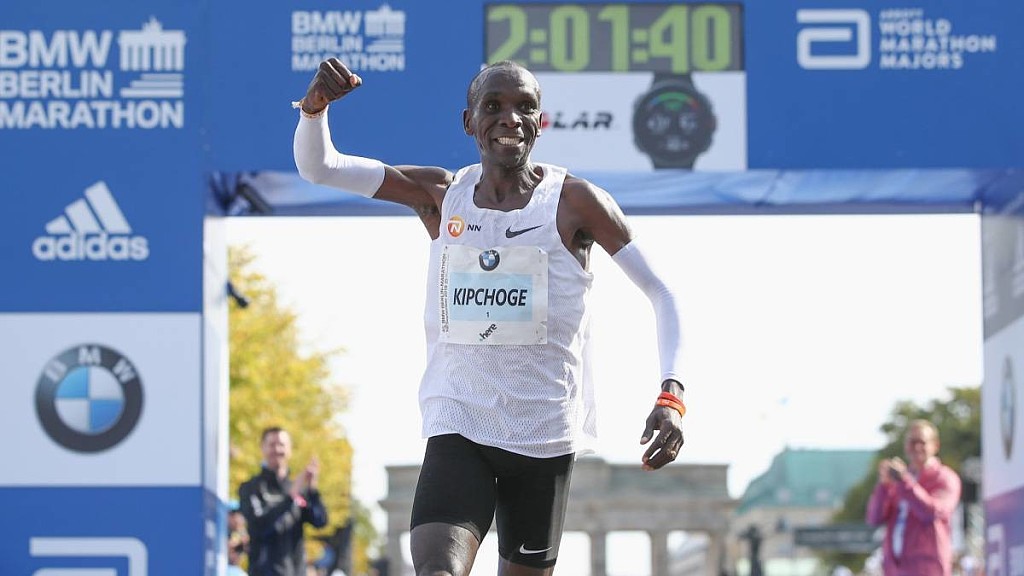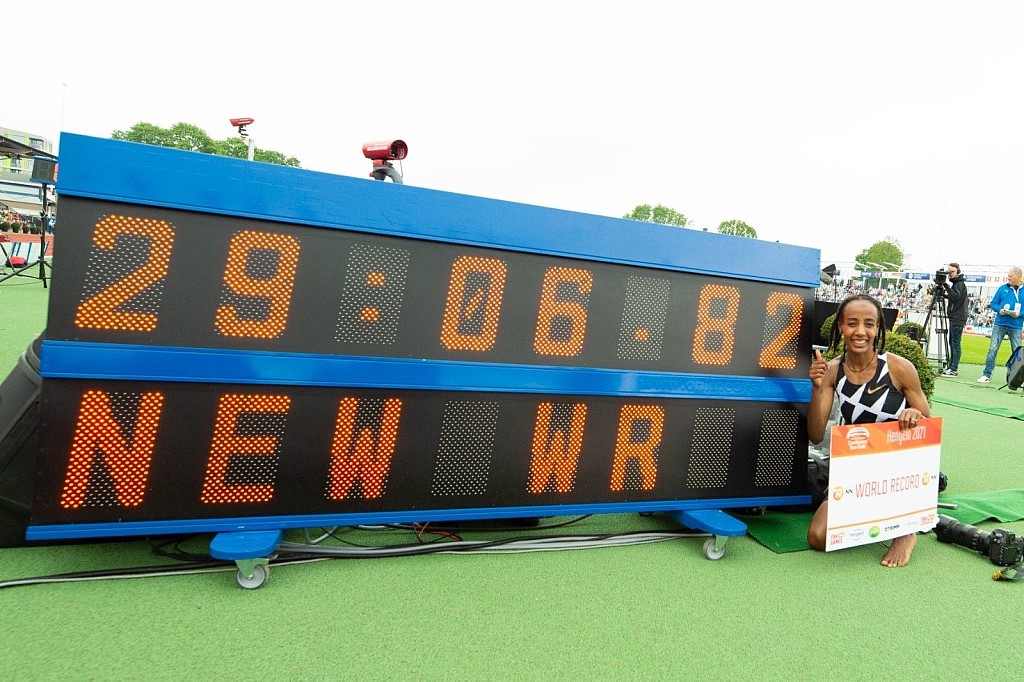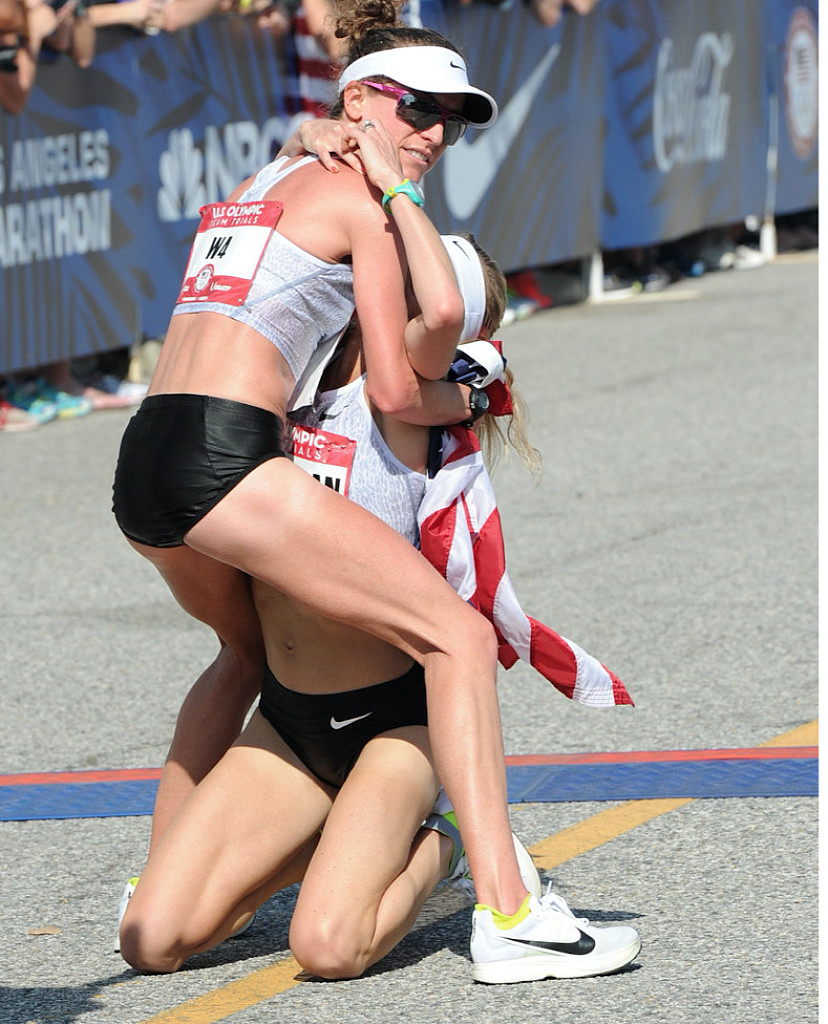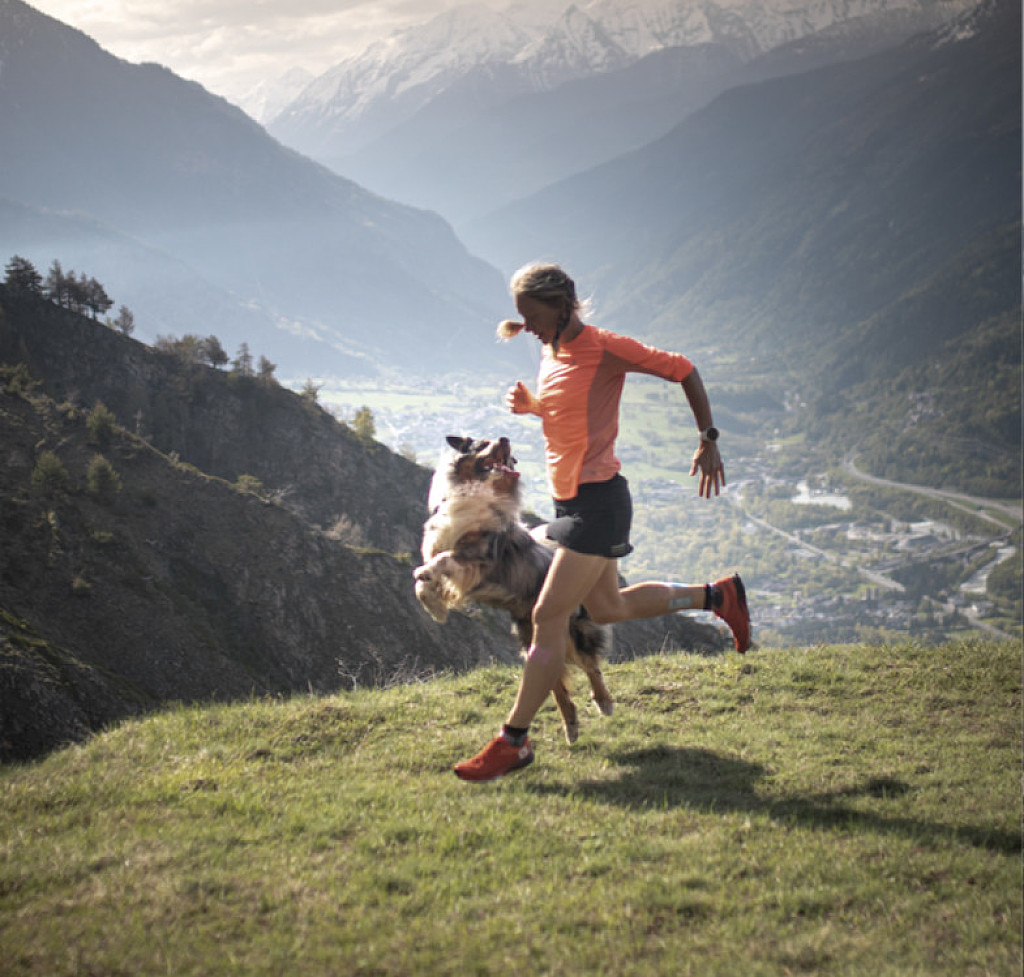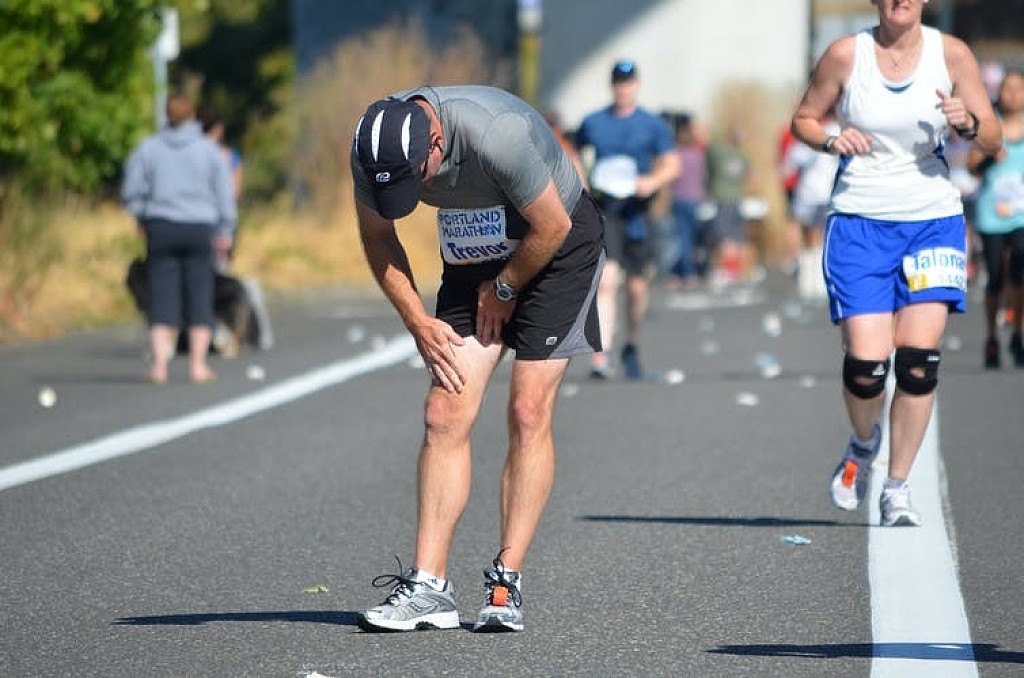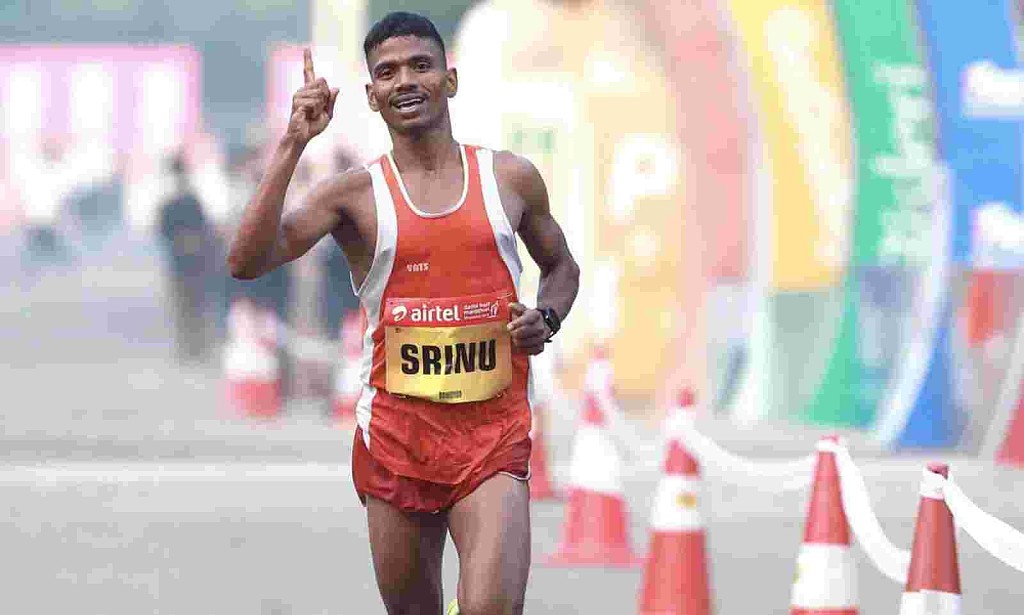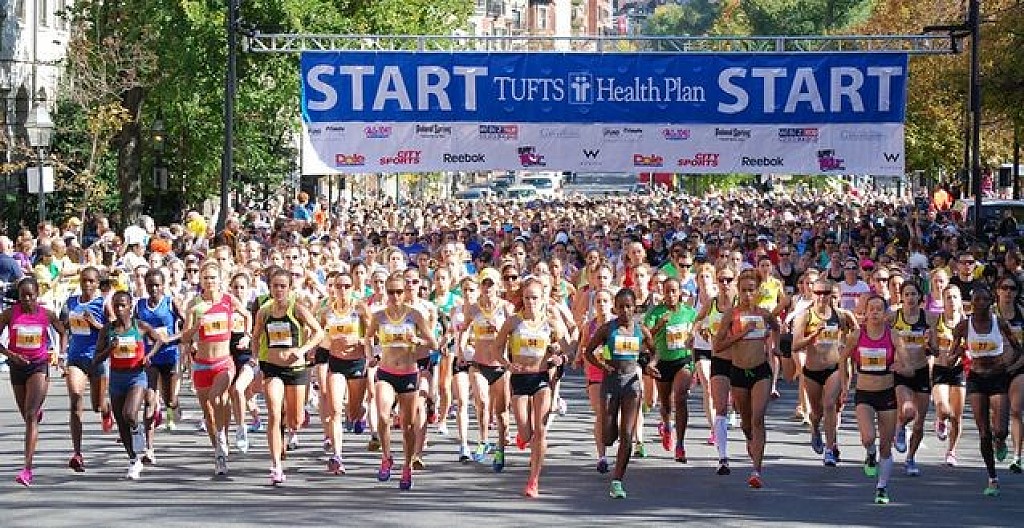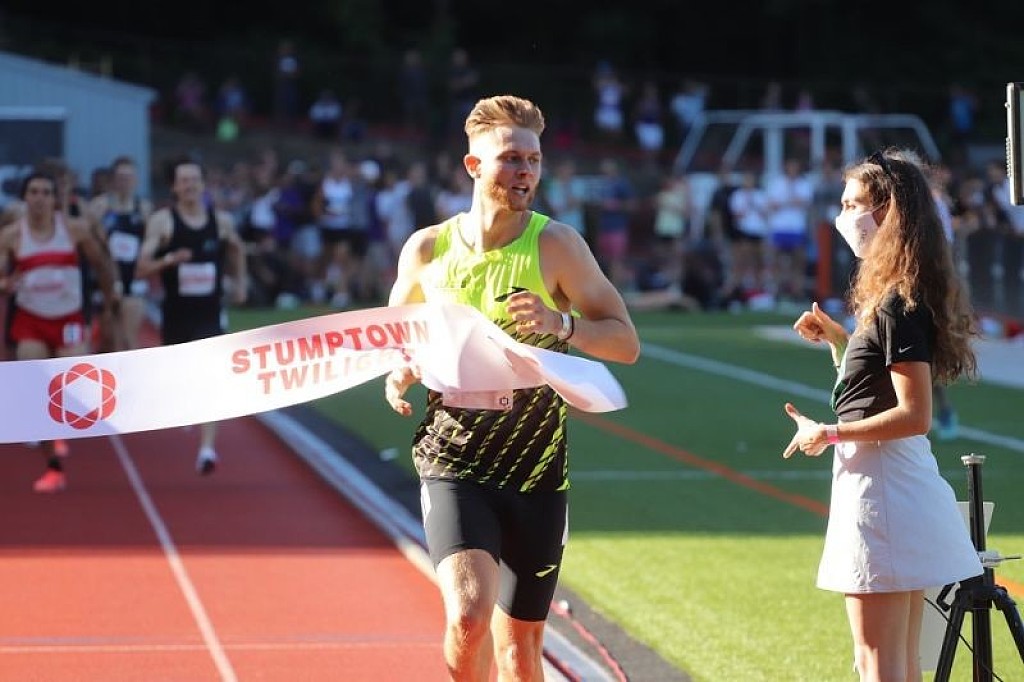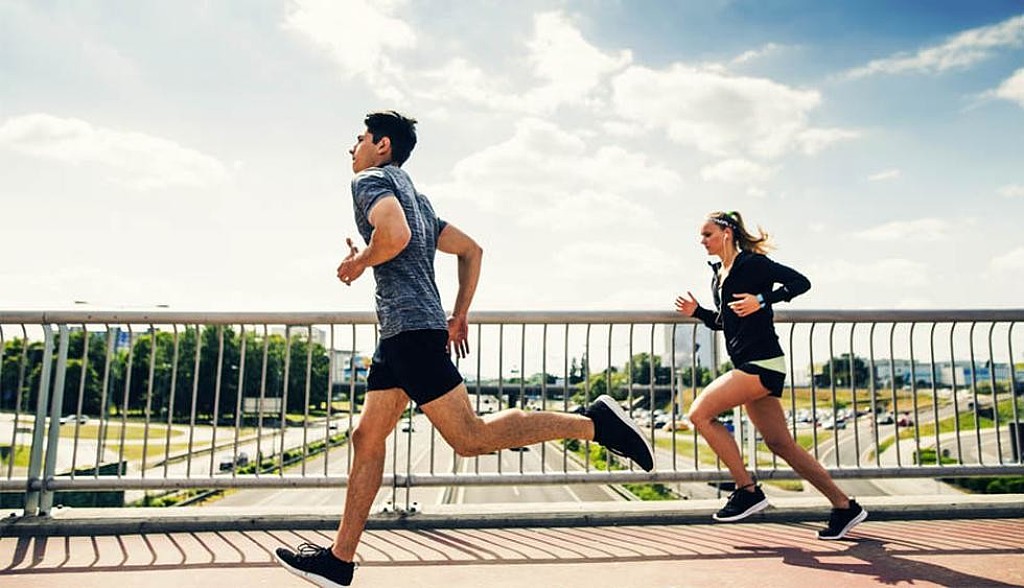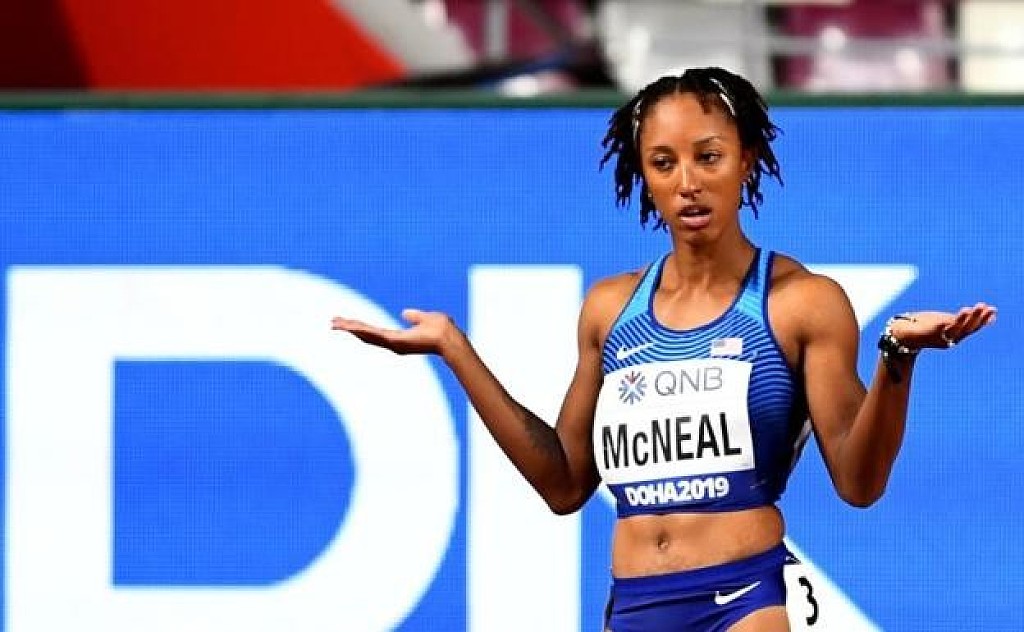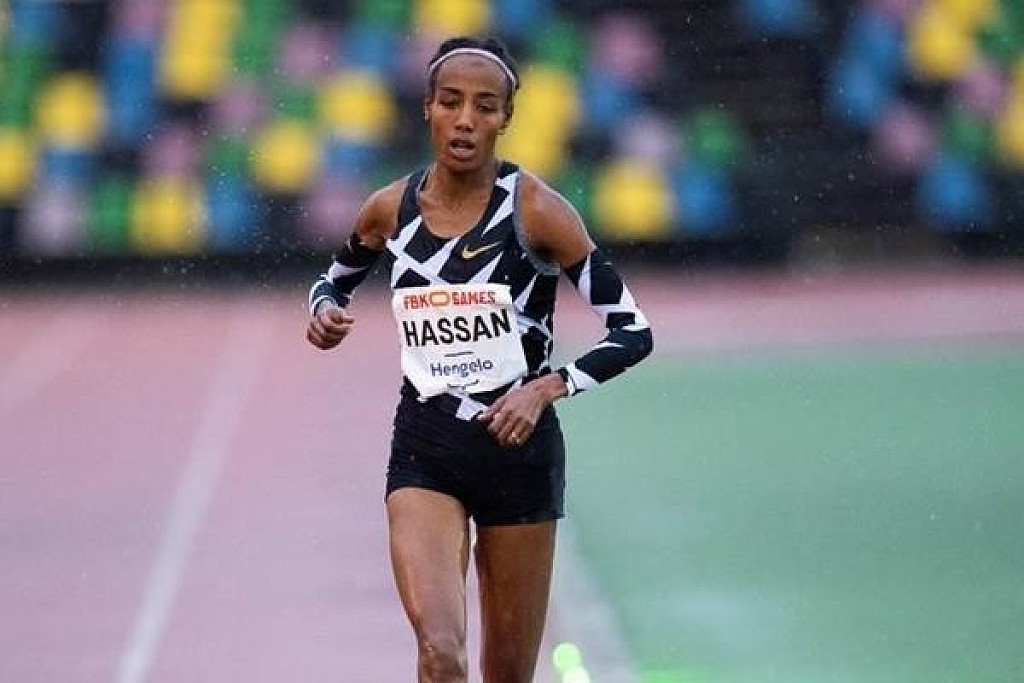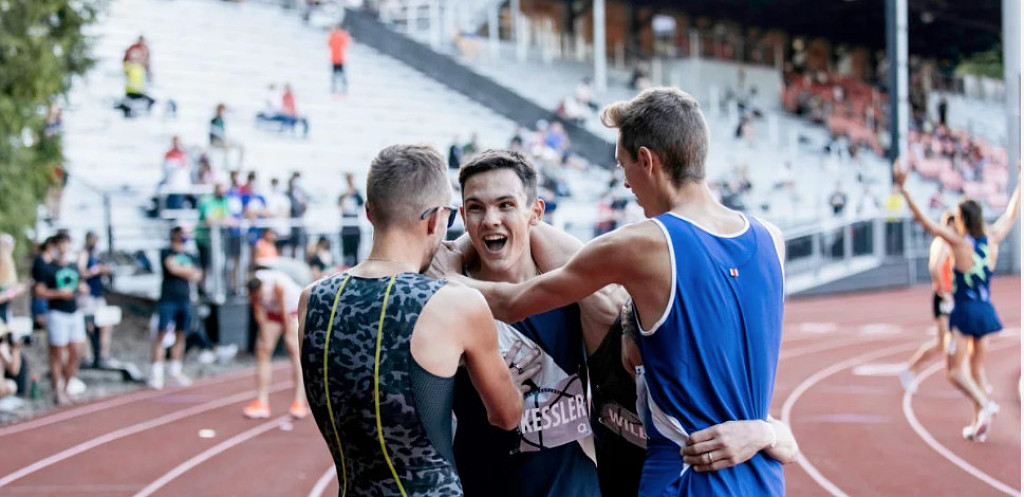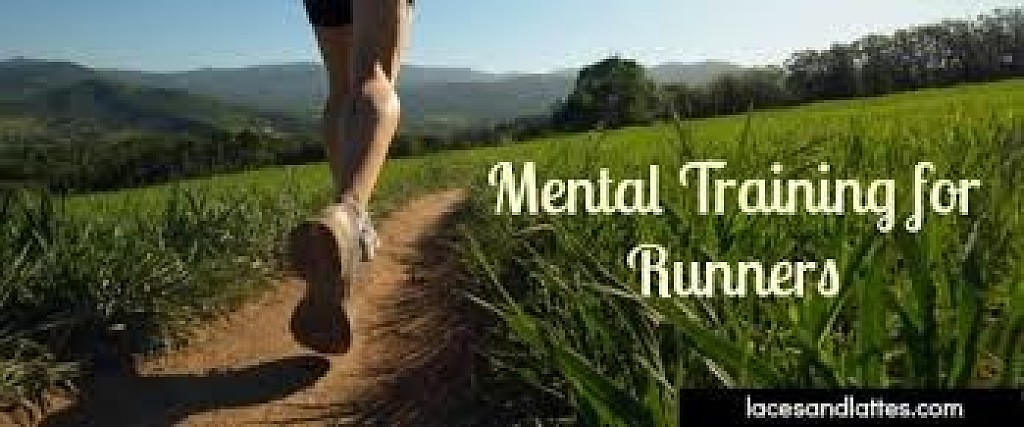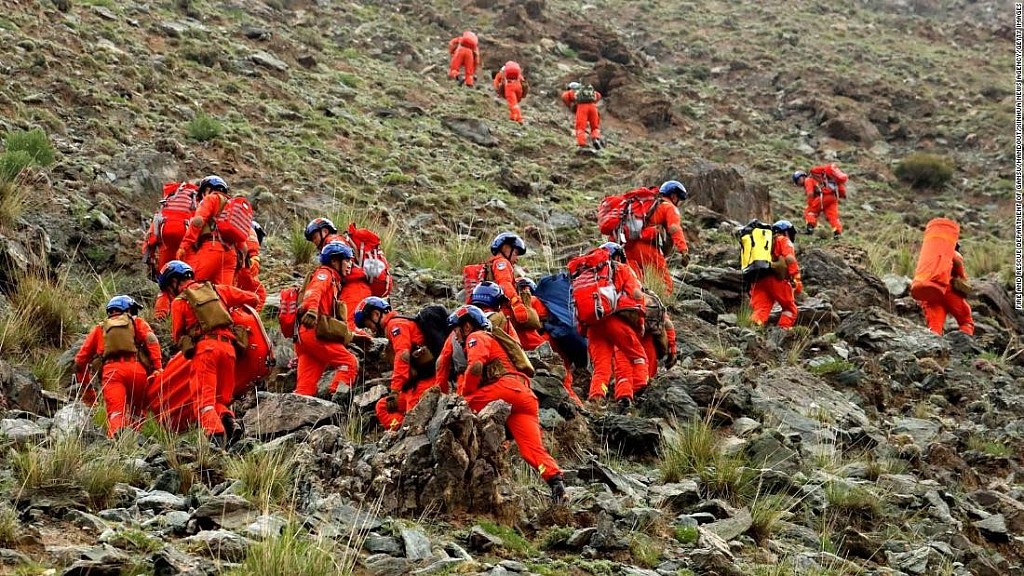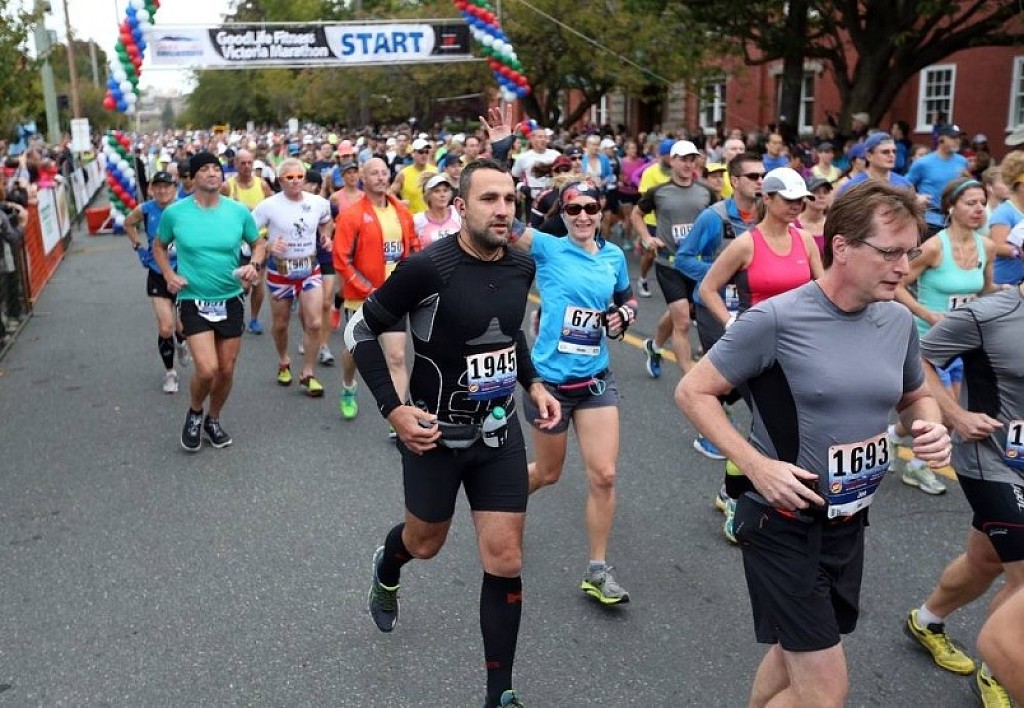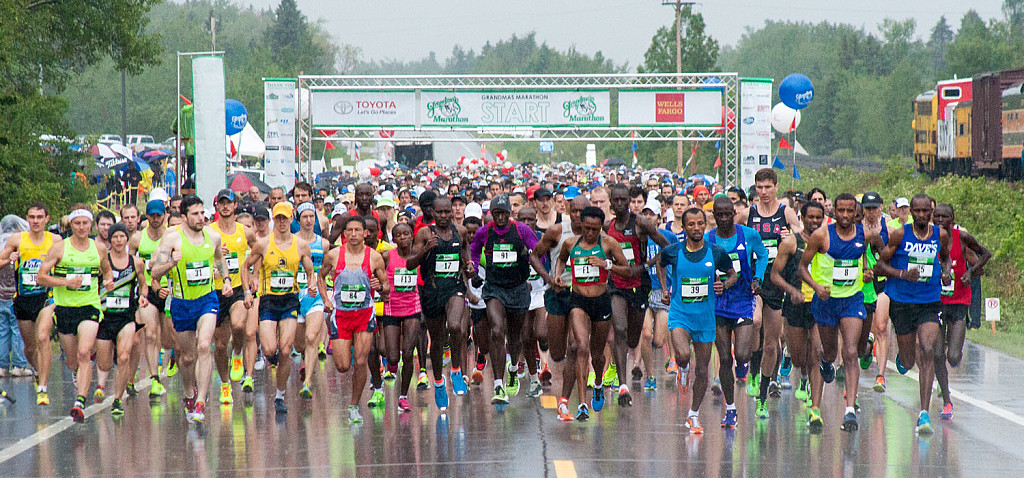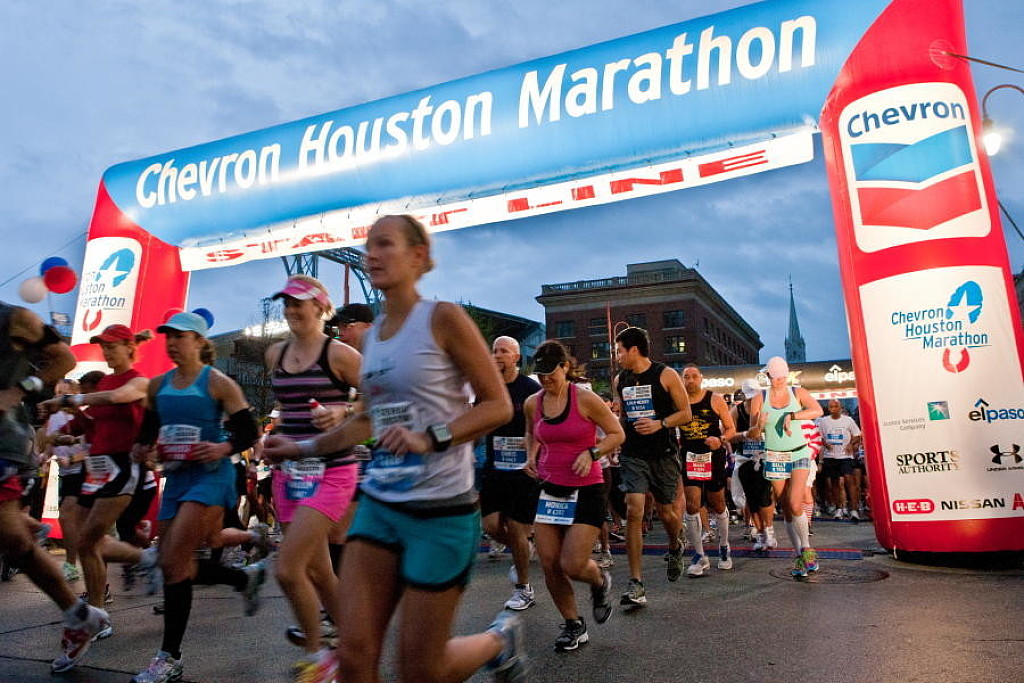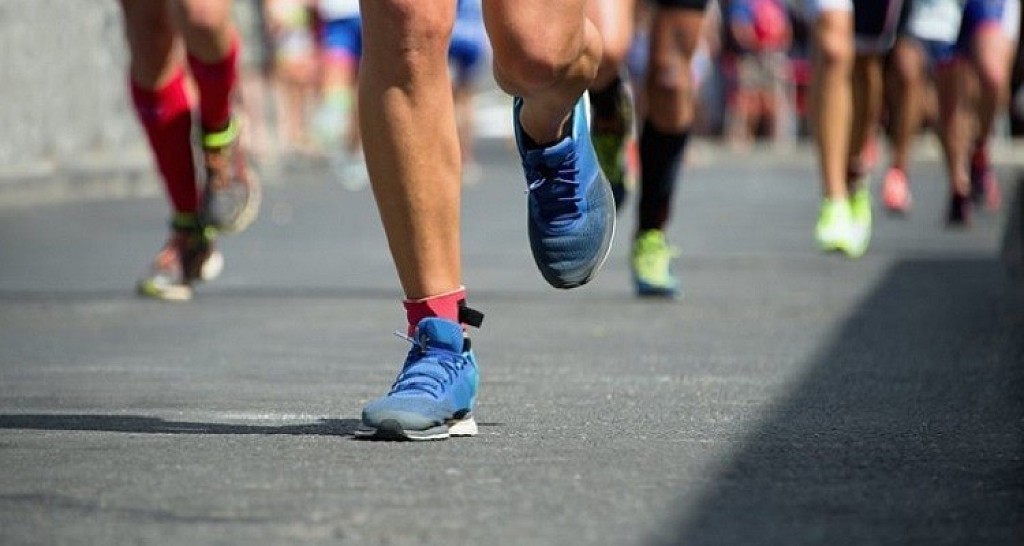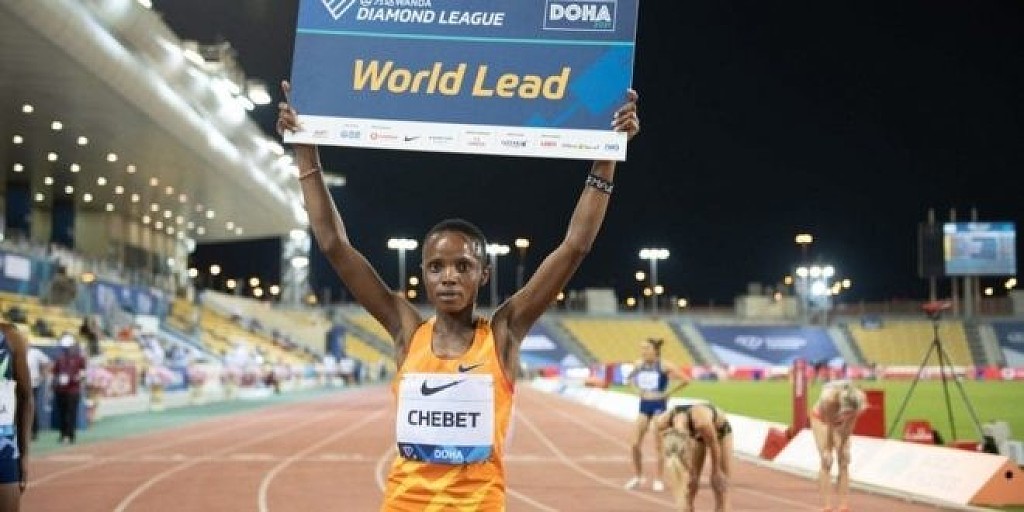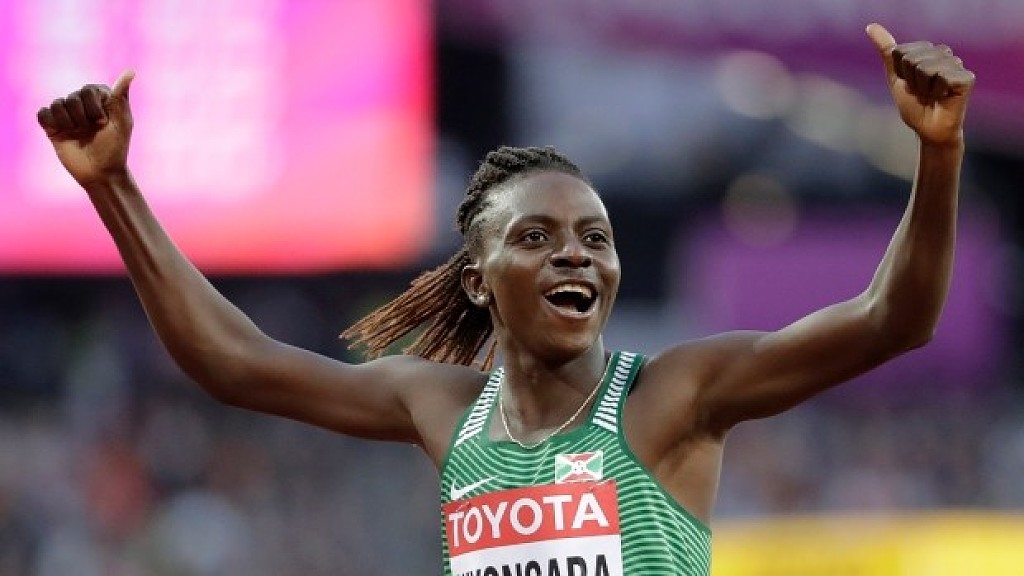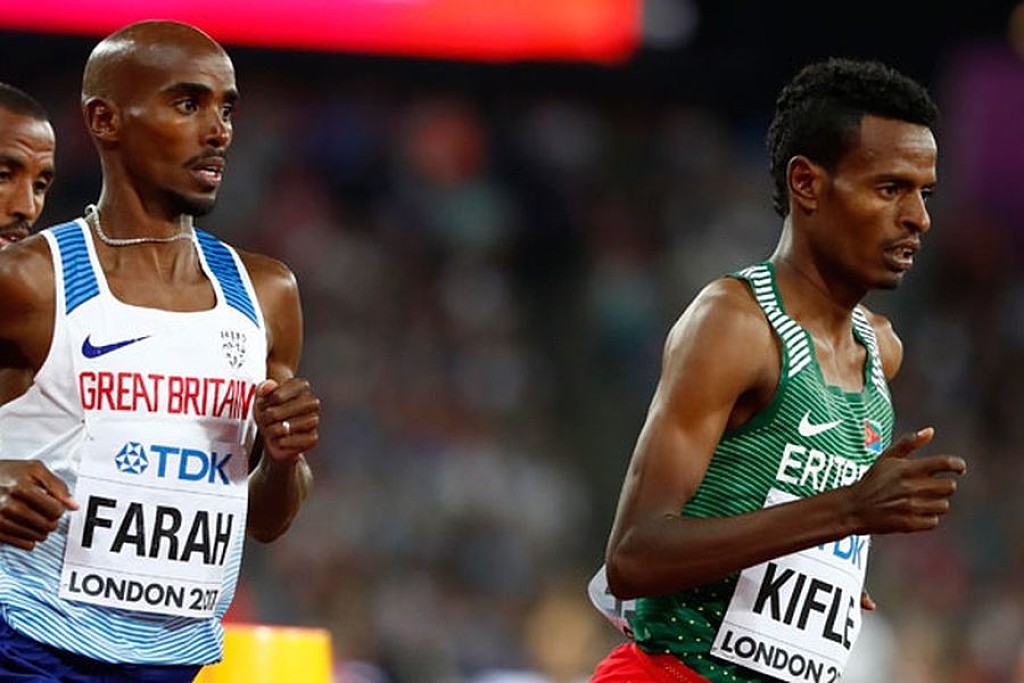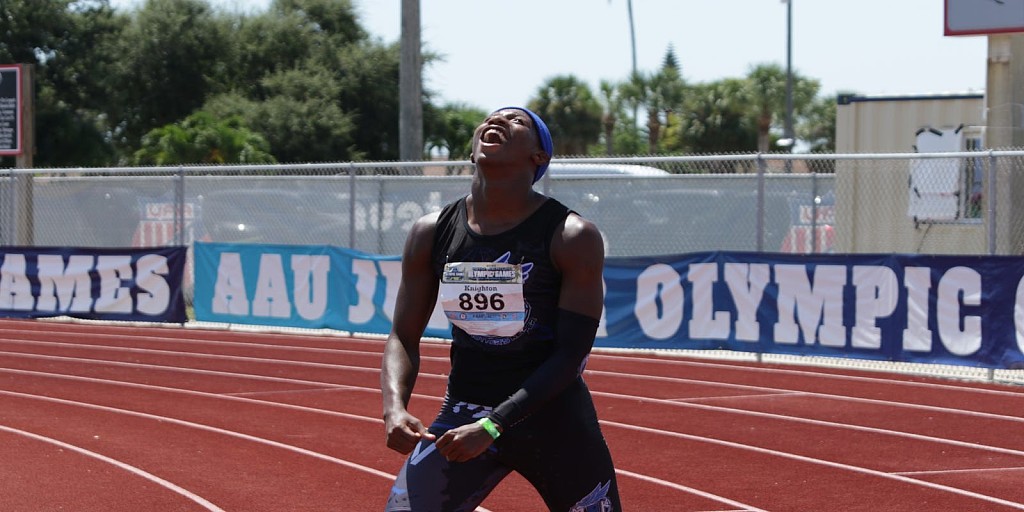Running News Daily
Running News Daily is edited by Bob Anderson in Mountain View, California USA and team in Thika Kenya, La Piedad Mexico, Bend Oregon, Chandler Arizona and Monforte da Beira Portugal. Send your news items to bob@mybestruns.com Advertising opportunities available. Over one million readers and growing. Train the Kenyan Way at KATA Running Retreat Kenya. (Kenyan Athletics Training Academy) in Thika Kenya. Opening in june 2024 KATA Running retreat Portugal. Learn more about Bob Anderson, MBR publisher and KATA director/owner, take a look at A Long Run the movie covering Bob's 50 race challenge.
Index to Daily Posts · Sign Up For Updates · Run The World Feed
British runner breaks Backyard Ultra world record
John Stocker ran 337 miles in 81 hours at the Suffolk Backyard Ultra event this weekend
A British ultrarunner has broken the Backyard Ultra world record.

John Stocker, from Oxfordshire, ran more than 337 miles in 81 hours at the Suffolk Backyard Ultra beginning on Saturday.
Runners taking part have to complete a 4.167 mile lap of Suffolk’s Knettishall Heath every hour until they can’t carry on any longer. Participants must arrive back to the start in time for the next loop or they are knocked out.
According to race organisers, Stocker and fellow runner Matt Blackburn both beat the previous record of 312.5 miles in 75 hours, set by Belgian Karel Sabbe at Big’s Backyard last October. Sabbe told Runner’s World last year that his secret to resting was to 'give into sleep deprivation', turning his headlamp low and walking with his eyes closed so that he was ready for sleep by the time he returned to base.
Stocker and Blackburn both completed 80 laps, before Blackburn pulled out during the 81st lap. As no winner would be declared if he did not complete the lap, Stocker continued to run, completing the lap in 52 minutes, his slowest time.
That final lap was particularly difficult, Stocker told Runner's World. As he came out of the 'Spooky Woods' area of the course, he tripped and landed hard on his ribs. He thought he had "just lost it all", he said, before his resolve hardened. "I knew I just had to finish no matter what."
He said: "You could say the whole race flashed before my eyes, but with every small step I started walking along the road, then limping and onto running towards the finish and the win."
Race director Lindley Chambers told the BBC: 'What these guys have achieved is pretty incredible.'He added: 'I knew we had the calibre of people taking part and I personally thought we'd do 50 or 60 loops but these guys have gone beyond my expectation and have gone further than anyone else in the world competing in this format.'
Stocker and Blackburn reportedly completed each lap in around 45 to 50 minutes, leaving 10 to 15 minutes after each lap to rest and refuel before heading out for the next lap.
American runner Courtney Dauwalter told the BBC why this race format appealed to her in April: 'It’s a fun mental challenge,' she said, adding that backyard ultras are about 'finding out what’s possible rather than a race that you want to win. If we don’t limit ourselves, it’s pretty cool what can happen.'
(06/12/2021) ⚡AMPby Runner’s World
Timothy Olson Is Attempting a FKT on the PCT-The record he needs to break? 52 days
Ultrarunner and Adidas Terrex athlete Timothy Olson will attempt to set a fastest known time (FKT) on the 2,650-mile Pacific Crest Trail, starting at the California-Mexico border and finishing at Washington-Canada border. His goal? Break the current FKT of 52 days and change.
Timothy is a two-time winner and former record holder of the Western States 100-Mile Endurance Run. But he has a special connection to the Pacific Crest Trail, sections of which he’d run from his house in Ashland, Oregon, where he began his ultrarunning career a decade ago. Timothy has been training to set a FKT on the PCT for two years (last year’s attempt having been postponed by the COVID-19 pandemic). A self-professed “lover of life and explorer of nature,” Timothy’s goal on the attempt is to “live consciously” as he runs through the mountains. “I’m not trying to conquer nature,” he says. “I’m trying to move through and appreciate it.” Timothy wants his effort to be a celebration of our post-pandemic return to life. “I see this as a time for us all to reemerge from our cocoons,” he says. “I want to set a marker for what is possible.” Here's what he's up against—and how we plans to tackle it section by section.
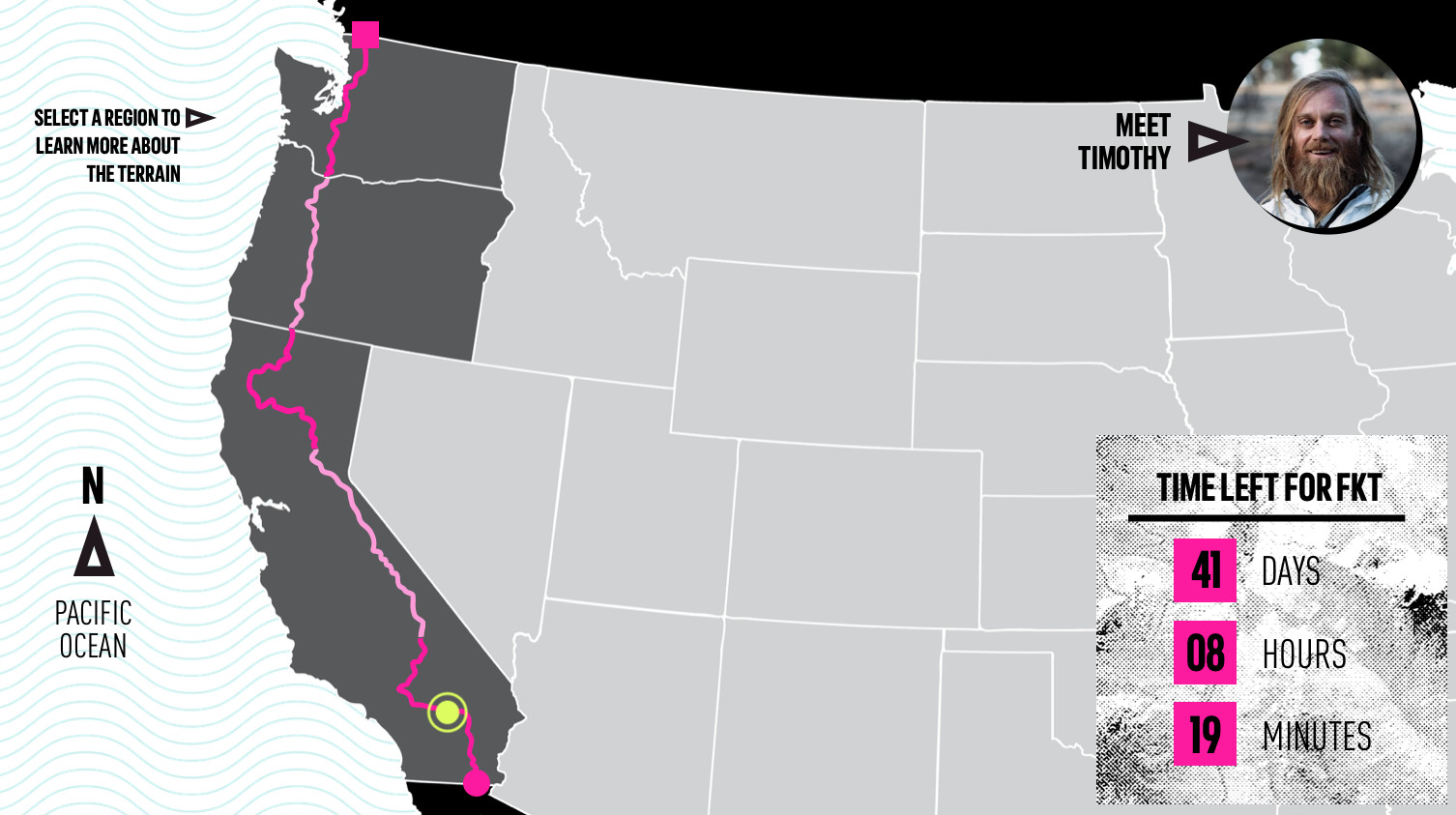
Region 1: Southern California
Campo to Walker Pass: Miles 0-652
The southern terminus of the PCT is near the aptly named California town of Campo. A shoulder-high monument a few yards from the wall marking the Mexican border is the official starting point. From there, the trail forges north through the Sonoran Desert, through the Laguna Mountains and into the Mojave. Daytime temps here can spike to the hundreds in June, so Timothy plans on predawn starts. And because there can be up to 30 miles of trail between water sources, he will rely on midday water resupplies from his team at road crossings and trailheads.
Region 2: Central California
Walker Pass to Donner Pass: Miles 652-1,157
From Walker Pass, near the town of Kernville, the trail dips to the South Fork of the Kern River, the geographic start of the Sierra Nevada. Arguably the PCT’s most difficult section, the trail through the High Sierra spends considerable time above 10,000 feet, includes eight passes over 11,000 feet, and peaks at 13,153-foot Forester Pass, the PCT’s high point. Timothy calibrated his early-June start time to reach the High Sierra when most of the snow should be melted, so he won’t have to lug heavy gear like crampons and ice axes. The crux of his effort will be the remote section from Sequoia National Park through Yosemite National Park, where the PCT merges with the famously majestic John Muir Trail for 160 miles. Timothy likely won’t see his resupply team for several days in this section.
Region 3: Northern California
Donner Pass to Oregon Border: Miles 1,157-1,689
This Northern California section begins where Interstate 80 crosses Donner Pass and continues through the High Sierra, but then gives way to the drier volcanic peaks and plains of the southern Cascades. From there to the Oregon border, the skyline is dominated by the Mount Shasta stratovolcano. Three to four weeks into the six-week effort, Timothy will need to listen to his body to stave off overuse injuries; he may have to sleep an extra hour or two or shorten his days to let his feet, knees, or shins heal. But with his experience and abilities, says coach Koop, “he can be three days off the record in this section and make it up in a single day.”
Region 4: Oregon
California Border to Washington Border: Miles 1,689-2,144
The easiest section of the trail, the PCT through Oregon contains fewer significant elevation changes, though the route is no less stunning, winding through old-growth forests, skirting alpine lakes, and connecting snowcapped volcanoes—including Mount Washington, Mount Jefferson, and the iconic Mount Hood—that dominate the skyline. But while the run should be easier physically, Timothy will likely be getting trail weary by this point. That’s where meeting up with his family at trailheads and road crossings will be a boost. “A hug from [my son] Kai and I’ll be energized to run all day,” he says.
Region 5: Washington
Washington Border to Canadian Border: Miles 2,144-2,650
Beginning at the trail’s lowest elevation, the Bridge of the Gods (180 feet) over the Columbia River, the Washington section rises past the talismanic peaks of mounts Adams and Rainier and then northward into the rugged and remote north Cascades, probably the PCT’s second most difficult section. In addition to presenting extreme elevation gains and losses and intense, dangerous river crossings, the north Cascades can be the PCT’s wettest section, with frequent summer storms that should test Timothy’s resolve and gear. “I’ll go several consecutive 60- and 50-mile days without seeing my crew—and may arrive at the border alone if the access from Canada is still closed.”
(06/12/2021) ⚡AMPby Outside On Line
Dina Asher-Smith aims for new peak in Tokyo
Dina Asher-Smith had just reached the peak of the mountain when she was plunged into the unknown.
Fresh from her triumph in the 200m, and a silver medal in the 100m, at the 2019 World Athletics Championships in Doha, where she was confirmed as one of the fastest women in the world, Asher-Smith had just begun her run into the Tokyo Olympic Games in 2020 when the whole world came to a screeching halt, her and her sport included.
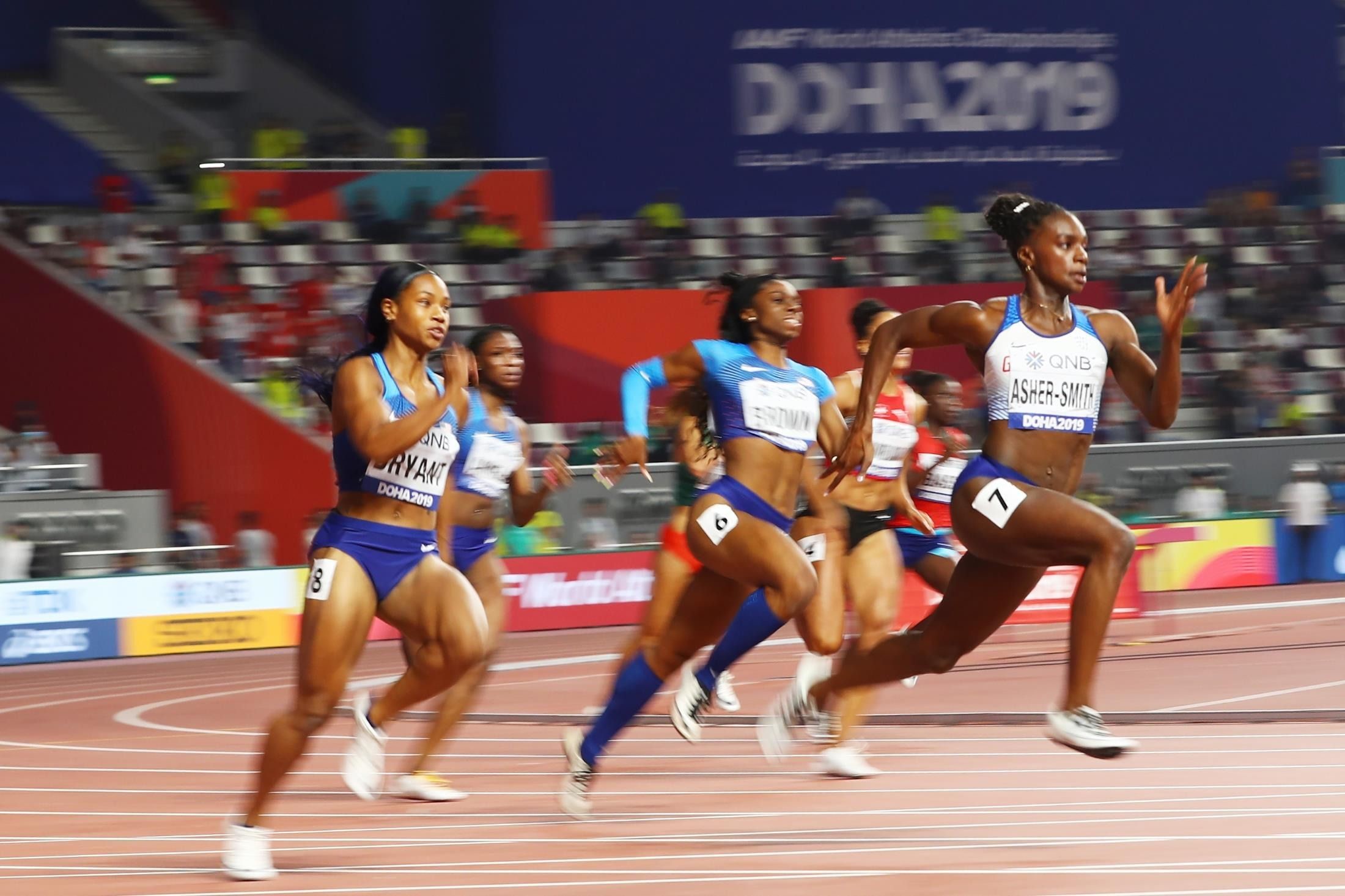
The 25-year-old Londoner could never have imagined voluntarily sitting out a year of international competition before the pandemic hit but that is what she elected to do when the world changed in March last year.
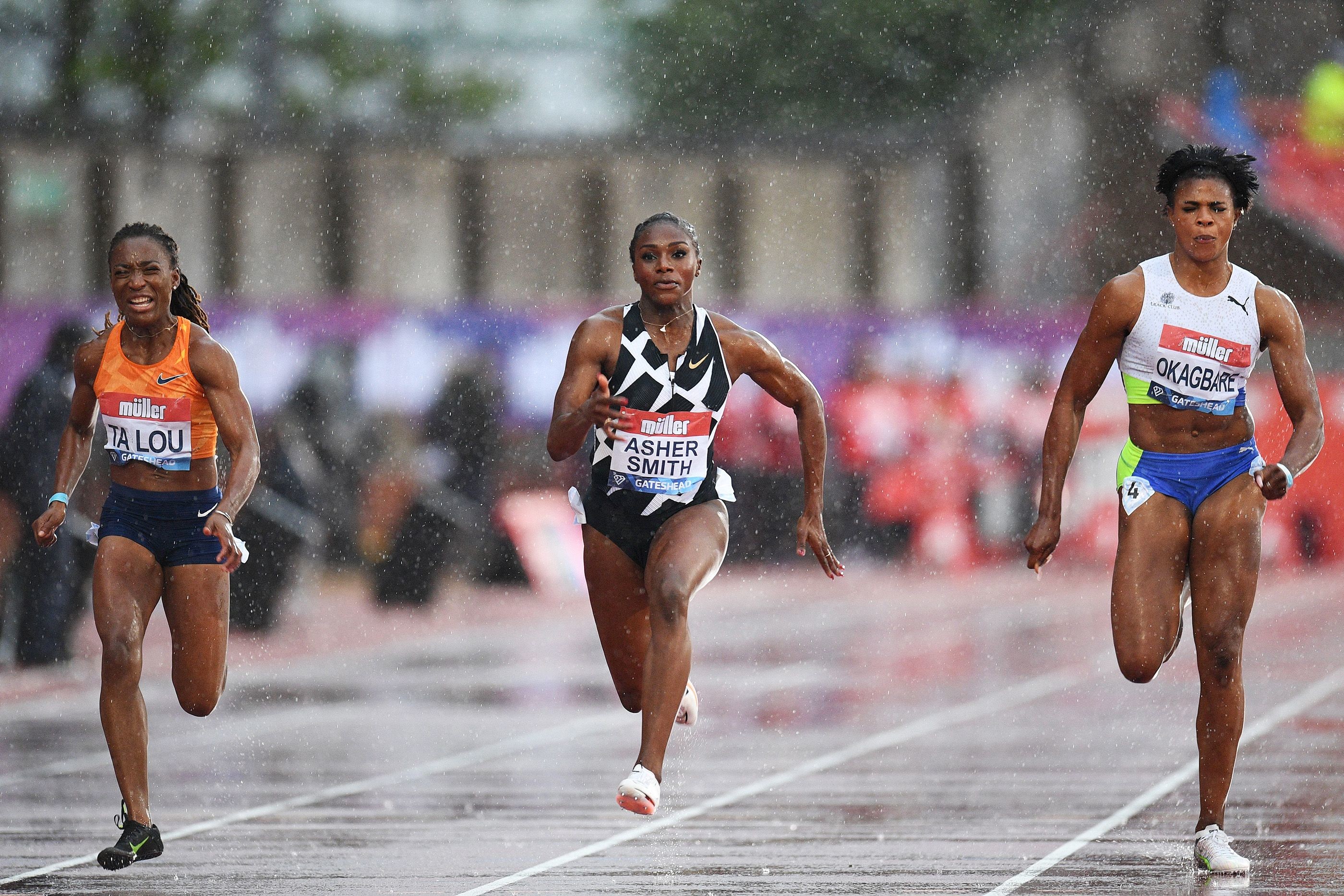
"We were in a situation that nobody around the world has been in before and I know that I was no different from anyone else," she reflected, after a triumphant return to the 200m in the Wanda Diamond League in Florence on Thursday (10).
"Every day I was worried for my parents’ health, my grandparents’ health. With that in mind, I was thinking, is it right for me to be bouncing around the world and doing that? I don’t know. That was my emotional frame.
"But also, from a more athletic point of view, we just saw it as: Okay, the Olympics have been postponed. If you had been given, or were forced, to have an extra year (of preparation), what would you do? For us, it was to get stronger, it was to improve my technique, it was to improve my mentality, my nutrition, my sleep, everything. So we really used the time to go up another level and I really hope that I can perform and show that’s what I was doing."
Asher-Smith admits it felt more like a risk than an unexpected gift at the time, stepping away from the known path to glory, sitting out while her rivals returned to racing in the latter part of last year. But she and her coach John Blackie believed it was the right approach for her and she trusts that the benefits will show when she finally arrives in Tokyo next month.
So far, it looks like a good decision.
Asher-Smith returned to the international scene last month, running, and winning, the 100m at the Gateshead Diamond League meeting against a stacked field that included the new American threat Sha’Carri Richardson and the dual Olympic champion Shelly-Ann Fraser-Pryce, and in appalling weather.
"You have to take the good performances when they come, so I was really happy to do well and do well in front of a home crowd," she said afterwards.
"I think psychologically it was good that I was able to focus in the circumstances - the fact that it was my first 100m, the fact that it was at home. It was suddenly a very big race for my first 100m against some incredibly talented women with some incredibly fast PBs, some incredibly fast times already run in the season and then the weather. I was just happy that despite all of those things happening in the background I was just able to focus on me and perform the way that I wanted to, at the end of the day."
She found better conditions at the FBK Games in Hengelo, a World Athletics Continental Tour Gold meeting, last week, where she registered her first sub-11 second clocking (10.92) of the season, before turning her attention to the 200m in Florence.
At the press conference before this meeting, she confessed she still felt a little race rusty, but it didn’t show as she dominated an international field to win in 22.06, just a touch slower than Shaunae Miller-Uibo’s world-leading time of 22.03 for this year.
"My team and I know I’m in good shape and I’m happy to come out and run that today but I know I can go quicker so I’m excited to be able to go again," she said.
What is already clear is that she will need to be better than ever to triumph in Tokyo. Richardson set the early season pace with a 10.72 clocking in April, then Fraser-Pryce blasted to 10.63 in Jamaica last week, the fastest time in the world for more than 30 years.
The British Championships and Olympic trials (June 25-27) are next on Asher-Smith’s agenda and then she has more international racing lined up, finishing with the second Diamond League meeting to be held in Gateshead on July 13, to bring her to a new peak in Tokyo.
(06/12/2021) ⚡AMPby World Athletics
Jakob Ingebrigtsen sets new European 5000m record
A 12:48.45 by 20-year-old Jakob Ingebrigtsen from Norway takes down a loaded men’s 5,000m field in Florence Italia and he records a new European record in the process!
2. Hagos Gebriwhet 12:49.02
3. Moh Ahmed 12:50.12
4. Mohammed Katir 12:50.79
5. Justyn Knight 12:51.93 PB
6. Joshua Cheptegei 12:54.69 - first 5K loss since July 2019
Imagine running a 12:51 5000 and it’s only good for 5th!
So yeah, how good is he?
Jakob Ingebrigtsen becomes the first man to simultaneously hold European records in both the 1500 and the 5000.
1500m 3:28.68
5000m 12:48.45
since 1966 by France's Michel Jazy
(06/11/2021) ⚡AMPChina will file criminal charges against 27 officials after deadly ultra marathon
China reported on Friday that it will file criminal charges and take disciplinary measures against 27 leaders and public officials who were found responsible for a disaster in a recent marathon, in which 21 runners died after an abrupt change in weather conditions.
After revealing the findings of an investigation, authorities in the northwestern province of Gansu mentioned, among the officials sanctioned, some leaders of the Communist Party and the administration of the county and city where the tragedy took place on May 22.

They emphasized that the incident occurred as a result of poor quality and unprofessional management.
The Gansu Government opened an investigation into the incident, as the marathon covered 100 kilometers and some parts of the route recorded temperatures close to zero degrees.

The mountain race was taking place in a forest in Baiyin County with 172 participants, but a spate of hail, freezing rain and gale force winds suddenly lashed a 20-30 kilometer section of the event, which included a high-altitude stage.
Organizers stopped the marathon when they found that many runners suffered physical discomfort and loss of body heat due to low temperatures, while some went astray. However, 21 died, including Asian champion Liang Jing and Paralympic star Huang Guanjun.
As a result of the incident, China suspended other similar competitions until it checked its safety mechanisms, as it detected flaws in their organization and logistics to respond to emergencies.
(06/11/2021) ⚡AMPby Prensa Latina
Tulsa’s Patrick Dever breaks record at NCAA Championships in Eugene
An exciting men’s 10,000m saw 10 athletes finish inside the 42-year-old meeting record of 28:01.30, led by Tulsa’s Patrick Dever who kicked to victory in 27:41.87, as NCAA Championships action got under way in Eugene, Oregon, on Wednesday (9).
Wesley Kiptoo had led a large group through half way before Alex Masai moved to the fore and pushed the pace. It was NCAA cross country champion Conner Mantz who put in a kick at the bell but he was joined off the final bend by Robert Brandt, Abdihamid Nur and Dever, who then found a gap on the inside. Passing the trio, he surged down the home straight to follow in the footsteps of his fellow Briton Marc Scott who had won the 2017 title, celebrating with his arms spread wide as he reached the finish line.

“There was a lot of moving around and a bit of jostling in the pack and it was just a case of keeping calm,” said GB international Dever, speaking on the broadcast coverage. “I really wanted to save something for the home straight because I figured if it were to come down to that, I would need to be ready.”
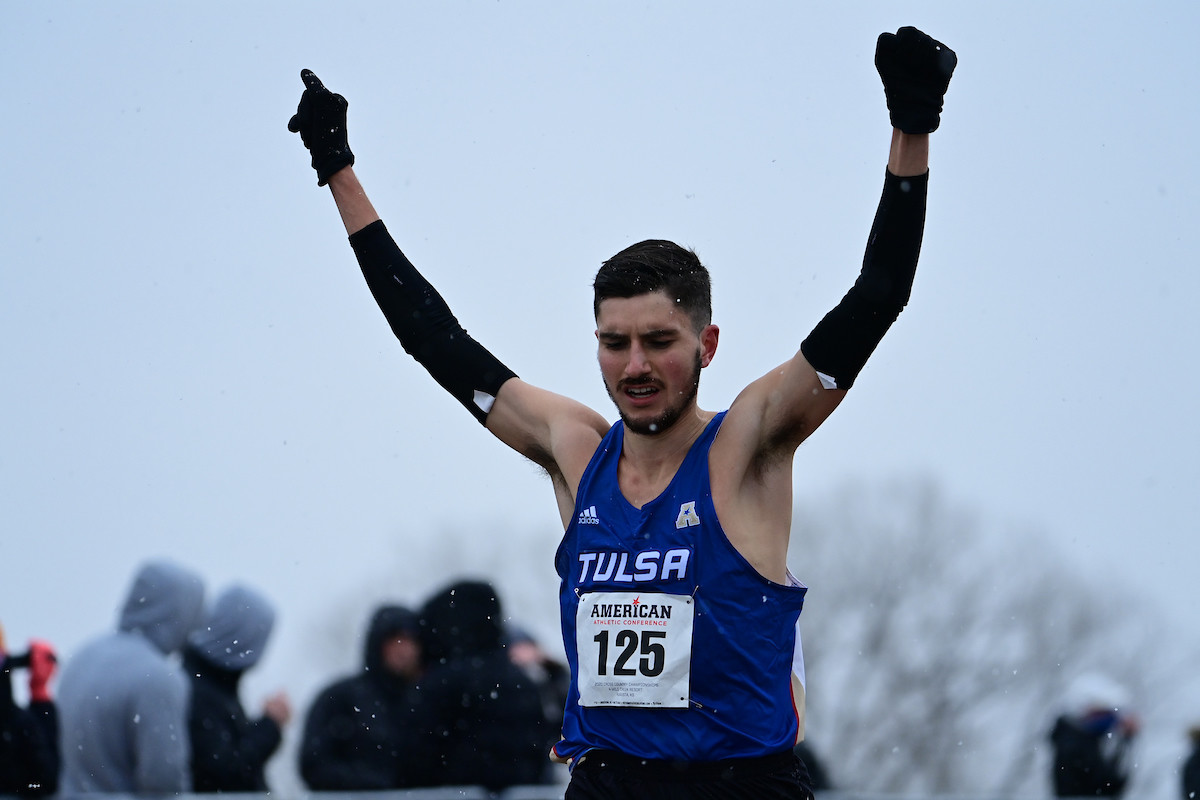
It was only his third ever track 10,000m following his debut in May, and he took 46 seconds off his previous best. He is also set to race the 5000m in Eugene on Friday.
Mantz was second in 27:42.46 and Nur third in 27:42.73. Dever’s 19-year-old compatriot Charles Hicks joined those dipping under the old meeting record with a time of 27:47.63 in seventh place.
LSU’s JuVaughn Harrison was also among the athletes in action on day one and the double NCAA indoor champion leapt 8.27m (1.9m/s) to win the long jump and will return to contest the high jump on Friday.
Branson Ellis won the pole vault with a 5.70m clearance, while Tzuriel Pedigo threw 76.98m to claim the javelin title. Indoor champion Turner Washington threw an outdoor PB of 21.10m to win the shot put and Thomas Mardal recorded 76.74m to lead the hammer results.
(06/11/2021) ⚡AMPby World Athletics
Sifan Hassan will tackle the mile at Müller British Grand Prix on July 13
Dutch endurance running phenomenon races over the classic distance at Wanda Diamond League event in Gateshead on July 13.
Sifan Hassan is the world record-holder in the mile and she is coming to the North East of England on Tuesday July 13 to race over that distance at the Müller British Grand Prix.

The 28-year-old’s mile record is 4:12.33 and she has been in terrific form this summer with a world 10,000m record in Hengelo on Sunday (June 6) and a big win in Florence over 1500m on Thursday (June 10) against Olympic 1500m champion Faith Kipyegon and European champion Laura Muir.

Hassan’s world record for 10,000m of 29:06.82 only survived two days before being beaten by Letesenbet Gidey of Ethiopia. But nevertheless she is also the world champion at 1500m and 10,000m, having beaten Gidey over the longer distance to take the global gold in Doha in 2019.
Hassan said: “I’ve raced several times in the past at events in the UK – at the Anniversary Games in London, meetings in Birmingham and Glasgow and of course the 2017 World Championships and 2018 World Indoor Championships. There is always a warm welcome, a great atmosphere and the fans have good knowledge of the sport.
“Running over one mile in Gateshead on 13th July gives me a chance to test my speed ahead of the Olympic Games. Maybe I can run a good time too although much will depend on the weather. Hopefully it will be warmer and drier than it was for the Diamond League in Gateshead last month!”
Hassan was born in Ethiopia but moved to the Netherlands as a refugee aged 15. She first made her mark internationally when winning the European under-23 cross-country title in 2013 and since then has developed into one of the world’s top endurance runners with incredible ability that ranges from 1:56.81 for 800m through to a European half-marathon record of 65:15. What’s more, she holds world records for the one-hour run with 18,930m and women’s only 5km of 14:44, plus European records at 1500m, 3000m, 5000m and 10,000m.
Gateshead staged the first Wanda Diamond League event of 2021 after it was moved from Rabat in Morocco to the North East of England and now, on July 13, the same venue will host the seventh Diamond League of the season after it was moved from its original home of London.
(06/11/2021) ⚡AMPby Athletics Weekly
Jakob Ingebrigtsen sets new European 5000m record
A 12:48.45 by 20-year-old Jakob Ingebrigtsen from Norway takes down a loaded men’s 5,000m field in Florence Italia and he records a new European record in the process!
2. Hagos Gebriwhet 12:49.02
3. Moh Ahmed 12:50.12
4. Mohammed Katir 12:50.79
5. Justyn Knight 12:51.93 PB
6. Joshua Cheptegei 12:54.69 - first 5K loss since July 2019
Imagine running a 12:51 5000 and it’s only good for 5th!
So yeah, how good is he?
Jakob Ingebrigtsen becomes the first man to simultaneously hold European records in both the 1500 and the 5000.
1500m 3:28.68
5000m 12:48.45
since 1966 by France's Michel Jazy
(06/11/2021) ⚡AMPBudget cuts force Quebec 2021 City Marathon cancellation
Gestev events and the Quebec Running Events Corporation announced Thursday that the annual Quebec City Marathon has been cancelled. The announcement comes on the heels of the Quebec City municipal authority’s decision to withdraw support for fifteen major events, including the marathon, which was set to take place from October 1-3 this year.
The government of Quebec’s reopening plan, announced on May 18, gave the green light to sporting activities as of June 25, and organizers of the marathon were committed to delivering a safe and secure event in the strictest compliance with public health measures. Without funding from the city, however, the event cannot go on.
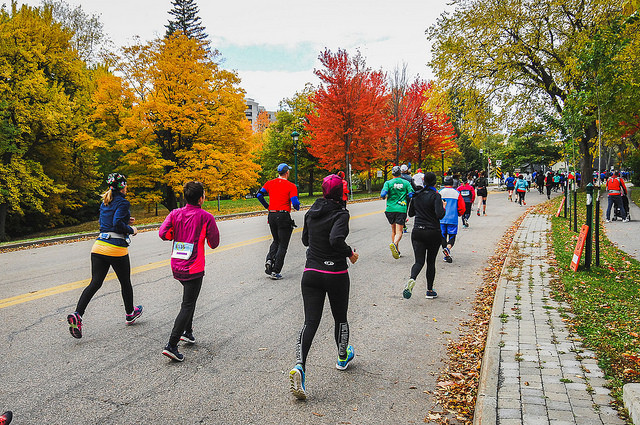
The Quebec City Marathon has been held every August since 1998 until COVID-19 forced the 2020 event to be cancelled for the first time in the event’s history. At its peak, the marathon weekend has attracted up to 12,700 participants across the marathon, half-marathon, 10K, 5K and children’s race. The marathon is a point-to-point race that has runners begin on the south shore in Levis and finish on the north shore in Old Quebec.

For anyone who has already signed up, registered entrants will have the option to transfer their registration to the Lévis Half-Marathon, scheduled for the weekend of August 28–29. The race is being held over two days instead of one to comply with the province’s public health regulations, making it possible to accommodate a maximum of 5,225 entrants across the half-marathon, 10K, 5K and 2K kids’ race. Entrants who do not wish to transfer their registration will also have the option to receive a full refund.
The Quebec City Marathon is a favorite among both Quebec runners and participants from other provinces, and runners across the country will be saddened to hear that it will not take place for the second year in a row. The good news is, the race is not cancelled forever and organizers are assuring Canadian runners that the marathon will return in October 2022.
(06/10/2021) ⚡AMPby Brittany Hambleton
Marathon SSQ Quebec
The revamped marathon route retains its urban, postcard character and focuses on the most beautiful attractions of Quebec City, a world heritage site. The route, although recently modified due to the preparatory work for the future tramway, crosses three boroughs and nine districts. It is a condensed tour of the city and a excellent sporting challenge with the most beautiful...
more...A university student in China serving as a Cameraman, beats sprinters to the line in 100m race
A university student in China has gone viral, thanks to a video that shows him running ahead of sprinters in a 100m race while filming the action.
The student, who has yet to be named, stole the show at the race, and while he did have a head start of a few metres, his run was still incredibly unexpected and impressive.
Not much has been said on the cameraman’s run yet, although the outlet that first posted the video, Shanghai Eye, wrote that his camera weighed four kilograms, or about eight pounds. Running with something of that size could easily disrupt one’s stride, and that’s not even taking into account the fact that the student made sure to keep his arm outstretched and the camera pointed at the racers all the way to the finish.
He also didn’t appear to be dressed for a run (it looks like he was wearing jeans and a jacket), making his performance even more spectacular.
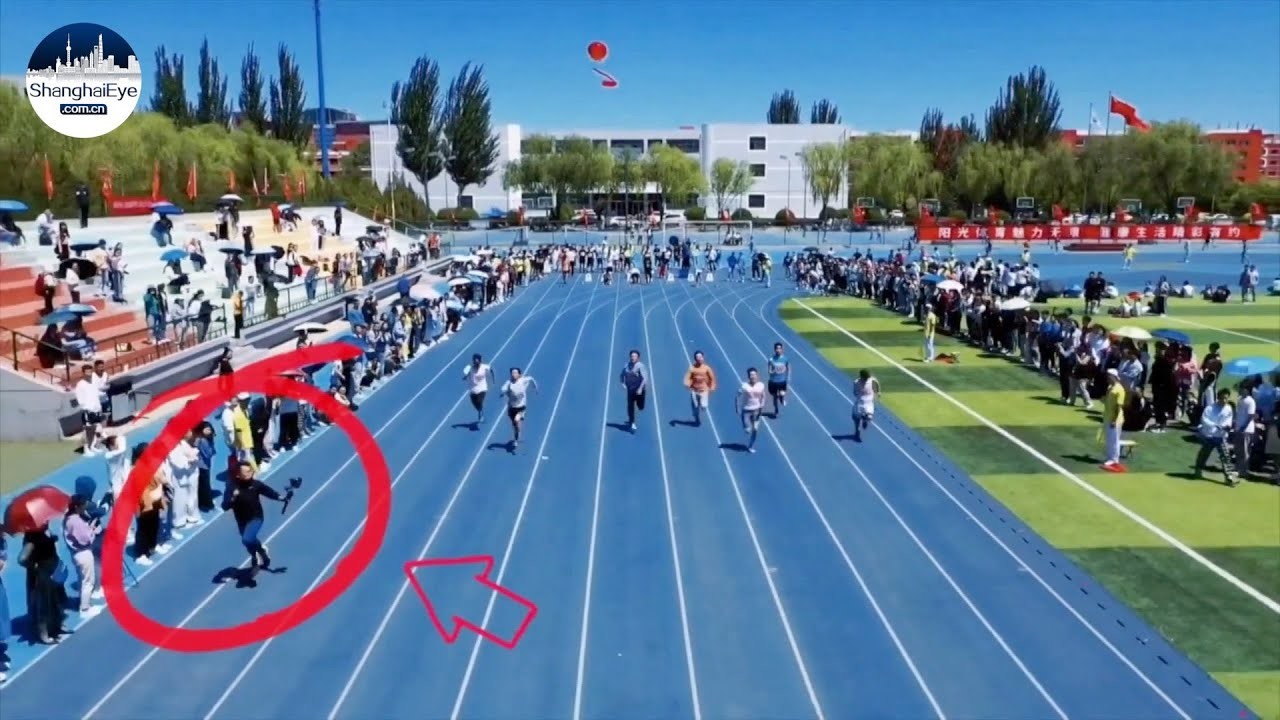
Powerade once produced an ad quite similar to this video. The commercial starts in the final stretch of a 10,000m race as the announcer names the three runners who are fighting for the win. As the shot pans forward, a cameraman can be seen sprinting alongside the leaders, running stride for stride with them.
“Is that our cameraman?” the announcer shouts. “He’s run the entire race with that camera on his shoulder.” The cameraman crosses the line in first place, and then a bottle of Powerade appears on the screen. It’s a funny ad, and life appears to have imitated art in this instance. That commercial can be viewed here.
This race in China is real, though, and it’s a must-watch video. There’s no word on whether the student’s footage was usable (it could have been pretty shaky), nor why he decided to go so hard for the shot. Maybe he needed extra credit in a film class.
(06/10/2021) ⚡AMPby Ben Snider-McGrath
Barred from competing in her preferred event of the 800m, Burundi´s Francine Niyonsaba has now qualified for the Tokyo Olympics in both the 5,000m and 10,000m
Burundi’s Francine Niyonsaba, the 800m silver medallist at the Rio Olympics, qualified for the 10,000m at the Tokyo Games on Tuesday after running under Olympic standard at the Ethiopian Trials in Hengelo, the Netherlands.
The race was Niyonsaba’s first at the distance, but her 31:08.51 finish beat the Burundian national 10,000m record by 20 seconds. Longer races are still quite new to the previously middle-distance specialist, but a 2019 World Athletics ruling now prevents Niyonsaba and other athletes with DSD (differences of sexual development) from competing in any event between 400m and the mile, as officials determined that the higher-than-usual (but natural) testosterone levels in these athletes gives them an unfair advantage over their competitors.
Niyonsaba has had an amazing past few weeks. World Athletics’ DSD athlete ruling gave her three options: compete in races shorter than 400m, jump up to events longer than the mile or take medications to lower her testosterone levels. She picked the long route, and after not racing at all in 2020 and the first half of 2021, she jumped into the first 5,000m race of her career in late May at an event in Spain.

At that race, Niyonsaba came close to the Olympic standard of 15:10.00, running 15:12.08. Just over a week later, she was back in action, this time in France, where she not only managed to beat standard, but also broke 15 minutes with a 14:54.38 run. Both of Niyonsaba’s 5,000m races broke the Burundian national record in the event.
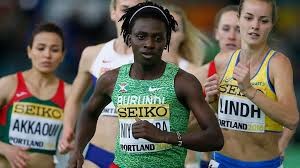
She wasn’t done there, though, and although it was a big jump from the 800m up to the 5,000m, Niyonsaba took another leap on Tuesday and committed to a 10,000m race. With her ticket to the Tokyo Games already booked and nothing to lose, she stunned everyone with yet another Olympic-qualifying run, dipping well under the standard of 31:25.00 with her 31:08.51 finish in Hengelo (in the same race that Letesenbet Gidey broke the 10,000m world record with her 29:01.03 performance).
As listed on Niyonsaba’s WA profile, her two latest races bring her national record tally to seven. She has competed in eight different events throughout her career as an elite runner, and she failed to run a Burundian record in only one of them, the 600m. She is without a doubt one of the greatest athletes Burundi has ever produced, and she’s still fighting for more as she races toward the Tokyo Olympics.
(06/10/2021) ⚡AMPby Ben Snider-McGrath
Tokyo 2020 Olympic Games
Fifty-six years after having organized the Olympic Games, the Japanese capital will be hosting a Summer edition for the second time, originally scheduled from July 24 to August 9, 2020, the games were postponed due to coronavirus outbreak, the postponed Tokyo Olympics will be held from July 23 to August 8 in 2021, according to the International Olympic Committee decision. ...
more...2021 Richmond Marathon will return to normal downtown, in-person format this fall
The Richmond Marathon will be back Nov. 13 and it will look just like any other year, except for 2020 of course.
The 26.2 mile race, along with the half marathon and 8k will all be in-person and start in downtown Richmond.
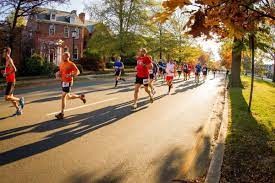
Interested runners can sign up for the events online now, the price will increase on July 1.
“We are excited to return to our traditional format for the VCU Health Richmond Marathon and join together to celebrate all the aspects of race weekend that participants look forward to when running Richmond,” said Jon Lugbill, Executive Director of Sports Backers. “Events like this help make the Richmond region a vibrant place to live, work, and visit, and we can’t wait to welcome everyone back to downtown Richmond in November.”
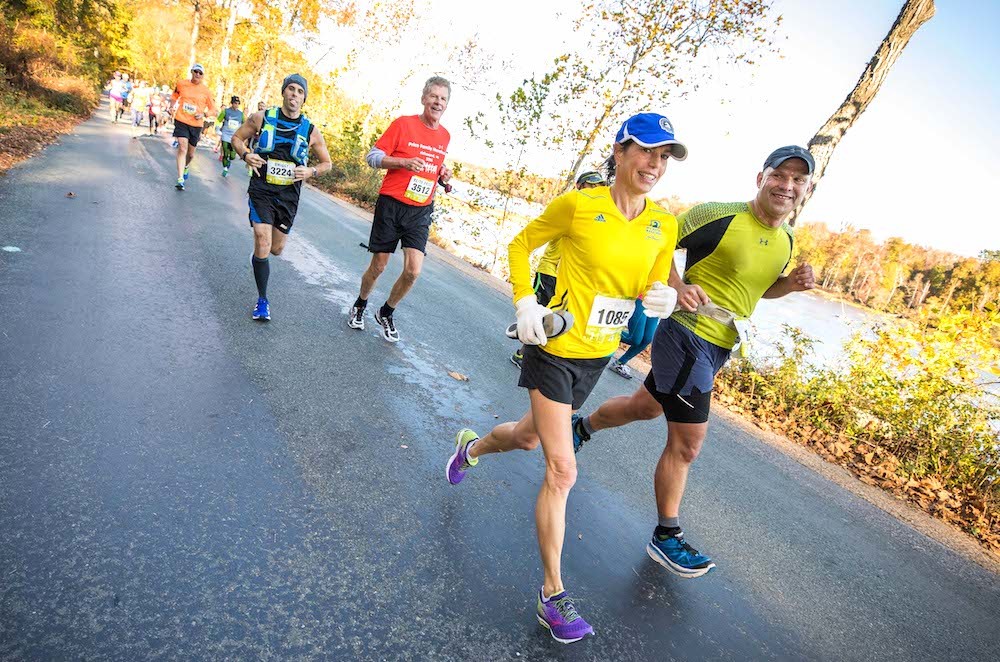
The marathon will end near Tredegar Street.
Last year the marathon was spread out over multiple days but runners were still able to cross a finish line.
Many people participating in the marathon and half marathon join a training team. The Sports Backers’ Marathon Training Team starts in-person group training this weekend.
(06/10/2021) ⚡AMPby Emma North
Anthem Richmond Marathon
Haven’t run Richmond yet? What are you waiting for?! The Anthem Richmond Marathon has a scenic course that winds through the city’s most historic and beautiful neighborhoods and runs over and along the James River. We love to show off the river so much that we even moved our finish line and post-race party to the riverfront. We’ve earned our...
more...Olympics athletes will be monitored by GPS at Tokyo Games
Athletes at this summer's Olympics will be subject to GPS monitoring, says Tokyo 2020 organising committee chief Toshiro Muto.
The system will not be used to track their real-time movements but to trace them retroactively if issues arise around Covid-19.
International members of the media will also be subject to monitoring.

Muto said it had not yet been decided if alcohol would be allowed in the athletes' village.
Tokyo remains under a state of emergency amid a surge in Covid-19 cases, with the start of the Olympics just over six weeks away.
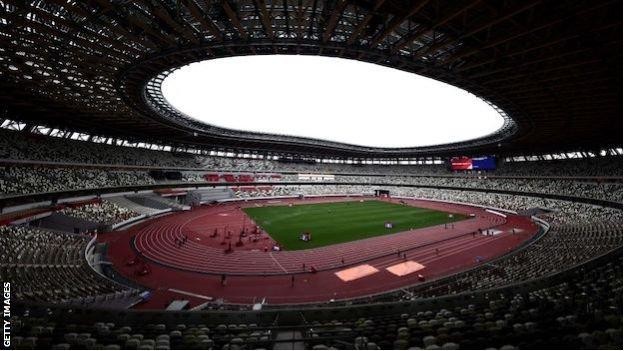
They are set to run from 23 July-8 August, with the Paralympics following from 24 August-5 September.
Muto said it would be of "great regret" if athletes from some countries where the Delta variant of coronavirus is spreading were unable to participate.
Border controls have been strengthened in recent weeks in Japan, but insiders said they would not impact "Games-related entries".
Earlier this week it was decided people arriving from the UK would need to quarantine on arrival for six days rather than three.
However, the British Olympic Association says it has not been told of "any further restrictions facing the British delegation" beyond those outlined in the playbook for the Olympics.
(06/09/2021) ⚡AMPTokyo 2020 Olympic Games
Fifty-six years after having organized the Olympic Games, the Japanese capital will be hosting a Summer edition for the second time, originally scheduled from July 24 to August 9, 2020, the games were postponed due to coronavirus outbreak, the postponed Tokyo Olympics will be held from July 23 to August 8 in 2021, according to the International Olympic Committee decision. ...
more...Olympic champion Conseslus Kipruto eyes perfect debut in Diamond League
Olympic 3,000m Steeplechase champion Conseslus Kipruto will compete for the first time this year in Thursday's Florence Diamond League in Italy.
The third leg of this season's Diamond League will see less Kenyan athletes in action with many preparing for the Olympic Games national trials slated for June 17-19 at Kasarani.

Kipruto will battle world bronze medalist Soufiane El Bakkali from Morocco, Ethiopia’s Takele Tadese, his compatriot Wilberforce Kones, Uganda’s Albert Chemutai among others in the 3,000m Steeplechase race.
The Kenyan started training late after a long break that was caused by the coronavirus pandemic, which saw the suspension of sporting events.

Speaking to Nation Sport via phone, Kipruto revealed that he will run to see if he is fit ahead of next month's Tokyo Olympic Games, which he has already qualified for.
“I started training recently and my preparations are not perfect, but I will be running today (Thursday) just to see where I need to improve ahead of the Olympics Games. I’m using the 3,000m race to improve on my speed,” said Kipruto, who has been training in Mosoriot, Nandi County.
After the Florence meet, Kipruot will head back home to prepare for the Olympic national trials where he hopes to defend his title over the distance.
Another Kenyan in action Thursday night is Olympic 1,500m race Faith Chepng'etich, who line up in her specialty as she seeks to improve her performance ahead of the trials next week.
She will renew hostilties with her rival Dutch’s Sifan Hassan, Great Britain’s Lura Muir, Ethiopia’s Hailu Lemlem, Winnie Nanyondo from Uganda, among others.
Faith is in form this season, having clocked a best of 1:58.26 in the 800m at the Doha Diamond League meet last month.
Robert Kiprop will be the sole Kenyan in the 5,000m race, which has favorite Uganda’s Joshua Cheptegei, Ethiopia’s Edris Muktar, siblings Jakob Ingebrigtsen and Henrik Ingebrigtsen from Norway among others.
(06/09/2021) ⚡AMPby Bernard Rotich
Time is running out for Caster Semenya as African Championships have been cancelled
The African Athletics Championships in Lagos have been cancelled because of the COVID-19 pandemic, removing another avenue for South African runner Caster Semenya to qualify for the Tokyo Olympics.
The event was scheduled for Lagos later this month after Nigeria had stepped in at the last moment to replace Algeria as hosts, but the Nigerian government has disallowed the event due to COVID-19 concerns.
Semenya, who is hoping to qualify for the 3000m and 5000m races, is waiting on a ruling from the European Court of Human Rights over her testosterone-related ban from her preferred races of 800m and 1500m.
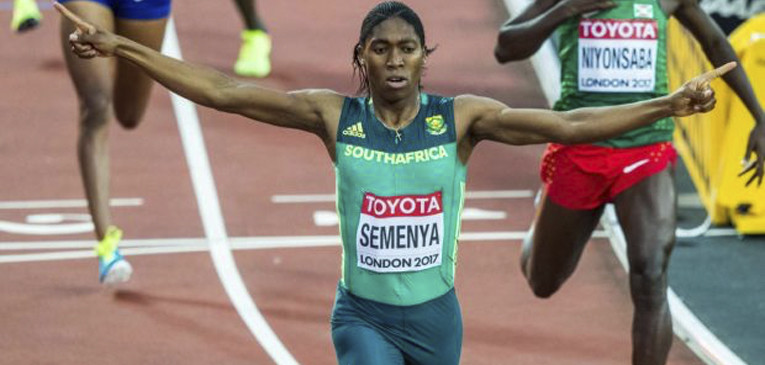
She had been intending to use the African Championships to qualify in the 5000m, after failing to do so at a recent meet in Pretoria.
The Confederation of African Athletics (CAA) said on Tuesday: "It is with great regret that we announce the cancellation of the Senior African Championships which were scheduled in Lagos from June 23-27.
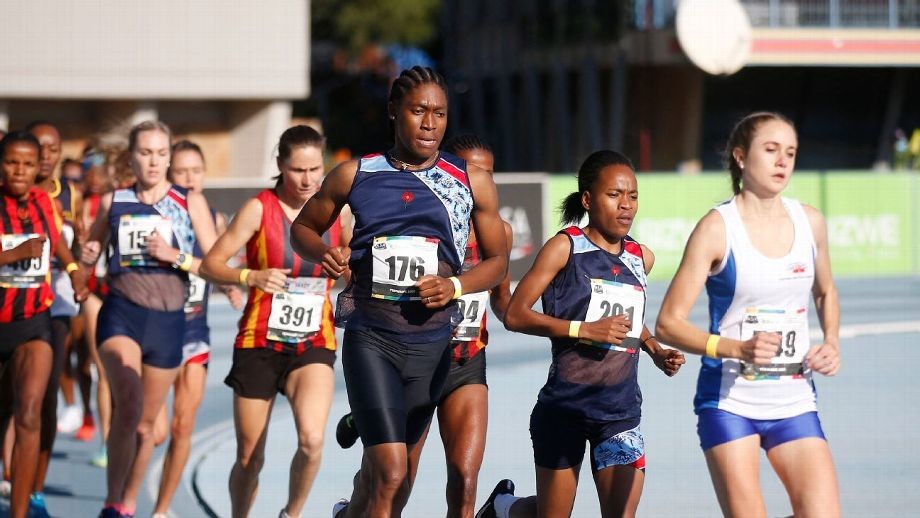
"Unfortunately, Nigeria, which pledged to host, has since told us their authorities have not given permission to host such a large-scale competition."
While there are no other plans for continental meetings to allow athletes to obtain the required qualification standards for Tokyo, South African athletes still have a number of opportunities to qualify before the cut off date of June 29.
James Moloi, president of Athletics South Africa, said on Tuesday: "Most of Africa and indeed, the major part of the world, is still being held hostage by the pandemic.
"It's a pity, therefore, that our athletes will not be benefitting from the great competition that the African Champs offer and it's unlikely that there will be another opportunity to host the continental event before the Olympic Games.
"However, this is not entirely a lost course for our athletes who are still looking for competition to qualify for the Games as there are several competitions that are available in our domestic calendar at our ASA provinces."
He added of Semenya's races: "KZN Athletics, for instance, will include the 5000m events in their Middle Distance Meeting [on 18 June]."
Travel restrictions make it difficult for athletes to go to meetings in Europe or the US, leaving many African athletes with few options over the next three weeks.
(06/09/2021) ⚡AMPby Lindsay Du Plessis
Tokyo 2020 Olympic Games
Fifty-six years after having organized the Olympic Games, the Japanese capital will be hosting a Summer edition for the second time, originally scheduled from July 24 to August 9, 2020, the games were postponed due to coronavirus outbreak, the postponed Tokyo Olympics will be held from July 23 to August 8 in 2021, according to the International Olympic Committee decision. ...
more...New world record for women’s 10,000m
Ethiopian Letesenbet Gidey lowered the women’s 10,000m world record, two days after Sifan Hassan broke it on the same track in Hengelo, Netherlands.
Gidey, who on Oct. 7 broke the 5000m world record, clocked 29:01.03 at the Ethiopian Olympic Trials (yes, the Ethiopian Trials are being held in the Netherlands). She took 5.79 seconds off Hassan’s record from Sunday.
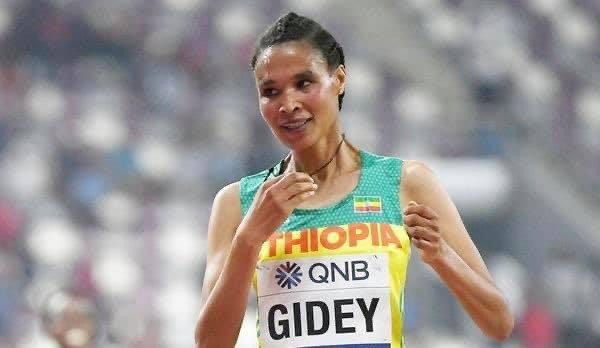
Hassan, an Ethiopian-born Dutchwoman, brought the record down 10.63 seconds from Ethiopian Almaz Ayana‘s winning time at the 2016 Rio Olympics.
In total, 30.75 seconds have been taken off the world record starting with Ayana in Rio. Before that, the mark of 29:31.78 set by dubious Chinese runner Wang Junxia had stood since 1993, and nobody else had run within 22 seconds of it.
All four men’s and women’s 5000m and 10,000m world records have been broken over the last 10 months. Runners have benefited from technology — new spikes and pacing lights on the track.
In 2019, Gidey took 10,000m silver at the world championships. In 2020, she took 4.5 seconds off countrywoman Tirunesh Dibaba‘s 12-year-old 5000m world record.
Gidey, 23, was previously briefly expelled from school for refusing to run in physical education classes.
(06/08/2021) ⚡AMPCanadian Stephanie Simpson to attempt Canadian 100-mile record on June 12 at the Montreal 24-hour Endurance Challenge
Canadian ultrarunner Stéphanie Simpson will be attempting to break the Canadian 100-mile (160 km) record this weekend at the Défi 24 heures Endurance (24-hour endurance challenge) in Montreal, Que. The current Canadian record, held by Michelle LeDuc of Russell, Ont., is 15:19:45, and Simpson’s goal is to not only beat that time, but to complete the distance in 14:45.
Simpson began running in 2008 as a way to deal with stress when her mother was sick. She started the way many of us do, running shorter distances like 5K’s and 10K’s, eventually working her way up to half-marathons and marathons. She completed her first 50-kilometer ultramarathon after the birth of her first child in 2015 and never looked back. She was relatively unknown in the world of ultra trail running until last October when she became the Canadian winner at Big’s Backyard Ultra, running for 43 hours to lead Team Canada to a third-place finish.
So what does the training for a record attempt like this look like? For Simpson, it’s been fewer really long runs and more speedwork.
“I haven’t run really long distance since the Backyard,” she says. “Since then, I haven’t done anything above 50, but I’ve still been doing big weeks of 200 kilometers. I’ve been doing more speed lately, because you need some kind of speed to run for that long at that pace.”

To run her goal time, Simpson will need to maintain a pace of 5:29 per kilometer. Because the event is a 24-hour race, her plan is to get through 100 miles in her goal time, then see what happens with the rest. The Canadian 24-hour record is 238 kilometers, and while that record isn’t her main goal, two records in one race isn’t out of the realm of possibility. Regardless, in order to achieve her goal, Simpson says mindset and confidence are the two main keys to success.
“A hundred-miler at that pace is really mental, so you have to be really really ready,” she says. “I’ve been visualizing everything that could happen, and when you run those kinds of distances, you have to be really confident in your plan — that’s the only way you’re going to get through 100 miles.”
Simpson will be running with seven other local runners around the outdoor track at McGill University. The race is set to begin at 8 am this Saturday, June 12, and if all goes according to plan, she should reach the 160-kilometer mark just before 1 a.m. on Sunday.
(06/08/2021) ⚡AMPby Brittany Hambleton
Study suggests that Increasing your stride rate will decrease your risk of injuries
When stride rate first entered the running conversation, the main focus was performance, with the idea that increasing your stride rate would make you run faster. In recent years, that focus has shifted to injury prevention, and studies have correlated a quicker stride rate with a decreased risk of injuries.
A recent study of Division 1 university cross-country runners has added more evidence to support this theory, finding that a low step rate was a risk factor for bone stress injuries.
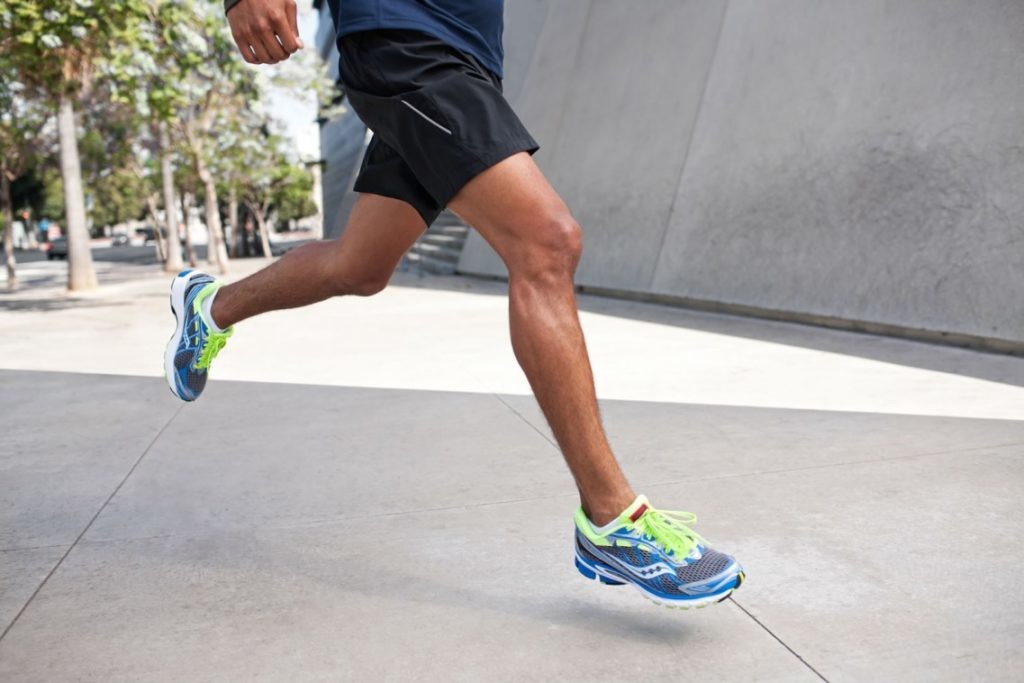
The study
The researchers conducting this study (which was published in the British Journal of Sports Medicine) observed 54 healthy collegiate cross country runners over three consecutive seasons. They collected a variety of different measurements, including whole-body kinetics, ground reaction forces and bone mineral density using motion capture on an instrumented treadmill and total body densitometer scans. They then tracked how many of those athletes developed a bone stress injury up to 12 months after that data was collected.
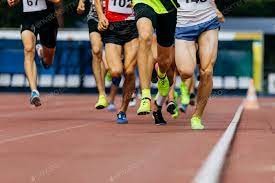
The result? Athletes with a higher step rate were less likely to develop a bone stress injury (like a stress fracture). In fact, for every increase of one step per minute, the athletes’ risk of bone stress injuries was decreased by five per cent. In conclusion, “Low step rate is an important risk factor for BSI among collegiate cross country runners and should be considered when developing comprehensive programmes to mitigate BSI risk in distance runners,” the researchers wrote.
Apply this to your running
So what does this mean for the everyday runner? Increasing your stride rate (i.e. — shortening your stride) can help decrease your risk for injuries, particularly bone injuries. Before you do this, however, you need to know what your current stride rate is. To figure this out, all you have to do is count your steps. On your next run, once you’ve settled into your normal pace, count your steps for 30 seconds, then multiply that number by two to determine how many steps you take per minute.
To increase your stride rate, Nova Scotia runner and physiotherapist Robbie MacDonald suggests running with a metronome app. This way, you can set how many steps per minute you want to take, and try to match your stride to that cadence. MacDonald recommends runners try to maintain a stride rate between 170 and 190 steps per minute. If you enjoy running to music, try choosing songs that fall within that beat range, and try to sync your steps with the music.
(06/08/2021) ⚡AMPby Brittany Hambleton
Tata Consultancy Services to become the title partner of London Marathon from 2022
This year’s ambition is for 50,000 runners to take part in the mass participation event from Blackheath to The Mall
Tata Consultancy Services (TCS) will become the title partner of the London Marathon from 2022, following this year’s race on October 3.
TCS has a historic track record with major marathons across the world, including New York, Amsterdam, Singapore, and Mumbai. London will be the second Abbott World Marathon Major where TCS is the title partner and the fourth where TCS is the partner, as well as its seventh title partnership globally.

TCS plans to use digital innovation to further enhance the event experience for all future races which will continue to be a hybrid of physical and virtual events. This year’s ambition is for 50,000 runners to take part in the mass participation event from Blackheath to The Mall, and a further 50,000 in the virtual event.
“The London Marathon was founded on the core belief that the family of mankind can be united. TCS is building innovative and impactful technology solutions to help realize this belief, and inspire people to believe in themselves,” said Amit Kapur, Country Head, TCS UK & Ireland. “We are pleased to take on the role of title partner and lead the way in driving the future success of physical and virtual London Marathons.”

“We are delighted to welcome TCS as the new title partner of the London Marathon from 2022. This is a landmark day in our history, and we look forward to working with TCS to evolve and grow our digital reach, inspire millions more to become active and develop opportunities to raise even more for charities. TCS has been an integral part of the Marathon for the past five years, delivering the latest technology to enhance the marathon experience for participants and spectators.
This new title partnership marks the dawning of a new era in what we can achieve together,” commented Hugh Brasher, Event Director of the London Marathon.
(06/08/2021) ⚡AMPTCS London Marathon
The London Marathon was first run on March 29, 1981 and has been held in the spring of every year since 2010. It is sponsored by Virgin Money and was founded by the former Olympic champion and journalist Chris Brasher and Welsh athlete John Disley. It is organized by Hugh Brasher (son of Chris) as Race Director and Nick Bitel...
more...American Record Holder and former United States Olympian Alan Webb is set to Run Grandma's Marathon
Once, and perhaps still, a household name in short-distance running, former United States Olympian Alan Webb will make his 26.2-mile debut later this month at the 2021 Grandma’s Marathon.
Webb, who still owns the American record in the mile with a time of 3:46.91, competed in the 2004 Athens Olympics in the 1500-meters and also won three gold medals at the USA Outdoor Track and Field Championships.
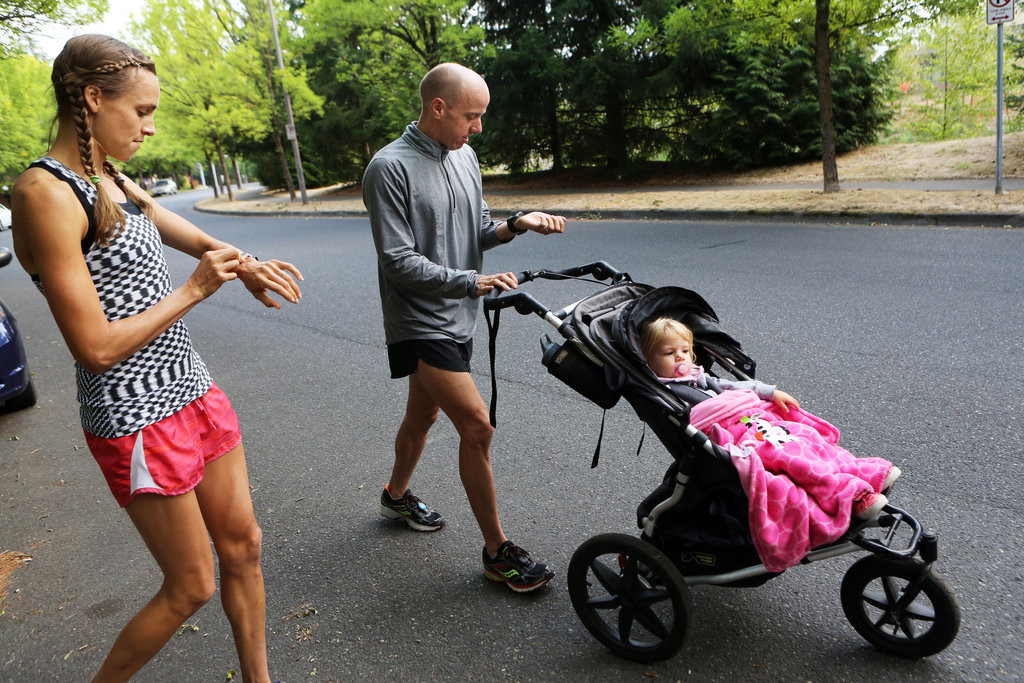
Now an assistant cross country and track and field coach at the University of Arkansas Little Rock, he says the timing is right to try the longer distance.

“I’ve always heard good things about Duluth and about Grandma’s Marathon,” Webb said. “I’m not so much running now to be competitive, I’m running because I love to do it and because of what the sport has meant to me my whole life. The timing of Grandma’s works well for my coaching schedule, and I’m excited to come to Minnesota and to run on this beautiful course.”
Webb made his half marathon debut on May 29 at the Great American River Run in Memphis, Tenn., finishing in fourth place with a time of 1:13:14.
Webb and his wife, Julia, are currently living in Little Rock, Ark. and have three children.
The 45th annual Grandma’s Marathon weekend will be held June 17-19, 2021.
(06/08/2021) ⚡AMPby Running USA
Grandmas Marathon
Grandma's Marathon began in 1977 when a group of local runners planned a scenic road race from Two Harbors to Duluth, Minnesota. There were just 150 participants that year, but organizers knew they had discovered something special. The marathon received its name from the Duluth-based group of famous Grandma's restaurants, its first major sponsor. The level of sponsorship with the...
more...Organizers hope up to 35,000 can run this September 2021, Berlin Marathon
Organizers hope that up to 35,000 runners can take part in the Berlin marathon this September as part of a pilot project as Germany eases Covid-19 restrictions.
In a joint press conference Monday, Berlin's senate and marathon organizers outlined plans to first hold two test events, a 10km race in July and a half marathon in August.

Providing all goes well and the rate of infection remains low, the Berlin marathon would take place on September 26.

Runners would either have to prove they are fully innoculated or undergo a PCR test as part of a hygiene programme still to be approved by Berlin's health authority.
"There is no certainty that the Berlin Marathon can take place, but the probability is there," said Berlin senator Andreas Geise.
"If the incidence rates continue to fall, approval of the pilot project is conceivable."
A maximum field of 35,000 would be 10,000 down on the 45,000 who took part in the 2019 Berlin marathon, the last one before the 2020 race was cancelled due to the pandemic.
The official world record for the men's marathon was set in Berlin in 2018 when Kenya's Eliud Kipchoge ran the 42.195kms (26.2mi) in two hours, 1:39 minutes.
The top three fastest race times for the men's marathon have all been run in Berlin.
(06/07/2021) ⚡AMPby France 24
BMW Berlin Marathon
The story of the BERLIN-MARATHON is a story of the development of road running. When the first BERLIN-MARATHON was started on 13th October 1974 on a minor road next to the stadium of the organisers‘ club SC Charlottenburg Berlin 286 athletes had entered. The first winners were runners from Berlin: Günter Hallas (2:44:53), who still runs the BERLIN-MARATHON today, and...
more...Unconventional and creative ways that you never thought could help you in shape
They tell us that keeping in shape is all about hard work, dedication, and sticking to a strict diet. This is only somewhat true, as indeed this will give you a fit and healthy body if you are persistent enough, though that is not the only way of doing it. A bit unconventional, but there are things you can do to stay in great shape that does not fit into the previous list of activities.
Things like eating more, clubbing, and sleeping don’t come to mind when thinking about fitness, yet they can indeed help us get and maintain a lean body if applied correctly. See what else you can do below, and we’re sure you haven’t thought of at least one of those on the list.
A Corset-Like Figure

A very famous silhouette, showing up every few centuries but having its peak in the female corset of the Victorian era, reminds us mostly of an hourglass figure. Or a pigeon breast and a wasp waist, if you will. This idealized body is of course unobtainable naturally, and can only be achieved by wearing tight-fitting clothing or via some surgery. But considering how a narrowed waist helps stabilize the spine, there is a certain benefit here.
Heavy weightlifters carry a similar type of clothing – a weight belt, that helps keep the back straight during deadlifts and squats. Wearing similar narrow-waisted clothing will not only give you proper posture but will also push your stomach in a bit thus restricting your appetite. Just make sure to keep the chest unbound, as restricted breathing is not a good thing.

Sleep Your Way to a Fit Body
While we sleep, a lot is happening to our bodies, even though we are presumably only resting and lying down. Sleep is needed for our muscles to recover after heavy exercise or labor, and for our mind to rest from all the thinking we’ve been doing.
Though depending on how old you are and what you do, you will need different amounts of sleep to become fully rested. You can try out this sleep calculator to see what fits you best. Getting too little sleep is detrimental to your health and should be avoided. As we sleep or rest, the muscle tissue that has been micro torn during physical activity regenerates to build bigger and stronger muscles. So exercising too much and having too little rest will not bring you any good body-wise.
Eat More!
Absurd as it may sound, there are scenarios where eating more is good for staying in shape. There are two cases for this, different but with some overlap. If you are underweight, as was the case with people for many centuries until the current age, then eating sufficiently is not only good for your organism to get all the nutrients and energy it needs, but to build up a pleasant-looking outside too. Proteins in food help build muscles and organs and are therefore essential in any diet. It would be very difficult to completely avoid proteins in a normal diet because finding protein-rich food is rather hard. But turning to tuna, chicken breasts, or lean beef – you can get plenty of protein in and your body will naturally start placing the proteins where they need to go, thereby keeping you nicely toned. And even vegans have alternative solutions for this, as some plants can have huge amounts of protein in them as well.
Setting a Clock Diet
Diets that restrict what we eat are the most common thing we turn to when we have to lose some weight. Paleo, low-carb, vegan, and so forth. But a clock diet is different, in that it is made so that you can eat whatever you want but are restricted to when you can eat it. Not perfect in itself, it does have some very compelling arguments for it.
Our digestive system has evolved to follow a certain rhythm of life, day and night, and so forth. And although our eating habits have considerably changed, some parts of the digestive system are still the same. It takes a lot of time to digest some foodstuff, mainly meat, so timing your meals to have enough space between them is very beneficial for the body. Restricting yourself to not eat anything from, say, 7 PM to 6 AM gives you plenty of time to fully digest everything in your stomach and use it as it needs to be.
Make House Chores An Exercise
Chores await us every day in various amounts and don’t magically disappear just because we ignore them. And even though most of us would rather spend the time hanging out with friends or going for a walk – some things just need to be done sooner than later. But why not make it useful in more ways than one?
Studies show that doing household chores could improve your health, equaling in some cases to the same benefit as regular exercise. Not only that – they can also be an exercise on their own, giving you a workout when you would otherwise be bored. Squatting while taking out the dishes, planking while vacuuming, running for groceries… the number of possibilities is endless.
Dance Until You Drop
Clubbing is mostly associated with having fun and meeting new people, not staying in shape, but did you know that dancing burns a lot of calories? And dancing is what going to clubs is all about. Certain gigs will get you pumped up for jumping more than others, but even slow-paced music allows for long and graceful dancing that makes you break a sweat.
Of course, many people will also be drinking alcohol, which is very caloric, and will eat some fast food afterward, which is even more caloric! But limiting for yourself these two things can work wonders in terms of staying fit while also having fun partying.
These six unconventional and creative ways of keeping you in shape are what everyone needs when they normally don’t have the time to work out or the willpower to go on a diet. They are easy to do and only require a bit of organizing. So good luck with them and you’ll see results in no time.
(06/07/2021) ⚡AMPby Colorado Runner
Sifan Hassan breaks the world 10,000m record in Hengelo
There was little about Sifan Hassan’s run at the FBK Games in Hengelo on Sunday (6) that gave the impression she was being patient. Eyes firmly fixed on the track ahead, her arms pumping and legs turning with incredible consistency, she looked like a person who had places to be – and fast.
But, at the same time, she seemed calm and in control. Despite traveling at a pace of 2:55 per kilometer for the majority of her 10,000m, there was no fluster or signs of the tiredness that she later revealed had gripped her in the early stages. Hassan was flowing towards the finish line, where – 29 minutes and six seconds after she started – her world record ambition would be realised. Inside, the Dutch 28-year-old was giving herself a stern talking to.
“Having travelled from America, I had jet lag and I felt terrible at the beginning,” Hassan revealed. “Everything felt heavy, but I just tried to hang on to the lights. Sometimes I accidentally passed them, and I thought ‘no, calm down! Be patient.’”
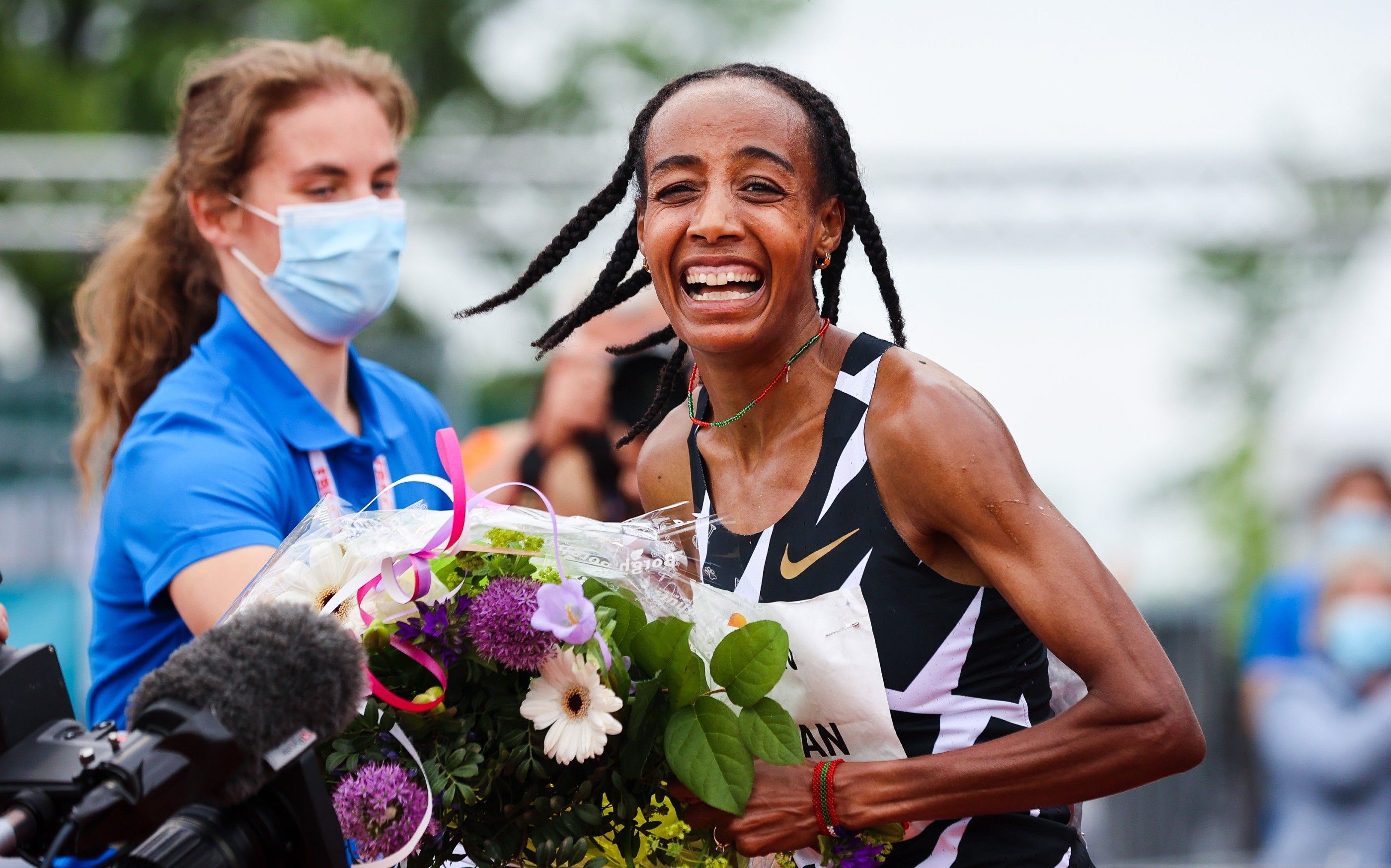
The lights she describes formed part of the Wavelight technology used at the Fanny Blankers-Koen Stadion during the World Athletics Continental Tour Gold meeting in the Dutch city, programmed to highlight the pace needed to improve the world 10,000m record of 29:17.45 which had been set by Ethiopia’s Almaz Ayana at the 2016 Olympic Games in Rio.
The blue lights showed world record tempo, while the green indicated the speed of Hassan’s own European record of 29:36.67 run on the same track eight months earlier. Ultimately, the double world champion’s patience paid off, as she waited until the final kilometre to move away from those bulbs. Then it was Hassan’s turn to light the way.
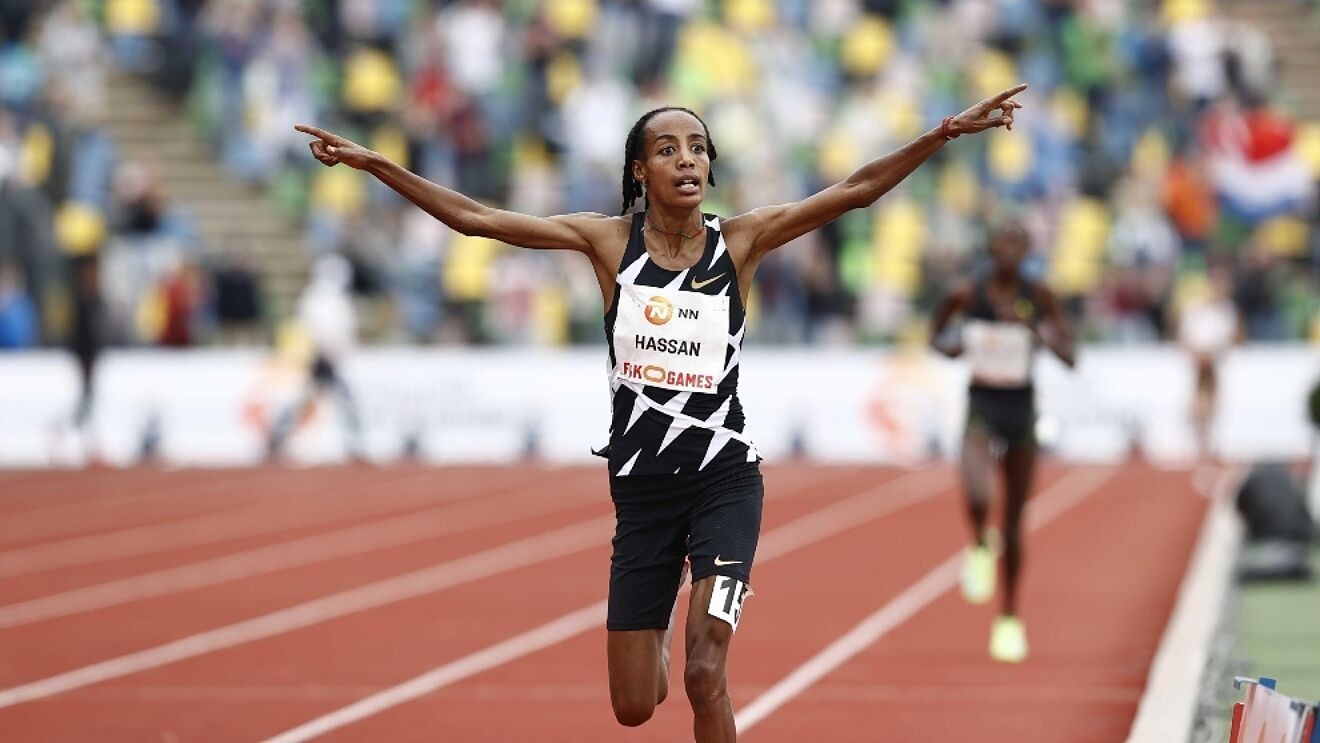
After kilometres of 2:56.12 and 2:56.07 behind pacemakers, Hassan ran splits of 2:55.72, 2:55.42, 2:55.42, 2:55.69, 2:55.93, 2:55.48 and 2:55.20 before upping the tempo and completing the final 1000m in 2:45.77.
As she reached her destination, the clock read 29:06.82 – a time more than 10 seconds faster than Ayana’s world record mark. What makes the performance all the more remarkable is how it forms part of a CV which also boats world records for the mile (4:12.33), women-only road 5km (14:44) and one-hour event (18,930m), plus European records in the 1500m (3:51.95), 3000m (8:18.49), 5000m (14:22.12) and half-marathon (1:05:15).
And then there’s the fact that Hassan feels she can go even quicker still.
“I know I am in shape to go under 29 minutes,” said the Tim Rowberry-coached runner, who has trained in Kenya and Utah, USA, in recent months. “But my coach said ‘no, we train for under 29 so you can run 29:17’. Yesterday I had confidence, I was like ‘I want to go 29:10’ but he said he wanted me to go exactly with the pace.”
Having started her season with a 14:35.34 5000m and then run 2:01.54 for 800m in May, she added: “I am not the sort of person who always runs a fast time in my first race. I know my training has been amazing, but I didn’t know how it would be in my competition. When I got to the last mile or the last 1500m I thought ‘okay you can do this, you can hold it’.”
The path for that performance had been paved in Hengelo last year. “I was scared in October,” she explained. “I was tired in the last couple of laps.
“I learned a lot from that race. That race taught me to hold myself back. I was telling myself that I have time to go under 29 minutes, I am just young – now I should just get the world record.
“Patience,” she added. “I learned patience.”
Her manager Jos Hermens, himself a world record-breaker, also believes that quicker times are to come.
(06/07/2021) ⚡AMPby World Athletics
Grandma’s Marathon will bring back celebration of spectators
A loosening of the state’s public health guidelines, announced recently by Minnesota Gov. Tim Walz, has paved the way for the return of two traditional and popular pieces of Grandma’s Marathon weekend.
The 45th annual Grandma’s Marathon weekend will be held June 17-19, 2021.
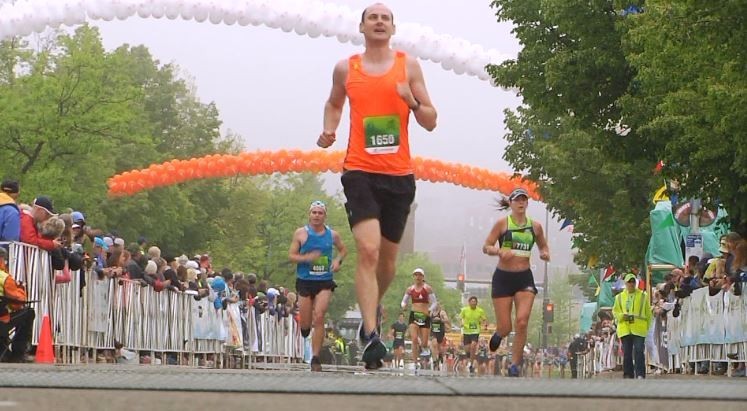
Based on the governor’s expected timeline of eliminating capacity limits and distancing requirements, organizers say they will now be able to welcome spectators on race weekend and host a post-race celebration.
“Those things were crossed off pretty early in our planning process based on the previous guidelines, and the result was going to be a very different feeling come race weekend” executive director Shane Bauer said. “Bringing those pieces back will not only amplify the experience of our participants, but it’s great for our community members who wait all year to be part of Grandma’s Marathon weekend."

Spectators were originally discouraged from attending this year’s Grandma’s Marathon, but the updated guidance will now allow those who wish to watch the races to do so.
The post-race celebration will be in a new location this year, moving from near the finish line in Canal Park to Bayfront Festival Park. Live musical acts will be featured throughout race day, and admission will be free for all ages in celebration of the 45th anniversary of Grandma’s Marathon.
Amid the excitement of what the new guidelines allow, organizers want to remind anyone planning on participating, volunteering, or attending Grandma’s Marathon that personal responsibility will still play a major role in the weekend’s overall success.
Masks or face coverings, according to the expected guidelines, will be required in all race-controlled areas with more than 500 people in attendance.
Organizers expect that to include the start and finish areas, Bayfront Festival Park, the Michelina’s All-You-Can-Eat Spaghetti Dinner, and the Essentia Health Fitness Expo.
As in the originally released plan, participants will not be required to wear a mask or face covering while actively participating in their race.
Five local groups will take the stage at Bayfront Festival Park on Saturday, June 19 as part of the 45th annual Grandma’s Marathon weekend.
The all-day celebration, which is free and open to all ages, was moved to Bayfront this year from its traditional place near the finish line in Canal Park.
(06/07/2021) ⚡AMPby Aitkin Age
Grandmas Marathon
Grandma's Marathon began in 1977 when a group of local runners planned a scenic road race from Two Harbors to Duluth, Minnesota. There were just 150 participants that year, but organizers knew they had discovered something special. The marathon received its name from the Duluth-based group of famous Grandma's restaurants, its first major sponsor. The level of sponsorship with the...
more...When It’s Time to Rethink Your Hydration
Here are 5 of the most common hydration mistakes—and how to avoid them.
It should go without saying that proper hydration results in a better chance of crushing your performance goals. But too often, people fall into some surprising hydration traps before, during, and after their workouts that keep them from performing their best when it counts most. To help set you on a path to hydrating like a pro, we teamed up with a Honey Stinger athlete and pro sports dietitian to bring to light the hydration mistakes you may be making and the fixes that will make sure your fluids are perfectly topped up.
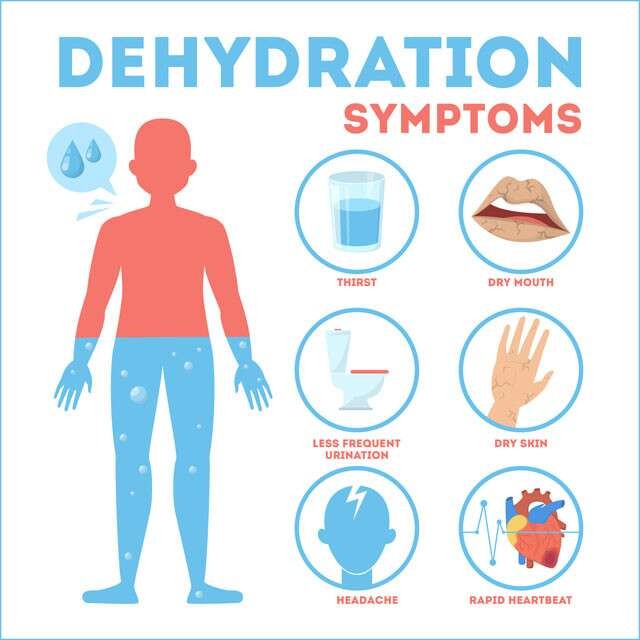
You wait too long to drink
For professional double-amputee runner and Honey Stinger athlete Brian Reynolds, the hydration window for a big run actually begins the night before. “If I try to drink too much right before a race it leaves me with a belly full of water sloshing around and a bloated feeling that is not comfortable for the first few miles.” Instead, Reynolds, who has broken multiple world records for double below-the-knee amputees in the marathon (3:03:22 PR) and half-marathon (1:17:05 PR), takes in two bottles of Honey Stinger Rapid Hydration Mix (“Prepare” Formula) the night before, then a modest 4 to 6 ounces of fluid the morning of his workout.
Allison Maurer is a professional sports dietitian for Honey Stinger and Major League Baseball’s Pittsburgh Pirates. She also supports Reynolds’s night-before “hyperhydration” strategy.
“It’s best to start early with your hydration using an electrolyte drink instead of panicking shortly before a race and trying to drink too much to make up for the lost time,” she says. If you find yourself needing to pee about an hour before your workout, it’s a good sign you’re well-hydrated.
There is only water in your bottle
“Until I settled on Honey Stinger, I used to suffer on my long runs by not taking in enough carbohydrates and electrolytes,” Reynolds confesses. He now brings along a 14-ounce water bottle spiked with Honey Stinger “Perform” Formula and supplements this with fluids from aid stations during races.
Maurer says plain water lacks the electrolytes to improve muscle function and help stave off cramping, and the fast-absorbing carbs to fuel the working body. “The combination of carbs and sodium helps your body hold onto more water for better hydration.”
She says the honey used in Honey Stinger Rapid Hydration Mix absorbs quickly for improved digestion and more efficient fueling without gut rot, while its sodium can help replace a portion of the sodium lost on the run—as much as 1,700 milligrams of sodium per liter of sweat.
You don’t train your gut
It took Reynolds years of trial and error to fine-tune his run hydration and fueling to a method that works for his system. “I suffered through numerous stomach issues until I figured out that the Honey Stinger products settled things down and helped me perform at my best.”
Maurer agrees with taking a highly individualized approach to sports nutrition. “You need to train your gut to see what works specifically for you, in the conditions you’ll face.”
In other words, there is no universal fluid, electrolyte, and carbohydrate guideline to use during workouts. Maurer explains you need to test your hydration strategy during training to gauge tolerance instead of trying something different during a big event. 

You gulp it all down at once
Reynolds has learned that lots of little sips spread throughout works better than guzzling back large amounts less frequently when it comes to midrun hydration. “Drinking small amounts every mile or two is easier on my stomach and keeps my mouth from drying out.”

Maurer stresses that your goal is to avoid the sluggish, ground-down feeling brought on by dehydration and low fuel stores instead of trying to correct the dreaded bonk after it occurs.
Frequently consuming a well-designed hydration product like Honey Stinger Rapid Hydration Mix ("Perform" Formula) will keep you charging hard, as studies have suggested that drinking a predetermined amount of fluid at set times can deliver greater performance gains than simply consuming liquids based on thirst.
You overlook postrun hydration
From experience, Reynolds knows that his hydration needs don’t grind to a halt once he crosses the finish line. “I make a plan to drink 16 to 24 ounces of fluid with the electrolyte-based Honey Stinger Rapid Hydration Mix ("Recover" Formula) shortly following a big run and then keep on hydrating throughout the day.” He knows his recovery will suffer if he doesn’t rehydrate properly.
But Maurer says to space out your rehydration efforts instead of drinking huge amounts of fluids at once. “Drinking too much can make you feel full, which is counterproductive to eating enough to properly refuel.”
Research shows that a honey drink can improve recovery by increasing hydration and replenishment of spent energy stores, leading to better performance during your next workout.
(06/06/2021) ⚡AMPby Runner’s World
Fraser-Pryce blazes 10.63 100m to go No.2 all-time in Kingston
Shelly-Ann Fraser-Pryce has become the second-fastest female 100m sprinter in history with a sensational 10.63 (1.3m/s) run in Kingston, Jamaica, on Saturday (5).
Racing at the aptly-named JOA/JAAA Olympic Destiny Series meeting, Jamaica's two-time Olympic and nine-time world gold medallist further proved her intention to add another title to that tally in Tokyo later this year. Powering out of the blocks, the 34-year-old made it look easy as she hit top speed and surged away from her rivals to run hard through the line before clapping and raising her arms in celebration.
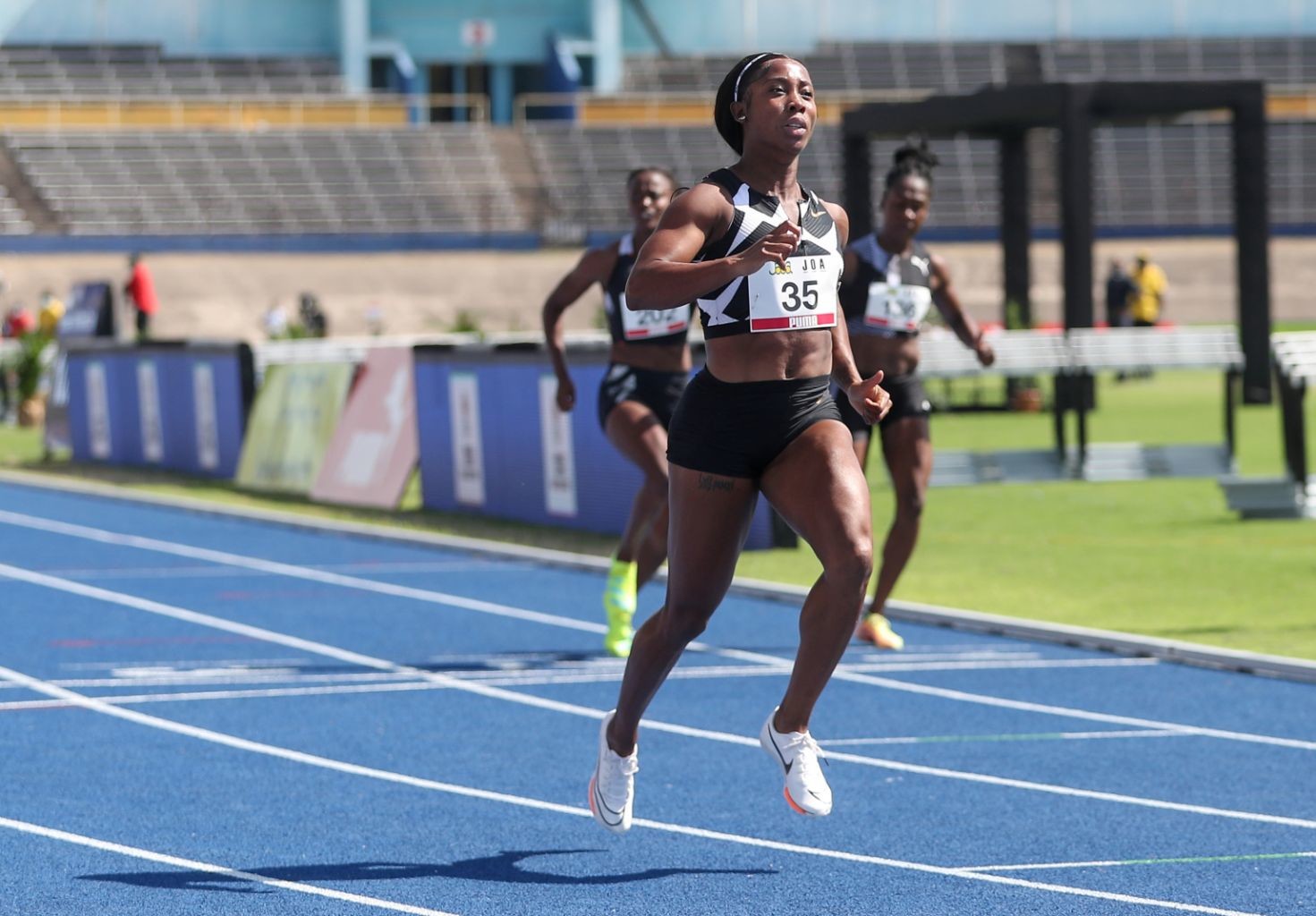
The fastest time in almost 33 years, only Florence Griffith Joyner has ever gone quicker with her world record of 10.49 and runs of 10.61 and 10.62, also achieved in 1988.
"When the hard work finally pays off!" Fraser-Pryce wrote on social media after the race. "So much accomplished, yet so much more to go."
Behind Fraser-Pryce was Natasha Morrison who finished second in 10.95.
The competition was Fraser-Pryce’s third this season and it followed the 10.84 she ran to win at the Wanda Diamond League meeting in Doha as she works towards Tokyo, where she will aim for a third Olympic gold after her 100m wins in 2008 and 2012. Her incredible CV also includes four 100m titles as part of her world championships haul, with her most recent claimed in Doha in 2019 following the birth of her son Zyon in 2017, with Fraser-Pryce having gone into labour while watching the world 100m final that year.
The day before the race in Kingston, she had posted an update on social media which read: "'Mommy' is the best title I could have ever earned."
Fraser-Pryce’s previous best had been 10.70 from 2012, a Jamaican record time which Elaine Thompson-Herah equalled in 2016.
Her performance at the Olympic Destiny Series meeting launches her to the top of the world rankings ahead of the USA's Sha'Carri Richardson, who ran 10.72 in April, and Thompson-Herah, who clocked 10.78 at the start of May.
Also in Kingston, world champion Tajay Gayle jumped a wind-assisted 8.56m (2.5m/s) to win the long jump, while O'Dayne Richards won the shot put with a 19.49m throw.
Others to triumph included Janieve Russell in the 400m hurdles (54.88) and Stephenie Ann McPherson in the 400m (51.06).
(06/06/2021) ⚡AMPby World Athletics
Olympian Amy Cragg Officially Retires and Joins the Puma Coaching Staff in North Carolina
She won bronze in the marathon at the 2017 world championships and ran 2:21:42 at the 2018 Tokyo Marathon—her lifetime best.
Amy Cragg, who represented the U.S. at the 2012 and 2016 Olympics, is officially retiring from professional running. She is now coaching the Puma-sponsored training group alongside her husband, Alistair, in Chapel Hill, North Carolina.
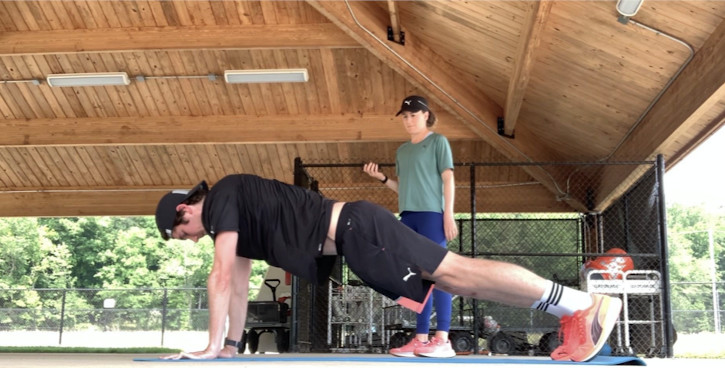
Her career highlights include winning the 2016 Olympic Marathon Trials, finishing third in the marathon at the 2017 world championships, and running a 2:21:42 PR in the 2018 Tokyo Marathon.
Cragg withdrew from the 2020 Olympic Marathon Trials last February, citing illness.
Amy Cragg—who won the 2016 Olympic Marathon Trials, took the bronze medal in the marathon at the 2017 IAAF World Championships, and ran the 2018 Tokyo Marathon in 2:21:42, making her the sixth-fastest American in history at the distance—announced she is retiring from competitive running.
She is now officially a coach with the new Puma-sponsored training group based near Chapel Hill, North Carolina. Her husband, Alistair, is the group’s head coach.
Cragg, 37, said in a phone call with Runner’s World that she took the time she needed to make the decision. “It was definitely time [to retire],” she said. “It’s been great. I’m definitely enjoying life on the other side.”
She had suffered from persistent fatigue over the past couple of years, which kept her from competing at the 2020 Olympic Marathon Trials. Now, she says, she’s feeling well again and running between two and four miles, several times a week, “just to get out there and enjoy it.”
In the summer of 2020, Cragg and her husband drove across the country from their home in Portland, Oregon, where she had trained with Bowerman Track Club for years. They looked at various locations along the way, trying to figure out where to establish Puma’s new training base.
Although they considered different spots at altitude, they ultimately decided the Research Triangle area of North Carolina was ideal for its weather, ease of travel to European track meets and American road races, and the 22-mile, crushed gravel American Tobacco Trail, which has every quarter mile marked. (The Craggs took a wheel out to measure 10 miles of the trail, and the quarters were spot on.)
They also considered medical support in the area, affordability, and job prospects for runners’ significant others.
“I’ve lived in places where people didn’t have a social life or their significant other didn’t have a social life or couldn’t work, and they were depressed,” Cragg said, “and that doesn’t lead to longevity in the sport. We want to create an environment that leads to longevity in the sport. For a lot of people, it takes them a little longer to get there. However long it takes you, we want it to be a good place for that.”
The team currently has Taylor Werner and Fiona O’Keeffe, both of whom are qualified for next month’s U.S. Olympic Track and Field Trials; Steven Fahy, a steeplechaser who currently is nursing a foot injury; and Emmanuel Roudolff-Levisse, a French marathoner. The Craggs—believers in the powers of group training—expect their numbers to grow, albeit slowly.
“We aren’t in a rush to get people,” she said. “We want to get the right people. We’re hoping these are 10-year athletes, not two- or three-year athletes.”
Cragg’s career flourished when she was in her 30s, and she was involved in some of the more memorable moments in Trials history. In 2012, she narrowly missed making the team in the marathon, finishing fourth at the Trials in Houston behind Shalane Flanagan, Desiree Linden (then Davila), and Kara Goucher.
But Cragg (then Hastings) turned her attention back to the track and won the 10,000 meters at the 2012 track trials to earn her first trip to the Games. At the Olympics in London, she finished 11th in 31:10.69, her personal best.
Four years later, at the 2016 Olympic Marathon Trials in Los Angeles, Cragg and training partner Flanagan ran stride for stride together, breaking the race open before the halfway point. But by the 23rd mile, Flanagan was struggling in the heat. Cragg slowed to stay with her, urging her onto the finish. With less than two miles to go, and Linden lurking in the background, Cragg finally left Flanagan and won the race in 2:28:20, waving her visor as she broke the tape.
Linden was second, in 2:28:54, and Flanagan willed herself across the line in third in 2:29:19, where she collapsed and was carried off the course. In Rio, their finishing order was reversed: Flanagan was sixth, Linden seventh, and Cragg ninth, the best collective performance by any country’s three athletes in the event. (The 2016 gold and silver medalists are currently serving suspensions for anti-doping violations.)
Training at times up to 130 miles per week with the Bowerman Track Club in Portland, Cragg qualified for the world championships in 2017 in London. At the race, she moved into third place with 400 meters and sprinted to a bronze medal.
Cragg said that was her top moment as a professional runner. “It kind of just made my entire career worthwhile,” she said.
Seven months later, in Tokyo, she ran her lifetime PR, 2:21:42, taking nearly six minutes off her previous best and putting her among the country’s top runners in history.
Cragg’s world championships bronze marked a renaissance of sorts for American women’s distance running. In Chicago in 2017, Jordan Hasay ran 2:20:57, Flanagan won the New York City Marathon in 2017, and Linden won Boston in 2018.
But after Tokyo, Cragg experienced a series of health setbacks and never was able to regain her top form for a marathon. She ran 15:54 5K in New York in November 2018 and finished third at the U.S. 5K championships, but she raced only twice in 2019. Both races—a 10K and a half marathon—were far from her best. She had planned to run the Chicago Marathon, but pulled out in the summer.
In an interview with Runner’s World at the time, Cragg talked about the fatigue she felt. “I think we just went too hard for too long,” she said. “I ‘cooked myself’ is what I’ll say. Took some time off when we realized it wasn’t coming around for Chicago. Now I’m feeling a lot better and ready to go.”
But citing illness, she withdrew from the 2020 Olympic Marathon Trials in February in Atlanta.
Her only race results from 2020 were pandemic-era intrasquad meets put on by her Bowerman Track Club at a high school track in Portland. Cragg ran a few 400s and 800s at slow paces—seen as fulfilling contractual obligations.
Her peers had nothing but praise for her.
“I’m thrilled for Amy. She’s had a tremendous career,” Linden, who first met Cragg when they were undergraduates at Arizona State University, told Runner’s World in a text message. “If people could have eavesdropped on our long run conversations during our ASU days, they would have laughed at how audacious our goals were. It’s been incredible to watch her check them all off one by one and then accomplish even more. I’m grateful that while being in a hyper-competitive career, Amy’s been able to remain a friend, and I know we’ll have many more conversations about her future goals.”
Shalane Flanagan wrote in a text, “I’m so happy for her. She was a wonderful teammate and one of the toughest athletes I got to train alongside. I treasure all the time spent together chasing big goals and dreams.” 

(06/06/2021) ⚡AMPby Runner’s World
Meet Chamonix's Trail Running Dog
Here's a lesser-known fact about Chamonix, France, one of the world's renowned trail running towns: it might just have the planet's highest density of tough mountain dogs. Here, there are dogs living at high mountain huts, guarding livestock, rescuing avalanche victims and even climbing ladders bolted to cliff sides. Dogs saunter along the pedestrian center of Chamonix, often unaccompanied, and wander into cafes and restaurants as if they own the places. And, in a sense, they do.
Into this mix, and reigning over the high northeast end of this 20-kilometer-long valley is the fluffy-but-tough Enzo Molinari Spasenoski Kotka, longtime trail-running partner to one of the world's strongest ultrarunners, Sweden's Mimmi Kotka.

Kotka, 39, though she lives a low-profile life with her husband Toni Spasenoski, is well known in the valley. Sponsored by La Sportiva, she has a litany of top finishes in the world's most competitive ultras. In Chamonix alone, she has won three races: the 90K in the Mont Blanc Marathon series, the Ultra-Trail du Mont-Blanc (UTMB) 101K CCC and the 119K UTMB TDS, during which she set a course record. Modest and easy-going, you will never hear Kotka brag about her successes. Well, almost never. Once, a few days after winning TDS, Kotka was stopped on a trail and got to deliver a line many dream of uttering. "Did you run one of the UTMB races?" a passerby asked. Kotka admitted that, why yes, in fact, she had. The questioning continued. "So, how did you do?" Kotka chuckled and beamed. "I won!"
Kotka, who has a Masters of Science in Molecular Nutrition and is a partner in Moonvalley, an organic sports food company, lives in the village of Le Tour, just below the Swiss border, with her husband Spasenoski, who works remotely as a high-tech project manager. And, rounding out the family, there is Enzo.
Spend more than a day or two on the quiet, rugged trails in this part of the valley and your paths will cross with Mimmi and Enzo. They are so often together, it's more common to hear Mimmiandenzo than the former without the latter.
Enzo, now 4, it must be said, is beautiful and highly photogenic. His thick, mottled coat of blue-gray, brown, black and white fur is perfectly suited for a life herding sheep high in Italy's Gran Paradiso region from where he came.
Kotka's trail-running partner seems to know just how gorgeous he is. "He's kind of a Diva," Kotka says. "He just wants attention. He'll lie down in front of onlookers, expecting to be admired and cuddled. We spoiled him, and we got the dog we deserve."
These days, Enzo is getting plenty of time in the limelight. Kotka's Instagram feed is filled with striking photos, taken by Spasenoski, of the two out in the mountains in all seasons. Spasenoski joins the two for runs, taking photos and struggling to maintain the pace. Enzo knows the drill, often climbing up to view points, puffing his chest like the Lion King surveying his kingdom. "He thinks he's a mountain guide, but really he's an influencer," Kotka laughs.
With or without the lens eye, however, Mimmiandendzo have a tight bond on the trail. Together, they have run to glaciers halfway up Mont Blanc and high-mountain huts like the Refuge Albert Premier perched on the jagged skyline high above their Le Tour home.
"Sometimes, when I'm running with him, I feel one energy." Kotka pauses, trying to explain the sensation. "I feel very connected to him." When she stumbles, she says, Enzo immediately runs back to her to make sure she's okay.
There are the inevitable bumps, of course. Herding is part of Enzo's DNA, and there's no off switch, either. Running high above their village, Enzo once spotted a sheep away from its flock.
"He went completely nuts," says Kotka. "He was barking like mad and not listening to me. At the time, I didn't understand the instincts of a shepherd dog." At other times, Enzo's been known to herd escaped sheep back to the right side of their fenced-in pastures.
For better or worse, those herding instincts apply when the animal has two legs, too-that can make for awkward moments when Kotka is running with friends and the group spreads out. "I feel sorry for the runner in the back," explains Kotka. "Enzo literally nibbles at their butt."
Like every mountain runner, Enzo has had his accident or two. Descending from the Possettes, a dramatic ridgeline that is part of the course of the Mont Blanc Marathon, he took a tumble over a cliff band. The two heard Enzo barking, far below. Early spring, he fortunately landed on a snowfield but had taken a long slide.
"He was OK, but frazzled," says Spasenoski. "I've done the same thing!" And a few winters ago, out with Kotka while she was ski mountaineering, Enzo injured his eye in a freak accident when he hit a metal object buried in the snowpack. An infection and cataracts ensued. To protect his eyes after the incident, their Italian adoptee received dog goggles for Christmas. They did not go over well.
"He wouldn't move. He was like a statue," says Spasnoski. "He was like, 'What the hell am I wearing?'" These days, Enzo takes a timeout during the rugged Alps winter season.
Along the thousands of kilometers of mountain trails they've shared together, Enzo has been a teacher as well. "I've learned a lot from Enzo," says Kotka. "I wasn't expecting that." [TK-any specific lessons?]
What other life lessons has their social media star imparted to the family? "Some days can be pretty crummy," says Spasnoski, "But then you see this guy," he says, gesturing downward. "And everything is OK."
"Enzo makes us a family," Kotka adds. "We have someone to care about. He's been good for our relationship. Besides, she adds, "He's such a character, and makes us laugh. And he has a good heart. Right, Enzo?"
The tail thumps once on the floor. Definitely.
Name: Named after Enzo Molinari, a character from Kotka and Spasenoski's favorite film, The Big Blue, about the world's greatest free diver. Before discovering trail running, Kotka had a brief obsession with free diving. All that remains are, she notes, a lifelong addiction to the film and a bad diver tattoo on her back. Molinari had a big personality and a kind heart.
Birthplace: Enzo was born at an organic honey farm in Valsavarenche, Italy, next to northern Italy's wild Gran Paradiso National Park. One of six pups, his mom is Australian Shepherd. His father has been narrowed down to one of three likely suspects, but has not come forward.
Age: Four, or 32 in dog years. Enzo turns 5 on June 12th.
Weight: 30 kilos, about 65 pounds.
Favorite animals: A very large, fat cat used to be part of the family, and to this day Enzo loves cats. (As a rule, they do not love him back.)
Running Routine: 10 to 20 kilometers a day. "Around here, that's a lot," says Kotka, alluding to the challenging nature of the terrain around Chamonix. Enzo avoids runs of more than a few hours, and during the warm summer months prefers to run in the early morning or later in the day ."He could easily go for 10 hours," says Kotka, who is cautious about the miles logged on Enzo's pads. "He loves riding lifts," she adds.
Longest Trail Run: The pair did a two-day reconnaissance of parts of UTMB's technical TDS course. "We went slowly," says Kotka, "and made plenty of stops."
Favorite food: Homemade cheese pizza. "Eating some of a pizza I made was the only time he didn't greet Mimmi," says Spasenoski. "He's Italian. What do you expect?"
When he's not trail running: Napping on cool surfaces and sniffing human butts.
House rules: Enzo's not allowed in the bed. "It's too hot for him, anyway," says Kotka. Instead, he sleeps near the drafty balcony door. After breakfast, he'll often sleep outside in the cool mountain air that blows off the nearby Le Tour glacier.
(06/06/2021) ⚡AMPby Trail Runner Magazine
What You Need To Know About Running Shoes And Injuries
At age 50, I have recently begun to wonder how my body will hold up for running (and life) over the long haul given that in the last decade, I have dealt with several lingering bouts of Achilles tendinitis, a painful stint of iliotibial (IT) band syndrome, a functional leg-length imbalance that led to an angry case of sciatica, a debilitating case of runner's knee, one frustrating case of shin splints, and an excruciating ruptured Achilles. Not all of those injuries were caused by running, but each one presented itself when I ran.
This has led me to think a lot more about the shoes I choose to wear and the marketing promises that accompany them. Can they really help me run longer, healthier, and injury-free? Conversely, might they be causing my problems?
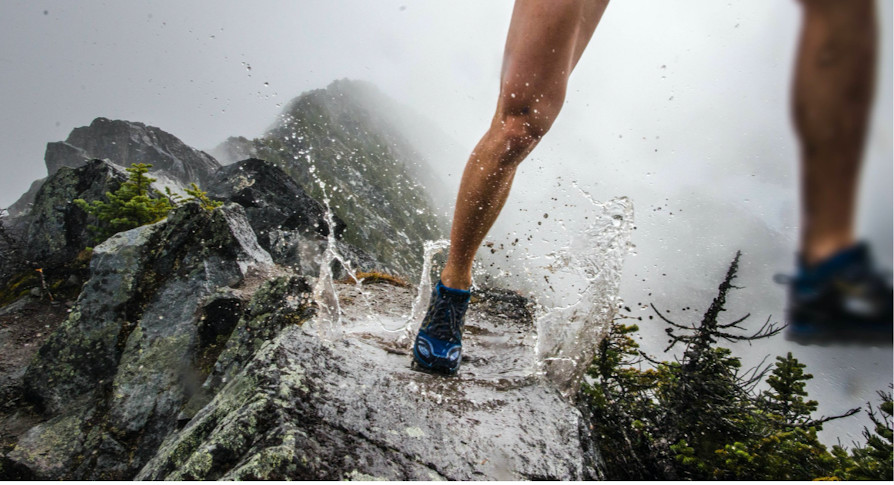
Despite the continued evolution of running shoes since the 1970s, the rate of injury among runners has remained high and, depending on which report you read, might even be climbing. Reports of annual injury rates vary widely, from 20 percent to 92 percent, but the average rate is somewhere around 50 to 60 percent. That means more than half of the running population gets dinged up in some fashion every year. Imagine that as every other runner in your local running group, or fully half of the 50,000 participants who line up to start the New York City Marathon every November.
It's a startling injury rate. Might shoes be the culprit? Absolutely not, says Jay Dicharry, who authored Running Rewired: Reinvent Your Run for Stability, Strength & Speed.
Dicharry has published numerous research studies about running mechanics, and he insists that running shoes don't cause injuries. "There are better and worse shoes for an individual runner based on their gait characteristics, but running shoes are not the cause of injuries," he says.
There has never been a correlative link between injuries and running shoes, he points out, which sounds like a convincing exoneration of shoes from where I sit, though it's important to note that there also haven't been many studies. In fact, in the only study that has remotely produced some interaction between running shoes and injury rates, 81 female runners were categorized by foot type (neutral, pronated, highly pronated) and randomly assigned neutral, stability, or motion-control shoes.
After basic information about their gaits was recorded, the runners were put through a 13-week half-marathon training program. Of the 194 training days missed by the test subjects due to pain or ailments, 79 were missed by runners wearing motion-control shoes, followed by 64 by neutral-shod runners, and 51 by stability-shoe wearers.
The neutral runners reported greater pain values while running in neutral shoes than in stability shoes; runners with pronated gaits reported greater pain values while running in stability shoes than in neutral shoes. No significant effects were reported for runners with highly pronated gaits. Ultimately, the study concluded that the "current approach of prescribing in-shoe pronation control systems on the basis of foot type is overly simplistic and potentially injurious." But the researchers admitted that the study was too small and didn't take into account enough factors to be conclusive.
Even with the advancements in kinesiology; the study of biomechanics, the human body, and materials science; and massive investment and vested interest from shoe companies, relatively little is known about how shoes actually impact our ability to run, no matter whether it is 100 meters, 100 miles, or somewhere in between.
There is no universal understanding of or agreement on how shoes should be designed and built to improve efficiency, maximize energy return, and reduce the risk of overuse injuries that, some research shows, may be caused by the repetitive motions of a running gait.
The Pronation Effect
In the 1970s, there was tremendous focus on stability and motion control. Despite the fact that at the time, there was little science related to human running mechanics, brands became obsessed with the notion that pronation could be harmful to a runner's heath.
Although high-speed video cameras and force-plate treadmills weren't yet available to analyze running gait, biomechanists, podiatrists, coaches, and shoe developers pointed to this inward rolling as one of the causes of common running injuries. As a result, the shoe war encountered a brand-new battlefield, one concerned with how to control the movement of a runner's feet-an idea that, although never grounded in science, has lingered into today. Science or no science, it has been a powerful marketing and sales tool.
In 1977, Brooks introduced several shoe models that supported the interior side of the heel with its Varus Wedge. The firm foam piece was engineered to provide greater stability, increase heel and foot protection, and improve running efficiency while decreasing muscle and tendon fatigue.
The Brooks Vantage was the first shoe designed to control the inward rotation of the foot, a motion that would soon be known by the industry-wide catchphrase "overpronation." Under the guidance of renowned podiatrist Steven Subotnick, who would later author Cures for Common Running Injuries, Brooks attempted to counter the rolling of the foot toward the medial side with a wedge that not-so-subtly canted the foot outward to the lateral side.
Brooks's innovation sparked dozens of imitators and eventually led to a whole new category of shoes based around stability and motion control. But it also led the industry down a misdirected path of self-help without compelling scientific evidence or quantifiable results. Soon every brand had its own feature designed to restrict overpronation-the most common being the medial post, a firmer-density midsole foam located under the arch of the foot. Worse yet, it also prompted the unsavory practice of brands hiring scientists and paying for the lab results they needed for their marketing programs that supported their new shoe models.
While innovation can be good-and even imperative at times-the problem was that a lot of the innovation was being fueled not by science but rather by marketing hype and copycat imitation, neither of which necessarily led to better performance or more efficient running, even if they decidedly did lead to selling more shoes and developing a vernacular to support three types of shoes (neutral, stability, and motion control). Worse, the new trend didn't reduce a growing epidemic among recreational runners: overuse injuries such as shin splits, Achilles tendinitis, plantar fasciitis, patellar tendinitis, and runner's knee.
Dicharry doesn't think shoe brands are really listening to what science-specifically kinesiology and anatomy-is telling them.
"For a long time, the running shoe industry has had a bias that suggests a running shoe has to stop parts of your body from moving and force something to move in a different way," he says. "That's based on unfounded ideas that evolved 40 or 50 years ago. Science shows that doesn't exist and never did. People are variable and move differently, and that's OK."
Dicharry says that until brands stop trying to control or limit movement, shoes will never fully move forward. "The foot is an adaptively controlled lever; it's not just one rigid thing that moves one way. It's all about adapting and conforming." His insights beg the question: If every runner has his or her own preferred path of movement based on specific anatomical variances and irregularities, is it even possible to mass-produce a commercial product that will actually improve performance and reduce injury risk for a wide range of runners?
Dicharry insists that it is possible, but "you would mostly have to scrap the model of how shoes are built and marketed." There is sufficient technology and understanding of how to do it, he says; however, mass production and an entire recategorization of running shoes are still significant inhibitors.
Until that happens-if indeed it ever does, at least for a wide audience- the biggest challenge facing running shoes may be that they're not keeping runners from being injured. Despite numerous advancements in outsole rubber, midsole foam, training philosophies, and understanding of how the body moves, there has yet to be a shoe that has shown the ability to reduce injuries. The incidence rate of common running injuries has remained constant since they began being monitored, with most surveys and studies showing an average of 50 to 60 percent of runners being injured every year.
An essential piece of the puzzle cannot be ignored: Running shoes are a commodity, and every running shoe company is in the business of designing and manufacturing shoes for the sake of selling as many as possible. The A-goal is not improving performance or reducing injuries-and perhaps with good, or at least justified, reasoning. Because while running shoes have both functional and aesthetic cues-along with loads of marketing hype-consumer purchasing surveys have shown that the color or aesthetics of a shoe often influences a runner's purchasing decision more than its perceived ability to help that individual run better.
Ultimately, it's not in the best interest of a shoe brand to really hone a message about training better, becoming stronger, and fixing one's mechanics because that proves that it's not about the shoes, or at least makes shoes a secondary factor in healthy running. Plus, it's too risky for a running shoe brand to make a claim even remotely suggesting that its running shoes can reduce the chance for injuries. Instead, it is in every brand's financial interest to make shoes that look good and feel good and come with a good marketing story.
Form & Fitness
When it comes to running's extraordinarily high annual injury rate, many people want to blame their shoes, but that's like blaming the tires on your car when the engine won't start, insists Reed Ferber, PhD, the founder and director of the Running Injury Clinic at the University of Calgary.
"Running shoes are definitely not the cause of injuries," he says, echoing Dicharry. "Shoes are a small piece of the puzzle that people have focused on as being the cause or salvation of running injuries, but that's just not the case."
Ferber says that the one thing the running research community agrees on is that the most common running injuries, especially those suffered by recreational runners, are caused by doing too much, too fast, too soon. In other words, overuse injuries such as shin splits, Achilles tendinitis, runner's knee, IT band syndrome, plantar fasciitis, and many types of stress fractures are caused by user error: running too many miles or running too hard during workouts without adequate aerobic fitness, leg and foot strength, or flexibility.
When it comes down to it, most recreational runners aren't nearly as aerobically fit or as functionally strong as they could be. "Not even close," says Mark Plaatjes, a Boulder, Colorado-based physical therapist, coach, and owner of In Motion Running, a running specialty store. The former world-class runner-and 1993 world champion in the marathon-points to the stark difference between how elite runners train and how the average runner trains.
Not only are elites leaner and stronger, he says, but they're also running higher-mileage weeks-thus becoming much more aerobically fit and efficient-and dedicating equal hours every week to strength training, form drills, therapeutic work, and recovery. The majority of recreational runners don't have the time or interest to do those things, he says, and they often pay the price through the resulting overuse injuries.
Plaatjes points out that this lack of comprehensive training is also the reason that the minimalist shoe revolution was a disaster for many people. The shoes weren't the problem, he insists. In fact, there were merits to the idea that minimally constructed shoes would help build foot strength and cue better running form. The trouble was that few people were willing to take the time to ease into wearing those kinds of shoes and do the considerable amount of work it would take to prepare their bodies to adapt.
While minimalist shoes weren't to blame for injuries, the movement simultaneously proved that running shoes couldn't prevent injuries, either. Yes, running shoes can be a tool to improve your running, but the most vivid takeaway from the minimalist revolution was the reminder that most runners need an ample amount of cushioning and protection between foot and ground, and that good running form (and the proper strength, posture, and flexibility that go with it), not newfangled running shoes, is the key to healthy, efficient running.
Doing core strength work, drills, and plyometric exercises can give you a general boost toward running better, more efficiently, and maybe even faster. But the only way to create a specific program for improving as a runner is to gain a detailed understanding of how the individual body operates as it runs-how it moves, where it is strong, where it is weak, where it is asymmetrical. These mechanics can be revealed through a high-tech gait analysis.
At his lab in Bend, Oregon, Dicharry uses state-of-the-art force-plate instrumented treadmills and high-speed cameras to analyze a runner's gait data in real time. He routinely tests fit and functionally strong runners who move efficiently and stabilize their body effectively but have a specific gait aspect that needs improvement. It might be subpar cadence, poor running posture, or a propensity to overstride. Postanalysis, Dicharry and his team of physical therapists and coaches provide exercises and drills to help cue improvement in those areas.
"Some issues have nothing to do with running," Dicharry says. "They might be lifestyle problems developed from everyday life, but they show up in running or other things you might do, whether it's walking or riding a bike or swimming."
The Shoe Factor
Generally speaking, Dicharry believes most runners can benefit from running in "less" shoe, especially models that don't inhibit the natural motion of a foot. But he cautions against making big changes-to a more minimally designed shoe or a shoe with a lower heel-toe offset-too quickly.
However, he points out, running in a variety of different kinds of shoes on a weekly basis is the best scenario for a runner, and there is science to back up that statement. A 2013 study conducted in Luxembourg showed that recreational runners who rotated among multiple models of shoes during a 22-week study had a 39 percent lower risk of running injury than those who almost always ran in the same shoes.
"Having a quiver of shoes exposes your body to different ways of interacting with running surfaces, different muscular responses, and different neurological reaction timings," Dicharry says. "Variability is a good thing, so switching up your running shoes several times a week is a very good thing."
Like Plaatjes, Ferber believes most runners can make headway by improving their overall fitness and functional strength to become less injury prone, but he doesn't necessarily believe in overhauling a runner's gait. Plaatjes, in contrast, is concerned about the industry-wide shift and strongly disagrees that most runners should be running in soft, flexible neutral shoes, insisting that many runners still need some support and stability, especially as they become fatigued during longer runs. The best way to provide that support, he says, is via stability shoes or after-market insoles.
"The answer to reducing injuries, enhancing comfort, and improving performance is not to change or fix a runner's 'flaws' but to work with the natural and highly individual motion paths of the joints," says Carson Caprara, senior director of global footwear product management at Brooks. "The focus then becomes keeping a runner in this path of least resistance for as long as possible during a run. For some runners, the variables of shoe geometries, midsole hardness, or excessive stabilizing technologies can push them outside of their preferred motion path. The task of modern running shoes should be to help these runners stay within their unique motion corridor at all times."
Brooks outlined a holistic approach to designing and fitting running shoes that would optimize efficiency, reduce injury, and enhance comfort. Instead of breaking down its shoes into neutral, stability, and motion-control categories that took into consideration one factor-the level of pronation at the ankle-it came up with new categories based on four biomechanical silos related to cushioning, energizing, connecting, and propelling a runner's experience. And it acknowledged that the individual's preference had a lot to do with what shoe would be best for that person. The brand concluded that shoes allowing runners to run in their natural preferred state on the path of least resistance, rather than attempting to correct perceived problems or deficiencies, would provide the best experience and be the most comfortable. Brooks became the first brand to ditch medial posts to control overpronation in favor of a new system of guiderails that offer just enough support for that particular runner's feet and gait style.
However, it has become increasingly clear that there is no magic bullet, and that ultimately, it is less about shoes and more about how a runner is training and taking care of his or her body on a daily basis.
Advances in footwear, training, and technology might have an effect on how a runner moves, but how and whether those changes will impact the rate of injuries remains a big question mark. In the end, running is both a very simple and an extremely complex activity, a polarizing set of parameters that leave it open and vulnerable to the interpretation, style, and experience of each individual runner. The key to healthy, efficient running has less to do with shoes than with the time, effort, care, and passion that each of us puts into it.
"Don't spend time opening your wallet; spend time opening your mind to making yourself a better athlete," Dicharry says. "There are multiple ways of improving as a runner and getting faster, and none of them require spending money on a piece of footwear. Make your body better and you'll run better."
(06/06/2021) ⚡AMPby Trail Runner Magazine
Gyms’ losses may be running’s gains in 2021
A recent survey found that only 15 percent of gym-goers think the gym is the best way to keep fit heading into the new year
Gyms have taken a massive hit this year as many have been closed at various times throughout the pandemic, and a recent study conducted by RunRepeat isn’t forecasting much of an improvement in 2021. The study surveyed 1,990 gym members from 120 countries, of whom only 15.18 percent say they think the gym is their best option for reaching their fitness goals in the coming year. Another RunRepeat study notes that 25 per cent of gyms are expected to close for good by the end of 2020. While this is bad news for gyms, it could be good news for the running community, as many former gym members say they plan on sticking with outdoor exercise to work on their fitness in 2021.
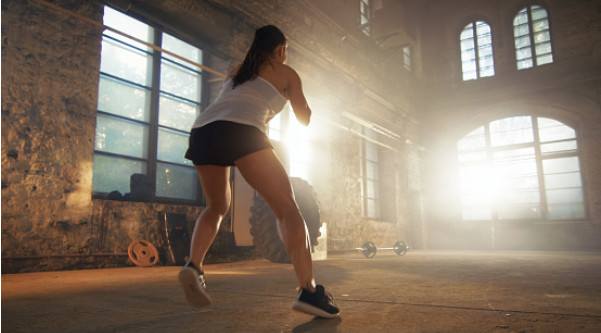
The lack of interest in working out at a gym makes perfect sense when considering the pandemic. Left with nowhere to exercise other than outside or at home, people all over the world took to running (causing a huge running boom in the spring) and bought fitness machines and equipment. Now that so many people have realized they can continue to progress toward their fitness goals without going to the gym (and therefore saving money by avoiding a monthly membership fee), they have no desire to return, even when it’s deemed completely safe.
At the start of the year, 63 percent of gym members said they thought the gym was their best fitness option. That dropped significantly as the year progressed, and now just 15 percent of gym members still hold that belief. Conversely, a whopping 49.9 percent say running and other outdoor activities provide the best opportunity for maintaining fitness and reaching goals in 2021. This is up from just 35 percent earlier in the year.
This is bleak news for the fitness community, but for the running world, it could be a good sign. We still have to wait to see if the spring’s running boom will lead to more long-term runners, but if the RunRepeat numbers are correct and many people don’t plan on returning to the gym, then we might see high rates of participation in races when in-person events eventually make a comeback.
Even though many people have turned to running in recent months, the running community and event organizers are still hurting. In-person racing will hopefully return soon, but for now, virtual events are our only option. It’s more important now than ever before to support our local organizers, or else many of them could suffer the same fate as many gyms and be forced to fold. Whether you’re a new runner or a seasoned veteran, consider adding some virtual races to your calendar. With this holding you accountable, it will be easier to convince yourself to train, which will help you reach your overall fitness goals.
(06/06/2021) ⚡AMPby Running Magazine
Canadian record-holders Levins, Elmore headline Canada's marathon team for Tokyo
Seventeen years after she last raced at the Olympics, distance runner Malindi Elmore has earned a spot on Canada's team for Tokyo, while Cam Levins will race at the Games after dipping under the qualifying mark with just a week to spare.
The two Canadian record-holders in the marathon highlighted Athletics Canada's team of long-distance runners and race walkers nominated on Friday.
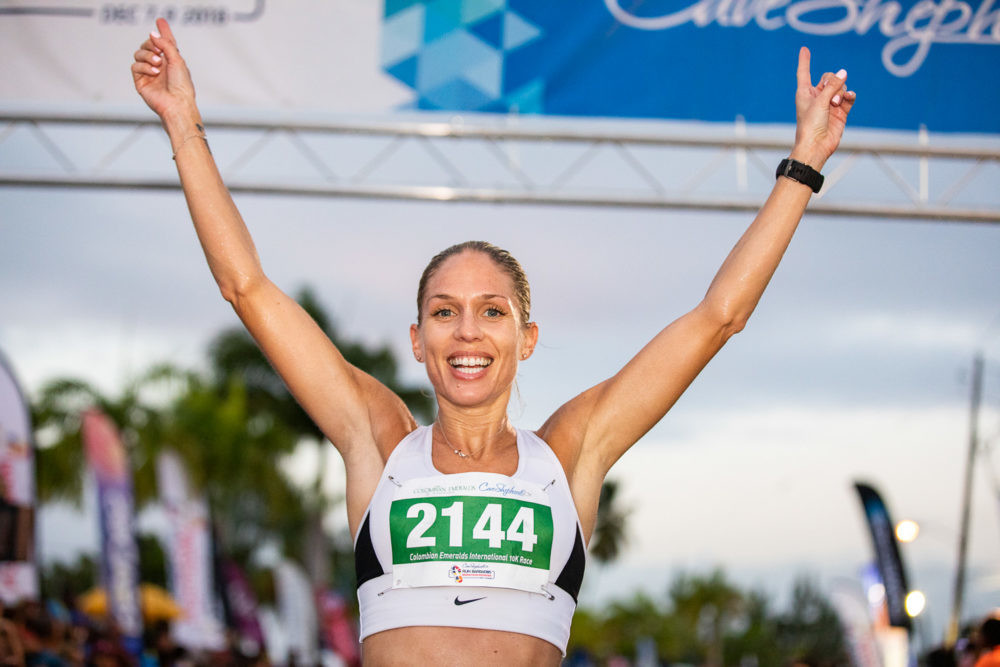
Nine Canadian marathoners had achieved the qualifying criteria in the marathon, but each country is allowed only three men and three women, leading to speculation about the squad in recent weeks, and posing a good problem for Athletics Canada with the depth of talent.
"Over the past few years, Canadian middle- and long-distance runners have accomplished great things on the track and on the road," Athletics Canada's head coach Glenroy Gilbert said in a statement. "In Tokyo, we'll see a new generation of marathoners who have broken Canadian records, established impressive personal bests on-demand in less-than-ideal conditions and made a name for themselves in the gruelling 42.195-kilometre event.

"We are excited to see what this group can do in Sapporo against the greatest athletes in the world, as they deserve to be there."
World bronze medallist Evan Dunfee tops the race-walk team, while Mohammed Ahmed and Andrea Secdafien earned spots in the 10,000 metres.
The rest of Canada's track and field team will be announced at a later date.
Dunfee had already clinched his spot on the team based on his bronze at the 2019 world championships, while Dayna Pidhoresky and Trevor Hofbauer had previously earned automatic berths after winning the women's and men's Canadian marathon titles.
Elmore is a terrific comeback story. The Kelowna, B.C., native ran the 1,500 at the 2004 Athens Olympics missing the semifinals by one spot, then retired from track in 2012 and became a world-class Ironman triathlete. Moving down to the marathon in 2019 — as a mom of two, she said it requires less training time than the Ironman — she broke the Canadian marathon record in January 2020.
Natasha Wodak, who's raced at three world championships in the 10,000 metres, is the third Canadian woman on the marathon team.
Levins, a finalist in the 5,000 and 10,000 at the 2012 London Olympics, shattered the Canadian record in his marathon debut in 2018. He fell short on two attempts over the past year to qualify for Tokyo, but the 32-year-old from Black Creek, B.C., finally dipped under the mark on May 23 — a week before the qualifying window closed — in Styria, Austria, despite running in rain and alone for the last 25 kilometres of the race.
Ben Preisner is the third men's marathoner nominated to the team.
"I am so pumped about this group of athletes," said Canada's chef de mission Marnie McBean. "They chose the 'suffer' events and make them look easy. Many of their recent results have been a beacon of light for the whole of Team Canada."
Mathieu Bilodeau joins Dunfee in the 50-kilometre race walk based on his world ranking.
The marathons and race walk events will be held in Sapporo due to Tokyo's heat, and because of COVID-19, athletes will be restricted to staying in Sapporo.
"Woohoo! Stellar Sapporo crew locked in," tweeted Dunfee, who was fourth at the 2016 Rio Olympics. "We'll be the only Team Canada teammates we see at the Olympics, sequestered 800km away, so I'm stoked that these people are all so lovely."
Mohammed Ahmed and Andrea Seccafien were nominated in the men's and women's 10,000. Ahmed owns the Canadian records in the 5,000 and 10,000 and won bronze in the 5,000 at the 2019 world championships. Seccafien broke the Canadian record in the 10,000 just three weeks ago.
The window to qualify in the 10,000 remains open for another month, so Canada could add runners in that distance based on either their world ranking or by achieving an automatic entry standard.
(06/05/2021) ⚡AMPby Canadian Press
Tokyo 2020 Olympic Games
Fifty-six years after having organized the Olympic Games, the Japanese capital will be hosting a Summer edition for the second time, originally scheduled from July 24 to August 9, 2020, the games were postponed due to coronavirus outbreak, the postponed Tokyo Olympics will be held from July 23 to August 8 in 2021, according to the International Olympic Committee decision. ...
more...There will be zero marathon runners from India at the Tokyo Olympics
Marathon races in the Olympic Games have been a permanent fixture in the men's roster since the inaugural Athens Games of 1896, while the women's event was first held 88 years later in Los Angeles. Ethiopian athletes have enjoyed the most successful in Olympic marathons, with men winning four golds; two of which came from Abebe Bikila in 1960 and 1964, who was the first athlete to win back-to-back golds (the only other athlete to win two golds in the marathon was East Germany's Waldemar Cierpinski in 1976 and 1980), and Ethiopian women have won two golds.
The Olympic records are 2:06:32 for men, set by Kenya's Samuel Wanjiru in 2008; and for women, it's 2:23:07 seconds, set by Tiki Gelana of Ethiopia in 2012.

India's history at the marathon dates back to 1928 when Phadeppa (Pavananjey) Dareppa Chaugule became India's first Olympic marathon runner. He represented India in the 1920 Summer Olympics in Antwerp, Belgium, and finished 19th with a timing of 2 hours 50 minutes 45.2 seconds. He hails from the town of Belgaum (Now Belagavi) in Karnataka.

With the passage of time, many Indian marathon runners have taken part in the Olympics, with the 2016 Rio Olympics, having the highest number of five athletes - Thonakal Gopi, Kheta Ram, Nitendra Singh Rawat among the men, O.P. Jaisha and Kavita Raut among women. However, five years down the line nobody from India will be qualifying for Tokyo Olympics in the marathon.
Why did Indian athletes fail to qualify in marathons for Tokyo Olympics? To understand the reason one has to know the qualification process for the marathon at the Tokyo Olympics. The athletes in marathons (both men and women) can qualify by either entry standard or qualify by ranking during the qualifying period. The qualifying standard is 2:11:30 for men and 2:29:30 for women, while the qualifying period was originally from 1 January 2019 to 31 May 2020. Due to the COVID-19 pandemic, the period was suspended from 6 April 2020 to 30 November 2020, with the end date extended to 31 May 2021. The world rankings period start date was also changed from 1 January 2019 to 1 December 2018.
With so many runners qualifying by meeting the entry standard, there was no scope left for an athlete through the world ranking. Indian athletes' hopes were shattered mostly because of the coronavirus wreaking havoc without allowing the Athletics Federation of India (AFI) to conduct marathons at regular intervals since 2020. Though the date was extended to 31 May 2021, India hosted fewer marathons, and also the potential challengers for Tokyo Olympics took part in a few of them hoping to qualify through the marathons hosted in 2021. With the second wave of coronavirus hitting India hard again, many of the marathons got cancelled and as a result, India's best marathon hopefuls could not meet the qualifying standard. Among the men, the hopefuls were Nitender Singh Rawat, Srinu Bugatha and Rashpal Singh.
While Rawat attained a personal best of 2:15:52, Bugatha and Rashpal could attain 2:14:59 and 2:18:57 during the qualification period. Among women, Sudha Singh had a PB of 2:34:56, Jyoti Gawate a 2:45:48 and Swati Gadhwe 2:58:10. With nobody being able to meet the mark, India will have to go to the Tokyo Olympics without a marathoner.
(06/05/2021) ⚡AMPby The Bridge
Tokyo 2020 Olympic Games
Fifty-six years after having organized the Olympic Games, the Japanese capital will be hosting a Summer edition for the second time, originally scheduled from July 24 to August 9, 2020, the games were postponed due to coronavirus outbreak, the postponed Tokyo Olympics will be held from July 23 to August 8 in 2021, according to the International Olympic Committee decision. ...
more...PUMA to become the Official Footwear and Apparel Partner of the Boston 10K for Women
Conventures, Inc., organizers of the Boston 10K for Women, presented by REI, today proudly introduced PUMA as its official footwear and apparel partner. In further demonstrating its commitment to women’s running, the footwear and apparel company will provide pre-event activations, on-site engagements at Boston Common, and will become the title sponsor of the event’s elite athlete field. The Boston 10K for Women is the longest-running all-women’s sporting event in New England, and will return to the roads this October for its 45th running.
PUMA’s support of the event will put PUMA’s logo on the race bib number, PUMA footwear on race officials, and the “Elite Field, Powered by PUMA” will help support visibility for the event’s elite field. The new race partnership is the latest illustration of PUMA’s deep commitment to Boston, to running, and to women, and allows the company to align itself with the largest all-women’s race in New England for multiple years.
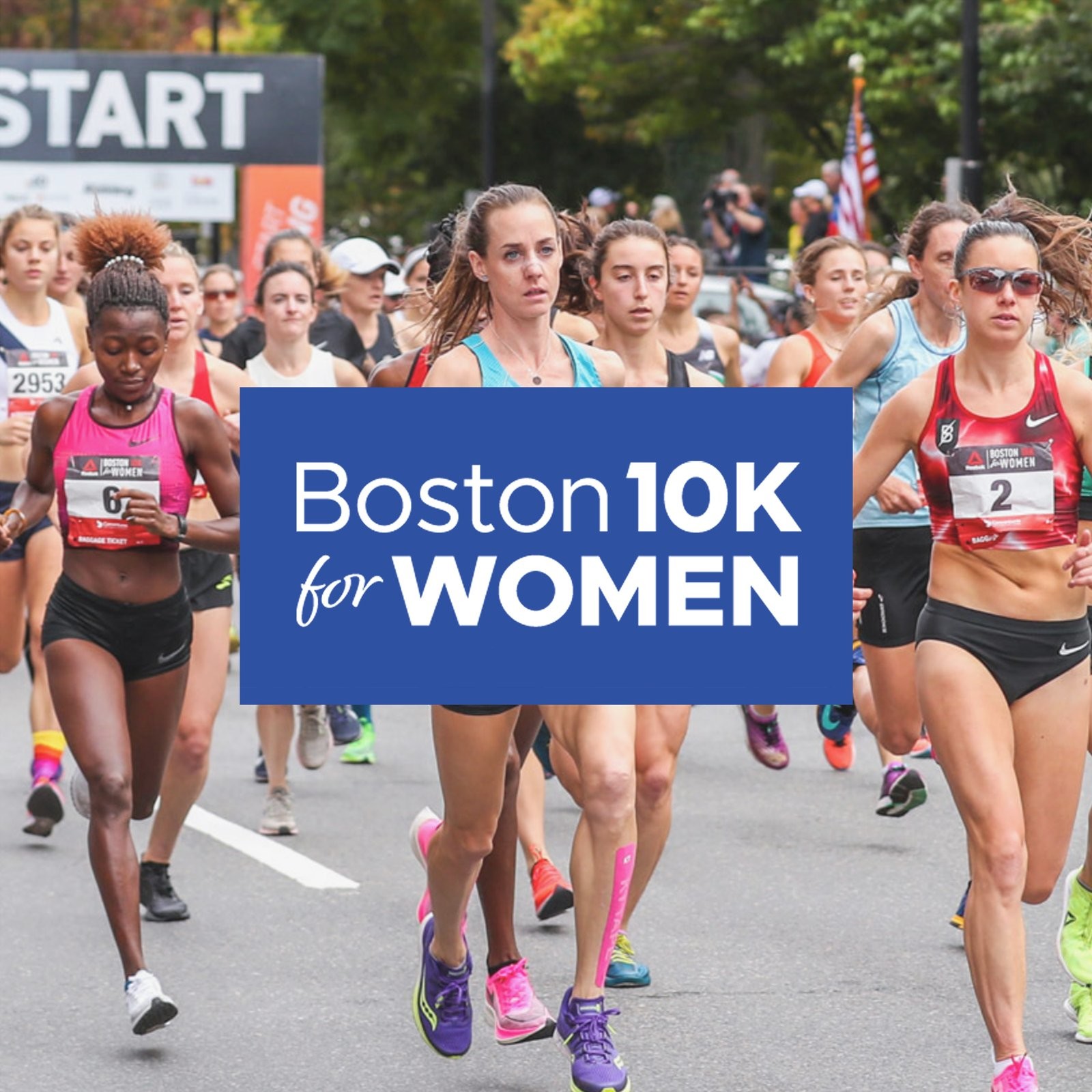
“When we recognized the opportunity to partner with such a historic and important race that supports female runners, we could not have been more excited to get involved,” said Erin Longin, Global Director of Running & Training at PUMA. “With PUMA Running we are looking to spark change in the running industry and champion female runners. The event brings out the best in women of all abilities, and it is a shining example of the sisterhood, compassion, and energy that unites us all. It’s a great day, and we can’t wait to be out there.”
“It’s a bounce back year for women’s running, and as runners reunite around the country, the sport needs companies like PUMA to lead, which is exactly what they’re doing,” said Dusty Rhodes, who founded the race in 1977. “A road race is where everyone can line up as equals, compete, have fun, and support each other. It’s a unifying phenomenon, and PUMA recognizes the power of race day.”

Held every year on the second Monday in October, race organizers yielded their traditional race date to accommodate the 125th Boston Marathon, scheduled for Monday, October 11, 2021. The race date for 2021 Boston 10K for Women will be announced shortly, and the event will accommodate as much of an in-person component as it prudently and safely can.
The event features hours of pre-race and post-race athletic and wellness programming to complement the flat and fast 6.2-mile course, where runners cheer for each other along stretches of the Charles River. The course features sweeping views of the Boston skyline, a few twists and turns, and comes to a dramatic finish at Boston Common. In 2020, the event converted to a six-day virtual event, where runners from 40 states and 10 countries took part in the 10K at a time and location of their choosing.
About Boston 10K for WomenEstablished in 1977 as the Bonne Bell Mini Marathon, the Boston 10K for Women is the longest-running all-women’s sporting event in New England. With thousands of runners and spectators each year, it’s New England’s largest all-women’s road race, and has been organized every year by Conventures, Inc. The race features a flat out-and-back course through Boston’s Back Bay neighborhood and scenic stretches of Memorial Drive in Cambridge. More than 183,000 women have raced in the event since its inception. For more information on the race please visit www.boston10kforwomen.com.
(06/05/2021) ⚡AMP
by Running USA
ASICS introduces tool to measure running’s effect on the mind
ASICS has launched a worldwide study on the effects of exercise on mental health and wellness, and everyone is invited to participate. The study employs a new online tool designed by the team at ASICS called the Mind Uplifter, and it uses facial recognition software and individual self-reports to analyze your mental state before and after exercise. The program announcement was timed to coincide with Global Running Day, and ASICS is hoping to reach one million minds in the coming months.
The Mind Uplifter

The Mind Uplifter takes users through several steps. First, it performs a facial scan, which the ASICS team says will read your emotional state. Once your scan is complete, you’ll be asked six quick questions about your current mental state, such as “How calm are you right now?” and “How confident are you feeling?” You respond on a scale from zero to 10.
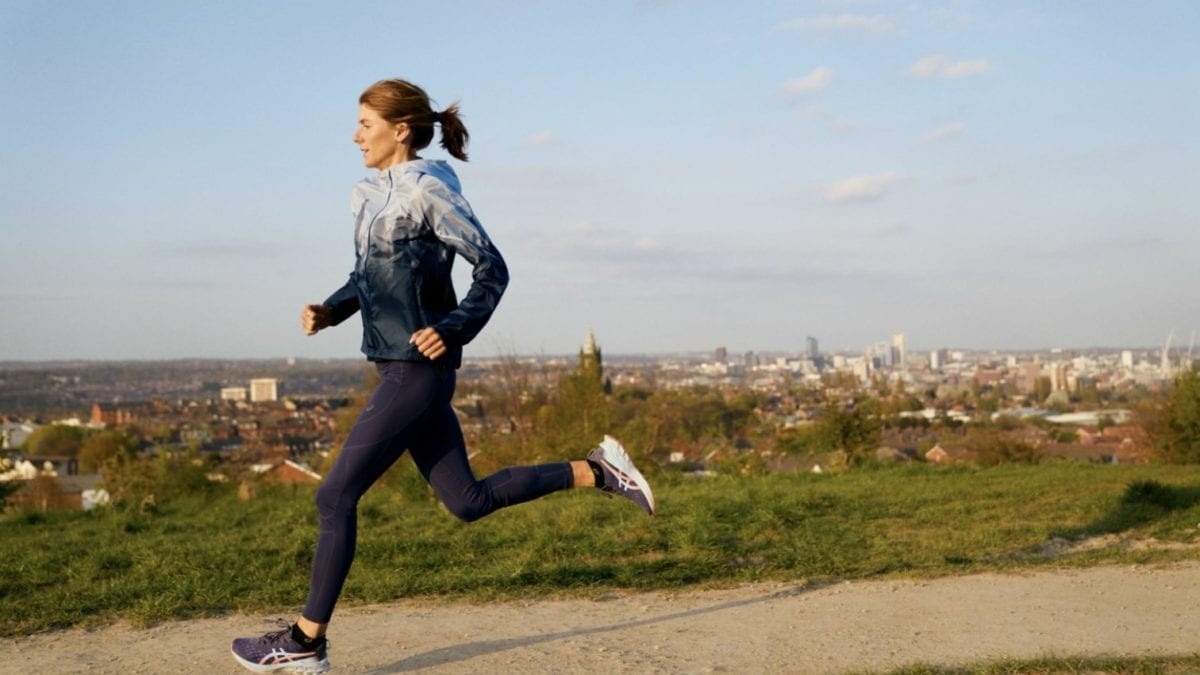
You then select the type of exercise you’re about to do (along with running, there are many other options), and you can head out to begin your workout. After your exercise, you return to the program, note how long you worked out, repeat the facial scan and answer the same questions as before.
Once complete, you will see “Your Mind Uplift,” which is an interactive and colorful cloud-looking graphic that illustrates your current mental state. You can compare that to your mental state before the workout, and the individual categories will be listed, showing how your mindset differed before and after you exercised.
The final stop on the program webpage is the World Uplift Map, which is not yet ready to view. By July 1, the team at ASICS hopes to release the map, which will be populated by the Mind Uplifts of people across the globe. Once it’s ready, you will not only be able to see how exercise affects people worldwide, but also specifically how it impacts people in your country and even in your city.
Exercise on the mind
As the team at ASICS notes (and as any runner knows), even a short 20 minutes of exercise can work wonders for your mind. In their preliminary research, the ASICS team looked at the effect of running for just 20 minutes, and the results were staggering. Researchers found that participants experienced a 13 percent increase in alertness, a close to 16 percent jump in calmness and that they were 14 percent more content and 13 percent more relaxed after their runs.
On average, those studied saw their overall cognitive scores (which are determined by the Mind Uplifter questions) jump by a whopping 17 percent, while their emotional scores (which are noted by the facial scan) rose by 12 percent. That’s after just 20 minutes of working out and in just one sport. Opening up the Mind Uplifter to athletes around the world will give ASICS – and exercisers – the chance to see how specific sports can affect the mind differently, and how the duration of exercise could impact one’s brain.
Mind Uplifter participation
To spread awareness of the Mind Uplifter, ASICS is asking participants to share their results on social media. The company is also offering a virtual event called the World Uplifting Minds Run, which will be open until June 30. This is a free event, and anyone interested can run or walk 5K or 10K and track it on the ASICS Runkeeper app.
In addition to the World Uplifting Minds Run, ASICS has said it will host a number of other sporting events over the course of the rest of the year to “encourage wider participation and demonstrate the power of all sports to uplift the mind.”
(06/05/2021) ⚡AMP
by Ben Snider-McGrath
Scottish middle-distance runner Josh Kerr runs fastest-ever 1,500m on U.S. soil at Stumptown Twilight
The Stumptown Twilight meet in Portland, Oregon on Thursday night saw several stellar performances, but it was Scottish middle-distance runner Josh Kerr who stole the show. The 23-year-old won the men’s 1,500m, blowing away the field by more than four seconds and crossing the line in 3:31.55. His time breaks the previous American soil record of 3:32.34, set by Rashid Ramzi of Bahrain in 2006.
His result is also the fastest time in Europe this season, and is the second-fastest 1,500m time this year in the world behind Kenya’s Timothy Cheruiyot, who ran 3:30.48 in Doha on May 28. This is a new personal best for Kerr, who set his previous PB of 3:32.52 at World’s in Doha in 2019, where he placed 6th overall.

While Kerr originally hails from Edinburgh, Scotland, he competed for the University of New Mexico Lobos, where he set the men’s 1,500m NCAA record of 3:35.01 in 2017 (his record has since been broken by Notre Dame runner Yared Nuguse). The Olympic standard in the men’s 1,500m is 3:35.00, and considering he is currently the fastest athlete in Europe at the distance, Kerr has likely solidified his spot on Great Britain’s team headed to Tokyo this summer.
(06/04/2021) ⚡AMPby Brittany Hambleton
Why the first 10 minutes of running can be the worse for everyone
Ask anyone what the worse bit of their run is and chances are they will say the first 10 minutes or so. We all know it. That feeling of having your worst enemy on your shoulder, cruelly whispering ‘you can’t do this’: your breathing is all over the place and you wonder if indeed you did lace into concrete shoes instead of trainers.
Whilst we might not get as far as loving it, there are lots of things we can do to make it better. Why does it happen: Basically, all those physical and mental responses we get early on in any run, are our body’s way of saying, ‘what the hell are you asking me to do! You have got to be joking! when you ask it to go from ‘I’m very happy just existing’ to running.
To use the analogy of the car, you are asking your body to go from cold start, it’s not been used for a while, to 5th gear and speeding along the motorway without making any gear changes. A little bit of very simplified background…. (feel free to skip this and go straight to ‘what to do’) Our bodies are fuelled by various different energy systems, some which require oxygen (aerobic) and others that don’t (anaerobic) and whilst they operate in parallel, each is suited to a particular intensity of effort.
At the very top of the spectrum is the ‘Usain Bolt’ intensity, fuelled by a system which only lasts for around 10 seconds. It is no coincidence that the 100 m record is around this time. When it runs out, sprinters are relying on slowing down the least, rather than running faster. Very few of us will ever take part in a 100m sprint but this same energy system is present when we set off on those first few steps of a run, in fact when we go from resting to any activity. When this ‘B of the Bang’ source diminishes we switch to an energy system which uses stored glucose/glycogen but still doesn’t need oxygen and lasts for around 60 – 120 seconds.
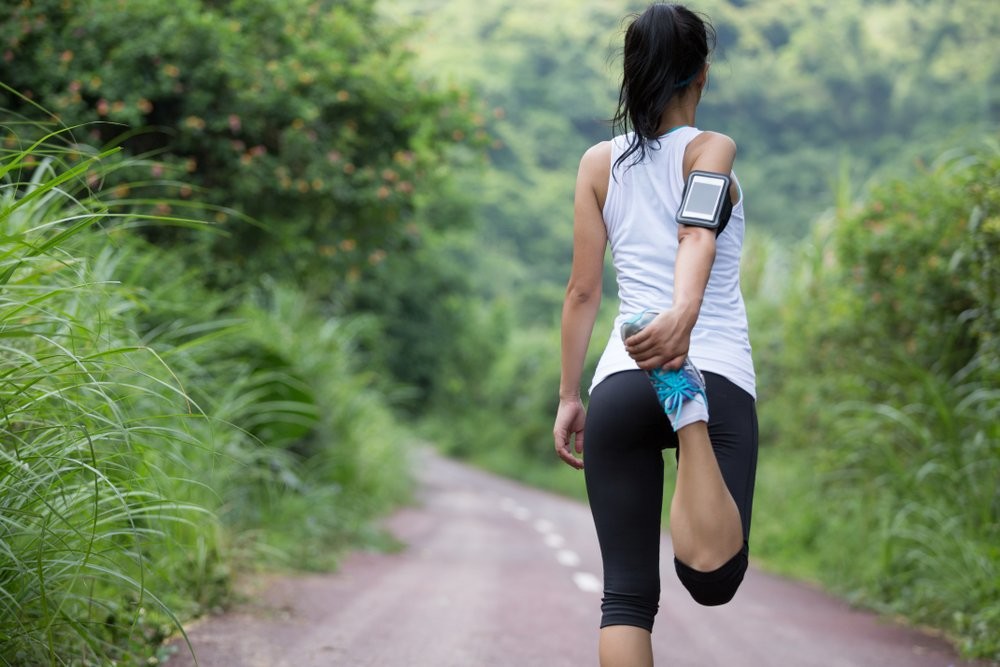
A by product of this is lactic acid: the stuff which makes our legs feel heavy, gives us shortness of breath (recognise any of these?). Beyond this we are left with the work horse, the aerobic energy system, which uses oxygen, carbohydrates, fats and proteins to create energy and if nurtured can go on indefinitely. So when we set off on that run our bodies use up the first 2 sources of energy in the first few minutes and then are left rapidly adjusting to use the 3rd. Pretty clever really. What we need to do is learn how to ease the transition.
What can you do to make it better WARM UP Getting your body and head ready for running is not a bolt on, nice to have. It does what it says on the tin and gets our heart, muscles and lungs ready and prepped for running.
Going back to the energy systems, warming up means we have already acclimatised the body to needing more oxygen and so it doesn’t spend the first few minutes bringing in huge lungs fulls and feeling generally pants. The warmer your joints and muscles are before your start the less effort and therefore the less energy, oxygen they need when you get going running.
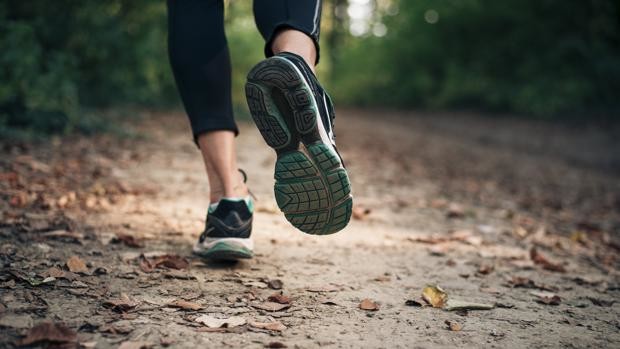
START OFF SLOW Even with a good warm up it pays to start off at a slower pace and work up to the effort you want to be putting in for the majority of the run. And I use the term ‘effort’ deliberately, as using the less techy RPE (Rate of Perceived Effort) to gauge your run is far more effective and easier than heart rate or pace. Aim for a ‘chatty’ kind of running: you can pretty much hold a conversation rather than feeling really out of breath. If 1 is sitting down watching TV and 10 is maximum effort, you feel sick, then aim for around 4-6. Even though it may feel super slow, this level of effort produces the best results in terms of your overall fitness. You will speed up as you get fitter but your effort levels will feel the same. It is very common for runners and in particular new runners to start off too fast and then come unstuck.
​DISTRACTION Listen to music, podcast and give your brain something else to tune into for the first few km or minutes. Alternatively run somewhere that keeps your eyes and brain occupied. FUEL Make sure you eat and drink regularly during the week. Those 10 minutes are a lot worse when you are dehydrated.
BREATHE Sounds obvious but take notice of your breathing. If it is short and shallow, try and focus on a calm, controlled out breathe and the in will follow. The more oxygen you take in the quicker the energy systems adapt. If after a few minutes you can't get it under control, then you are going too fast, slow down. You can do all these things but there will be times when the first 10 minutes really suck and so there is something about training your brain to tough it out and ignore the 'Stop!' voice in your head. Telling yourself that you know what is going on and that it will get better is a simple but useful technique. Kind of a, 'I have been here before and I have overcome it' type conversation with yourself. But equally importantly is listening to your body, stopping running and saving it for another day.So whilst you may never learn to love the first 10 minutes, there is plenty you can do to make the most of them.
(06/04/2021) ⚡AMPby Run Surrey Hills
Doping-Olympic champion Brianna McNeal banned for five years, CAS to hear appeal before Tokyo Games
American Olympic 100 meters hurdles champion Brianna McNeal has been banned for five years for an anti-doping rule violation (ADRV), the Athletics Integrity Unit (AIU) said on Friday, with her participation in the Tokyo Games in doubt until her appeal is heard.
McNeal, who had been charged and provisionally suspended for "tampering within the results management process" in January, was sanctioned by a Disciplinary Tribunal as it was her second violation of World Athletics' anti-doping rules.
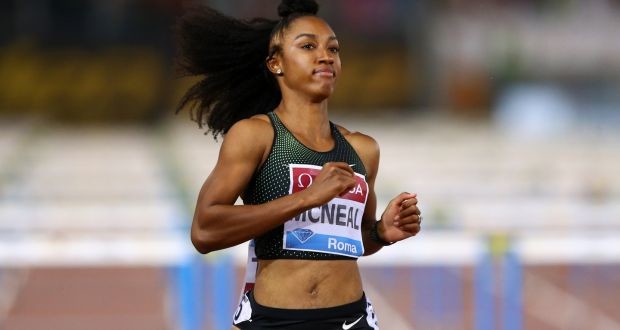
The ban is effective from Aug. 15, 2020. The AIU said McNeal has appealed against the decision to the Court of Arbitration for Sport (CAS), with the case set to be heard before the July 23-Aug. 8 Tokyo Olympics.

The AIU added that CAS had granted McNeal "provisional relief and temporarily stayed" the tribunal's decision so she can compete until the end of the U.S. Olympic trials on June 27.
The AIU did not elaborate on its decision for "confidentiality reasons".
McNeal, who won gold at the 2016 Rio Olympics and was world champion in 2013, had denied testing positive for any banned substance.
The 29-year-old led a U.S. clean sweep of the 100m hurdles podium at the 2016 Olympics but was banned for a year when she missed three out-of-competition drug tests, which constitutes an ADRV.
Her ban, which was applied for the 2017 season, resulted in her missing the World Championships that year.
(06/04/2021) ⚡AMPby Toby Davis
Tokyo 2020 Olympic Games
Fifty-six years after having organized the Olympic Games, the Japanese capital will be hosting a Summer edition for the second time, originally scheduled from July 24 to August 9, 2020, the games were postponed due to coronavirus outbreak, the postponed Tokyo Olympics will be held from July 23 to August 8 in 2021, according to the International Olympic Committee decision. ...
more...World record-holders ready to clash in Hengelo
Five world champions, four Olympic gold medallists and two world record-holders are set to compete at the FBK Games – a World Athletics Continental Tour Gold meeting – in Hengelo on Sunday (6).
Pole vault world record-holder Mondo Duplantis will be raring to go after his 23-meet winning streak came to an end at the Wanda Diamond League meeting in Gateshead at the end of last month. Battling tough conditions, the 21-year-old from Sweden gave the bar a slight nudge on his final attempt at 5.80m – what would have been a winning height – and it came down, meaning victory went to two-time world champion Sam Kendricks.
Kendricks won’t be in Hengelo, but Duplantis will have one eye on the US vaulter’s meeting record and Dutch all-comers’ record of 5.91m.
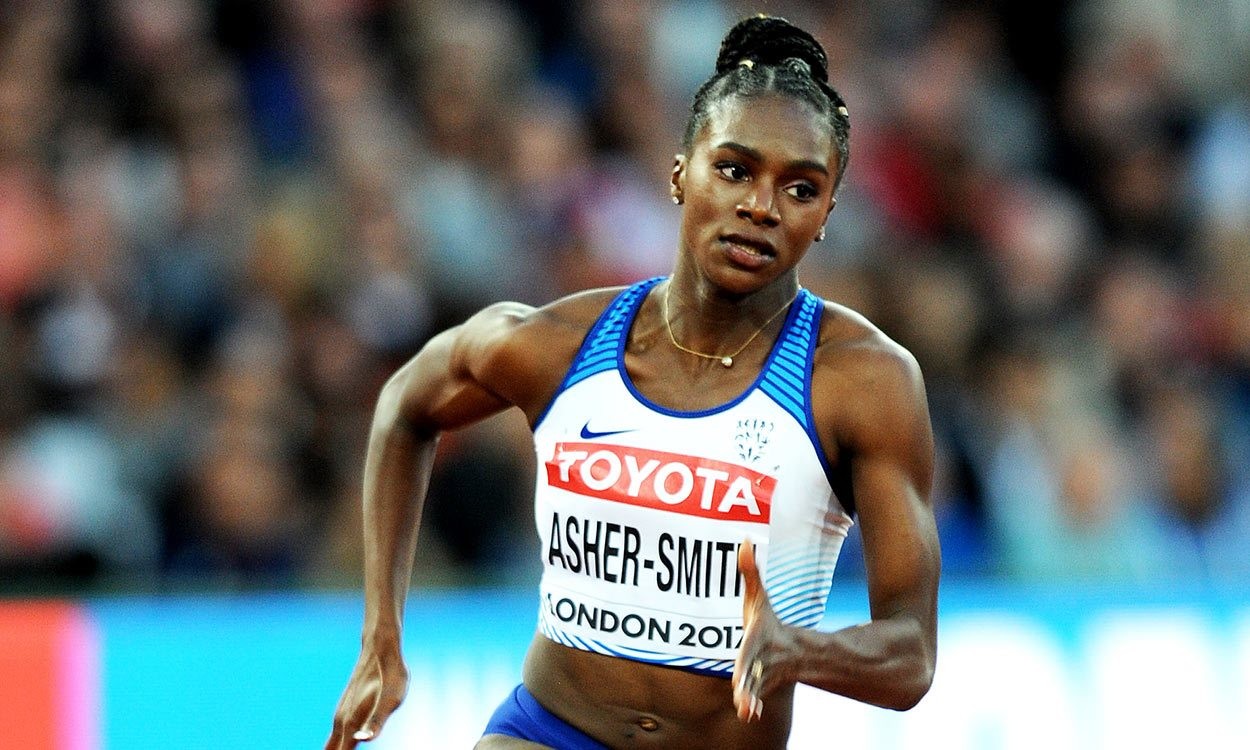
Olympic champion Thiago Braz and Dutch vaulter Menno Vloon, who set a national indoor record of 5.96m earlier this year, are also in the line-up.
Double world champion Sifan Hassan will return to the track on which she set a European 10,000m record of 29:36.67 last year and will again contest the 25-lap discpline. The Dutch distance runner has tested her form over a range of distances this year, clocking 8:33.62 for 3000m indoors, followed by 14:35.34 for 5000m and 2:01.54 for 800m outdoors.
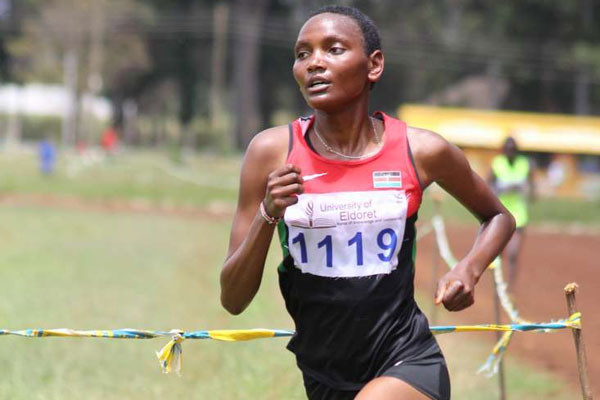
Kenya’s Daisy Cherotich, New Zealand’s world finalist Camille Buscomb and Canada’s Andrea Seccafien will all be hoping to emerge from the race with lifetime bests.
World 800m champion Halimah Nakaayi will open her 2021 campaign over her specialist distance. The Ugandan middle-distance runner takes on a quartet of Britons – Laura Muir, Kelly Hodgkinson, Jemma Reekie and Adelle Tracey – as well as Norway’s Hedda Hynne and France’s Renelle Lamote.
In the men’s event, indoor sensation Elliot Giles lines up for his first outdoor 800m of the year, taking on fellow Brits Max Burgin – who set a European U20 record of 1:44.14 in Ostrava last month – and Daniel Rowden. Tony van Diepen, one of the Netherlands’ top performers at the World Athletics Relays Silesia 21, is also in the field.
Recent Montreuil winner Abel Kipsang goes in the men’s 1500m where he’ll take on Uganda’s Ronald Musagala and Britain’s sub-3:30 performer Jake Wightman.
Asher-Smith, Kerley and McLeod set to produce sprint highlights
Although she has raced there only once before, world 200m champion Dina Asher-Smith has fond memories of racing in Hengelo.
It is where, as a teenager back in 2015, she set her first senior national record over 100m, clocking 11.02. Six years on from that performance, and having bagged many more records and medals, the world 200m champion will be hoping for a sub-11-second clocking to improve on the 11.35 season’s best she recorded when winning in Gateshead, running in heavy rain and into a -3.1m/s headwind.
Nigeria’s world and Olympic medallist Blessing Okagbare, who has a season’s best of 10.90, and two-time world 200m champion Dafne Schippers are also in the line-up.
World 4x400m champion Fred Kerley has so far this year produced his most impressive performances at 100m, clocking 9.91 and 9.96 in recent weeks. In Hengelo, however, he’ll step back up to his specialist 400m discipline and will aim to improve on the 44.60 season’s best he recorded in Doha last week.
(06/04/2021) ⚡AMPby World Athletics
Introducing the Country’s Fastest High Schooler
Hobbs Kessler is taking the running world by storm
Last February, Hobbs Kessler, a 17-year-old senior from Michigan who has committed to run for the University of Northern Arizona next fall, set a new high school record for the indoor mile. His time of 3:57.66 made him only the twelfth American high schooler to break the four-minute barrier since Jim Ryun first did it in 1964. The feat was all the more notable considering that Kessler’s mile PB coming into the race was a comparatively modest 4:08.4, which he ran last summer. As Track and Field News noted, Kessler’s record had come “seemingly out of nowhere.”

One explanation for Kessler’s sudden arrival into the upper ranks of American middle-distance running is that the pandemic has caused a number of rising stars to train in relative obscurity, with far fewer official meets to document the gradual progression of their talent. (Apparently, Kessler’s 4:08 mile last year was set in a time trial.) No wonder, then, that after his record-breaking run in February, the narrative around Kessler quickly morphed from Who is this guy? to What else is he capable of?
At last weekend’s Portland Track Festival, we found out. In the men’s 1,500-meters, Kessler, now 18, ran 3:34.36 to break Alan Webb’s 20-year-old high school record in the “metric mile” by almost four seconds—an eternity in such a short race. What’s more, Kessler’s time was also quicker than the men’s collegiate 1,500-meter record (3:34.68) and faster than the current Olympic standard (3:35.00). The guy few people had heard of six months ago was suddenly on the shortlist for the greatest U.S. high school runner, ever.
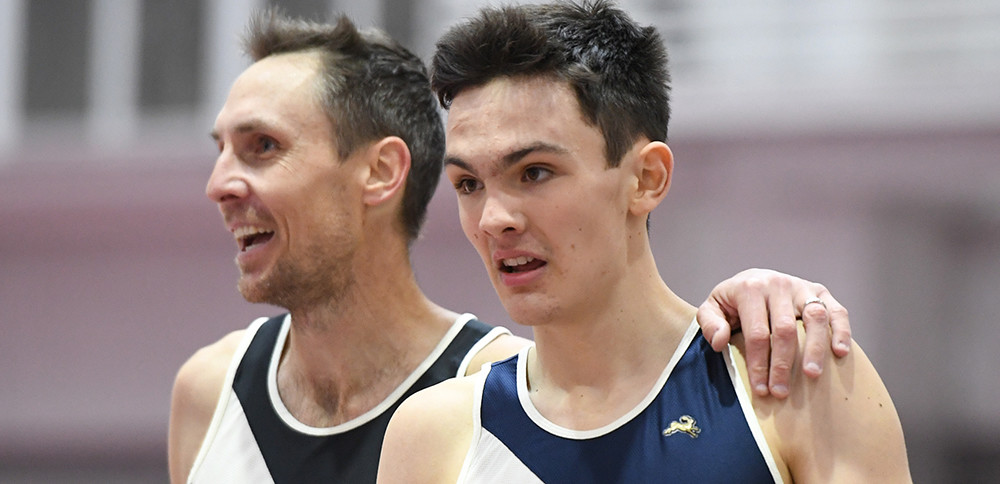
Until recently, track and field wasn’t even Kessler’s primary focus. In 2019, he represented the United States at the IFSC Climbing World Youth Championships. I caught up with Kessler to chat about the miraculous evolution of his young running career, choosing track over climbing, and his plans for the future.
OUTSIDE: Last summer, you cracked 4:10 in the mile for the first time. Less than a year later, you’ve run a 1,500 that converts to a 3:51. Are you shocked by how quickly you’ve progressed in such a short time? Can you still savor the moment?
KESSLER: In early 2020, I just wanted to run 4:13, indoors, in the mile. And then it kind of snowballed from there. I’ve gotten used to shifting my mindset on how I view myself as a runner. As I keep upping it, I always think, “OK, this is the last time,” but it hasn’t been so far. So, it’s been a little crazy in that regard, but I’m really enjoying it. I feel like I’ve been able to adapt my mindset really quickly—a lot faster than my folks. I think they’re still stuck six months back, which is pretty funny.
By “shift in mindset,” I’m guessing you mean a shift in expectations that you have for yourself. Are you worried that you might not be able to live up to your own standards, considering how quickly you’ve progressed?
I guess it can be a double-edged sword. In the winter, before I broke four for the first time, the 60-second-per-lap pace was everything, so that’s what we did all our workouts at. Now that I’m more fit, 57 is the new 60. But it’s all about not viewing it as fast. Because if I thought of 4:10 as fast, then I’d probably be running 4:10. So, you can control some of it with your mind. As far as not living up to expectations, I know that at some point I’m going to take a hit and not be running as well. But this season, I’ve been taking everything in stride and good things have been happening. I’ve never worried that I wasn’t going to run well.
There’s a theory that the bizarre circumstances of the pandemic might have helped some athletes nurture their talent by clearing their racing schedule. Is there any sense in which the events of last year changed your approach to training and racing?
As far as training goes, I would say the pandemic allowed me to just take a block from March 2020 to August to just get stronger. When the season got shut down, my dad switched me over to doing tempos on Tuesdays and hills on Fridays. But I was doing a lot of really fast strides because I wanted to develop my speed. Trying to work on my form. I’m a fairly fresh runner and haven’t been at it that long, so my running form is still very malleable. I didn’t have a race to worry about, so I just ran two big workouts a week and a big long run. I think people are realizing that racing less and training more can yield faster times. I’ve probably only gone all-out five times this year—but when I do decide to go all-out, I put a lot of emphasis on not wasting the opportunity.
I know that you are coached by your father, but also by Ron Warhurst—a legend in the coaching world, who is credited with “inventing” one of the sport’s most famous workouts. Do you have a favorite session that you like to do—perhaps something from Warhurst’s catalog of torture?
Both Ron and my dad have a lot of input in my training, but I’m more on Ron’s program now. I would say that my favorite workout of Ron’s has to be “Michigan,” because it’s his signature thing and you hit pretty much every pace and it can also be adjusted to wherever you’re at.
You’ve qualified for the Olympic Trials in the 1,500 as a high schooler. That’s nuts. But you’re also in a good spot in which there’s no pressure and where, presumably, you can just go and enjoy the experience. How do you plan to approach the Trials and do you have any other running goals for the summer?
After I broke four minutes in the mile, getting to the Trials was really the big goal. So I’m very excited about that race. Originally, I was just viewing it as a great experience where I could learn a lot so that, in three years, I might be in a position to compete for a spot on the team. But now that I’m one of the few people with the Olympic standard, my mindset has changed a bit. My thinking is that, if I’m there, I might as well have a run at the team. It’s a win-win because if I make the Olympic team that would be awesome, but if I don’t, I’m only 18 and will have a lot more attempts at it. I feel like I’m in a very cool spot where there’s no pressure, but I might as well give it a go.
You have an impressive climbing background, but it seems like you’ve decided to prioritize running for now. Was that decision based primarily on the fact that running is where you have the most talent, or was it something else?
I’m definitely prioritizing running, but I wouldn’t say it’s a conscious decision. That’s just the sport that I’ve drifted more towards in the past year or two and it’s what I’m more excited about. It’s not that I decided that I could be more successful at it, so much as that I’ve drifted towards it throughout high school.
Do you feel like the two sports complement each other in some way?
I think climbing really helps running, but running doesn’t really help climbing.
How so?
Well, the big carryover from both—and this does go either way—is that the mental stuff is the same. Race nerves in running and redpoint jitters in climbing. So there it’s the same stuff. In competitive climbing, I had to develop skills to deal with it, which translated directly to my running. But I think running destroys my coordination a little bit for climbing, so it’s hard to do both at the same time. I tried to be really good at both at the same time, but it just wasn’t possible because they started fighting each other a little bit. So I decided to let go of trying to be really good at climbing and to just do it because I enjoy the act of it.
You’ve now run a time that is faster than the NCAA 1,500-meter record. Unsurprisingly, this has fueled speculation that you might decide to go pro and skip college-level racing altogether. Do you think that early success can obscure the fact that running talent still needs to develop gradually?
When I was talking to colleges that was one of the biggest criteria I had. I wanted to make sure they developed me and weren’t just trying to get as much out of me while I was in school. So I’ve kind of had that view. Running aside, if I were to go pro, it would have to create a situation that would be worth missing out on the experience of being in college and being on a team. And I really want that experience. I’m not ready to be done being on a cross-country team. So going pro would have to outweigh that by a significant amount. Everything seems really immediate and important right now, but I have confidence it will even out. Whatever decision I make, I have confidence in the people who have been guiding me so far.
(06/04/2021) ⚡AMPby Outside Online
How to Mentally Pull Through a Tough Moment
Whether training or racing, you’re going to hit some challenges. Here’s how to motor on.
You may not be back to racing quite yet, but you’re likely starting to train for a fall goal. Whether it’s your first time prepping for a race or your first time back at hard practice after a break, it’s time to train your mind as well as your body. As Under Armour coach Tom Brumlik will tell you, “The mind leads the body.” That means putting in the work to get your brain tuned up along with your body. Here’s how.

Tap into the Power of Affirmations
In order to set a baseline of positivity across all aspects of life, not just training, Brumlik recommends practicing positive self-talk. “I’m big on affirmations,” he says, short complete sentences you can state anytime. “I tell my athletes to practice ‘I am’ statements throughout the day, even when they’re not training or racing.” For instance, if you’re in the first stages of a giant project at work and feeling overwhelmed by how much of it lies ahead, tell yourself, “I am on my way.” When your alarm goes off at 0-dark-30 for a run, say, “I am a morning person.” Whatever the case may be, it’s the practice of “I am” statements that leads to the gains. “You can’t pull them out on race day alone,” says Brumlik. “The practice has to be ingrained.”
And Develop Some Mantras Too
In addition to finding some all-purpose affirmations that can apply to all facets of your life, you’ll also want to have some shorter, more running-specific mantras in your mental toolkit. Any training session or race can feel like a roller coaster, with highs and lows, twists and turns. One minute you’re feeling great, flying through the intervals, and the next you’re facing the biggest, steepest climb of your life. Knowing and embracing that fact—and having an automatic response—will help you push through.
Research shows that when you repeat a mantra whenever you hit a challenge, it can give you a mental and physical boost. The wording can be anything that reliably lifts your spirits. Think along the lines of “I am strong” or “I’ve got this,” for instance. Or repeat something that relates to the act of running, like “Swift and smooth,” “Light and fast,” or “I eat hills.” Other options include “Light it up” or “Go for it.” Whatever serves to motivate you, used on repeat, is what will get you through.
Focus on Your Breathing
You can put your breathing to use in a variety of racing and training scenarios. “I like to use breathing before a race or hard workout to calm my nerves,” says Brumlik. “You can also use it to relax and smooth things out during a race.” The quality of your breathing in the midst of a hard workout or race can also serve as a good indicator of your effort level. If you’re in the first mile of a race and find yourself breathing hard, it’s time to dial things back so you have something left for the end. “It’s very common to go out too hard, so pay attention to your breathing rate and breathe slowly and deeply to slow yourself down if needed,” Brumlik recommends. There are more than just physical upsides to using your breath as a barometer, as Brumlik suggests: in doing so, you're practicing mindfulness which can help you create focus, foster calmness, and, most importantly, reinforce that you are in control of your run.
Count Your Steps
If you find yourself in the pain cave during a workout, mentally settle into your cadence to take your mind away from the challenge. Have a look at the MapMyRun app to find your perfect cadence and then focus on the rhythm of your feet. Before long, you’ll forget the pain and fall into an easier, more efficient stride. “Think about light, quick steps, which will help your mechanics,” says Brumlik. “Think about driving your arms back and your foot straight down to get the most out of your stride.” Building mental skills is all about developing a positive mindset, says Brumlik. “Running can be a challenging sport,” he says. “Stay away from words like ‘I can’t’ and instead focus on positive practices until they become a habit.”
(06/04/2021) ⚡AMPby Outside Online
WHAT IS MINDFUL RUNNING — AND WHY YOU SHOULD GIVE IT A TRY
Is mindful running all about taking it easy and slow or can it actually help you run faster? Here’s what mindful running is along with a few reasons why you should give it a try.
With more technology than ever to track metrics, like heart rate, running power, lactate threshold, and VO2 max, it can be easy to slip into constantly eyeballing data during your runs.

Even if you do wait until after your runs to go over your data, a lot of runners choose other distractions like music, audio books, or even podcasts to get them through their workouts. While these things aren’t necessarily bad, one commonly neglected aspect of running is training the mind.
By taking a more mindful approach to running a few times per week (or even as part of a warm-up or cool-down), runners can improve mental conditioning that will in turn boost performance, recovery, and bring some of the joy back to the sport you love.
Let’s go with the flow and explore what mindful running is and why it’s beneficial for runners of all levels.
WHAT IS MINDFUL RUNNING?
The most basic definition of mindful running is to become mentally connected with your body during your runs.
While there are many different ways runners can practice this technique, the principal idea is to get rid of distractions while you run, concentrating on how you feel. Whether it’s looking at your metrics every minute, being overly concerned with how fast or far you have to go, or even thinking about that argument you had with a co-worker during a run, these things tend to take away from the mind-body connection and being in the moment.
Even though meditation and mindful running do have their differences, the two practices are often used together:
Meditation concentrates on removing the things in our life that cause stress or distraction in order to create calmness in the mind.
When you practice mindful running, you can use many of these same principles to not be distracted by things outside of your activity, focusing instead on embracing how you feel and being in tune with your body.
Being connected with your running often moves the focus towards things like your breathing, how your arms and legs are moving, or parts of the body that may be feeling tight or weak.
While some runners learn to ignore the pain or difficulty that running often inflicts, mindful running embraces everything going on within the body, from nutrition to how much sleep you’ve gotten the previous night, to create an awareness that puts you more in tune with your body.
CAN MINDFUL RUNNING HELP YOU RUN FASTER?
In the past, runners have typically focused on physiology and physical conditioning as a way to improve performance. Going further, adding intervals for speed, and doing strength training have become the common approaches, while mental conditioning is often an afterthought.
The problem is, always focusing on physical abilities without also training the mind can create a disconnect, causing negative thoughts and a higher perceived exertion when things aren’t going your way during an event.
While there have been limited studies on the subject in the past, Asics recently conducted an experiment with runners of varying ability levels to determine just how much running performance can be affected by psychological factors.
MINDFUL RUNNING EXPERIMENT PART 1
Participants were placed in a controlled environment (150-meter track, indoors) and asked to each run two separate 5Ks at different times.
During the first 5K, runners ran around a dark track with only a spotlight that allowed them to see a few feet ahead. There was no clear finish line, no music, and no metrics to monitor.
MINDFUL RUNNING EXPERIMENT PART 2
For the second 5K, participants were placed in a more race-like environment. There were lights, cheering fans, clocks, and gadgets to monitor metrics.
In the more psychologically difficult environment where runners were forced to focus only on their body, times were slower among experienced runners in the group by as much as 60 seconds, while less experienced runners slowed up to two minutes.
WHY PRACTICE MINDFUL RUNNING?
What the proponents of the blackout experiment actually show is that runners rely too much on outside factors during training and racing, and by training the mind regularly you can in fact improve performance.
When you think about it, it does make sense.
There will always be moments during a run when things get tough. It could be those times when you just can’t seem to maintain your pace, or that heavy feeling in your legs that suddenly becomes too difficult to ignore.
Maybe it’s that lonely spot on the course where there are no spectators, when none of the other participants are next to you, and the beeping on your watch isn’t enough to push you forward. This is the point when the psychological battle becomes bigger than the physical one, and if you haven’t spent enough time training the mind, it can be difficult to overcome.
One of the primary researchers of the Asics study, Professor Samuele Marcora of the University of Kent’s School of Sport and Exercise Sciences, had this to say about the experiment and overall importance of training the mind.
“We wanted to show the critical role the mind plays in athletic performance. The difference we saw between the experiment conditions in just one day is similar to the difference you would see after a four-week high intensity training program, so the mind shouldn’t be underestimated.”
FOR WHOM IS MINDFUL RUNNING USEFUL?
While practising the mind can certainly benefit those elite runners looking for an extra edge, mindful running can be useful for just about anyone.
Whether you’re completing a recovery run or are simply someone who uses running to relax and destress, practicing mindful running in order to better connect with the body can be a good way to achieve a balanced state of mind and find joy in your running.
Dr. Jo Corbett, another of the collaborators in the Asics blackout study, spoke about this connection.
“Despite the challenging conditions on the track, almost every runner said they felt a kind of euphoria at some point, which they referred to as ‘pure running.’ It shows the power of getting more in-tune with ourselves by occasionally shutting out the distractions.”
Whether it’s to be a happy runner or a faster one, mindful running is a technique worth practicing and including in your workout regimen. Just like strength training, yoga, or interval training, spending some time doing nothing but concentrating on the connection of body and mind will only make you a better runner.
(06/04/2021) ⚡AMPChina suspends all high-risk sports events after deadly mountain ultra-marathon
China has indefinitely suspended all ultra-marathons and trail-running events in the wake of a mountain race that saw 21 runners die in extreme weather last month.
The staggering death toll of the 100-kilometer (62-mile) ultra-marathon in Gansu province triggered a public outcry over lax industry standards and weak government regulation.
On Wednesday, China's General Administration of Sport said it is halting all high-risk sports events that lack a clear oversight body, established rules and safety standards, according to a statement on its website.
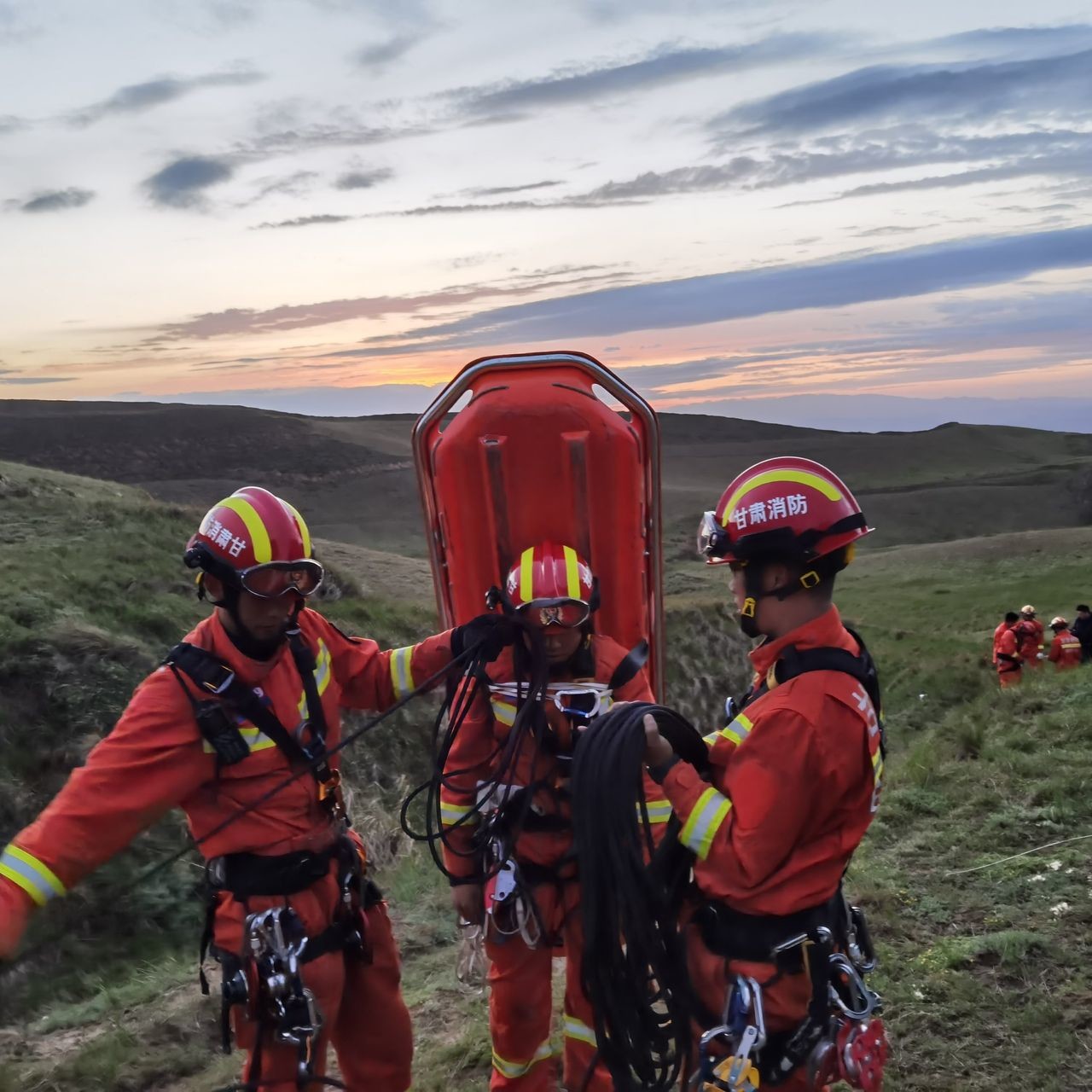
The sports suspended include mountain and desert trail running, wingsuit flying and ultra-long distance races, the statement said.
The administration did not specify how long the suspension would last, but said it is taking a detailed look into the country's sports events to improve regulatory systems, strengthen standards and rules, and enhance safety.

It also ordered local authorities "not to hold any sports competitions unless necessary" and call off any event with safety risks in the lead-up to the Chinese Communist Party's centenary, which falls on July 1.
Authorities didn't say how many races will be affected by the suspension. According to the Chinese Athletic Association, 481 trail races and 25 ultra-marathons were held in 2019 -- more than a quarter of all long-distance running events in the country.
Marathons and trail races have exploded in popularity as China's rising middle class picked up the running bug in recent years. But industry insiders say the races are often poorly organized, lacking safety measures and contingency planning -- and sometimes plagued by injuries and deaths.
Trail races are often held in far-flung parts of the country that lag behind in development and resources. The deadly mountain race on May 22 took place in the remote countryside of Gansu, one of the poorest regions in the country.
Most of the victims, including some of the country's best long-distance runners, were poorly equipped for cold weather and died of hypothermia -- a dangerous drop in body temperature caused by prolonged exposure to bitter cold.
The tragedy shocked China's running community and prompted public outrage, with many questioning whether organizers had planned the race properly or prepared participants for the extreme weather.
Even before the announcement on Thursday, dozens of marathons and trail-running races had been cancelled or postponed across the country in the past two weeks, according to state media.
(06/03/2021) ⚡AMPby Nectar Gan
2021 Royal Victoria Marathon eyes live return in October with half marathon, 8K
The first announced live in-person road race on the Island in more than a year and a half will take place Oct. 10 with an abbreviated version of the Royal Victoria Marathon.
The full marathon will not take place but half-marathon and 8K distances will be run. Instead of a water bottle half-empty, organizers say it’s a water bottle half-full for event-starved runners.
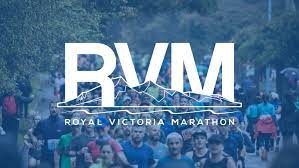
“Lots of people will be excited to lace-up their shoes and start training for their first in-person race for over 18 months,” said Jonathan Foweraker, president of the Victoria Marathon Society, in a statement.
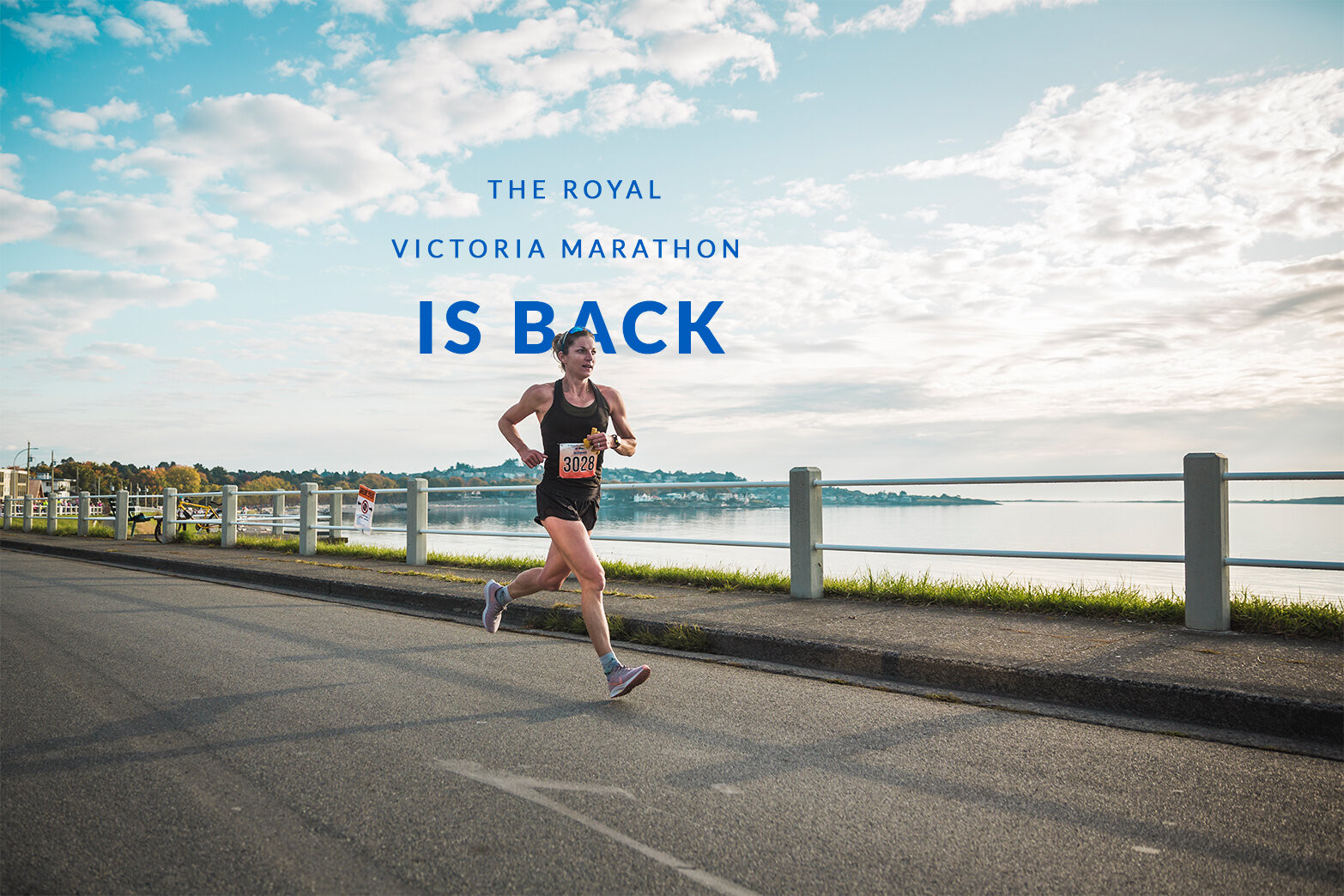
Race director Cathy Noel concurred: “It’s a great way to get back to a sense of normality in our community. Many of our enthusiastic volunteers are returning and will be cheering everyone throughout the race. We are very excited to return to an in-person race and know that runners will be equally thrilled to get to a start line and experience the excitement that builds prior to the gun going off.”
Despite the re-opening of sports, there are logistical reasons for not staging the full marathon distance, say the organizers.
“The marathon has traditionally attracted participants not only from Victoria and Vancouver but across Canada and abroad,” noted Foweraker.
“Not knowing exactly what travel will be like in the fall, we would prefer to stage the 41st Royal Victoria Marathon in 2022, when we can truly celebrate a return to running.”
Registration opens on Tuesday at runvictoriamarathon.com
(06/03/2021) ⚡AMPby Cleve Dheensaw
Royal Victoria Marathon
We are one of Canada's premier running event, offering athletes an unmatchable running experience on the pristine West Coast. Our world-class, record-breaking course is designed by runners, for runners. As the only Certified Boston Qualifier on Vancouver Island, come join us to compete, to conquer and to move from warm-up to reward. ...
more...Three former champions return to highlight 2021 Grandma's Marathon field
Kongin, Kiptoo, and Myers Could Join Prestigious Group of Repeat Winners at Duluth Race, former champions are expected to be on the starting line for the 2021 Grandma’s Marathon and will have the chance to join some very rare company if they can add another victory to their running resume.
Defending men’s champion Boniface Kongin is slated to return after outdueling the field in 2019, running a 2:11:56 to beat out four-time champion Elisha Barno and event record holder Dominic Ondoro. Kongin ran much of that 2019 race in record pace, but he was slowed in the final 10K as he dealt with severe cramping.
Not only will the Kenya native try to become the first back-to-back men’s winner at Grandma’s Marathon since Barno won the first two of his four titles in 2015-16, he would be just the seventh man to win multiple Grandma’s Marathons titles.
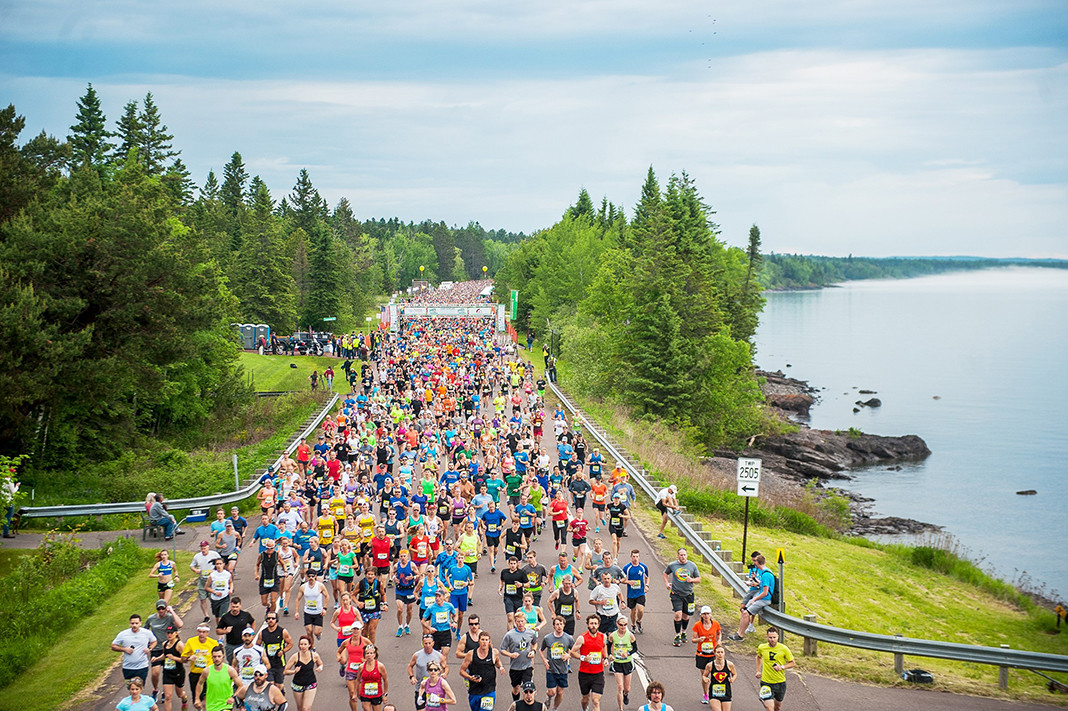
Sarah Kiptoo is also expected to return this year, and she will be trying to join Mary Akor (2007-09) and Lorraine Moller (1979-81) as the only three-time women’s winners of Grandma’s Marathon. The Kenya native won titles in 2013 and 2016 and also finished third in 2014 and 2015. She finished 10th the last time out on this course in 2019, finishing with a time of 2:38:46.
Kiptoo’s 2013 winning time of 2:26:32 was then an event record and only recently broken when Kellyn Taylor ran a 2:24:28 in 2018.
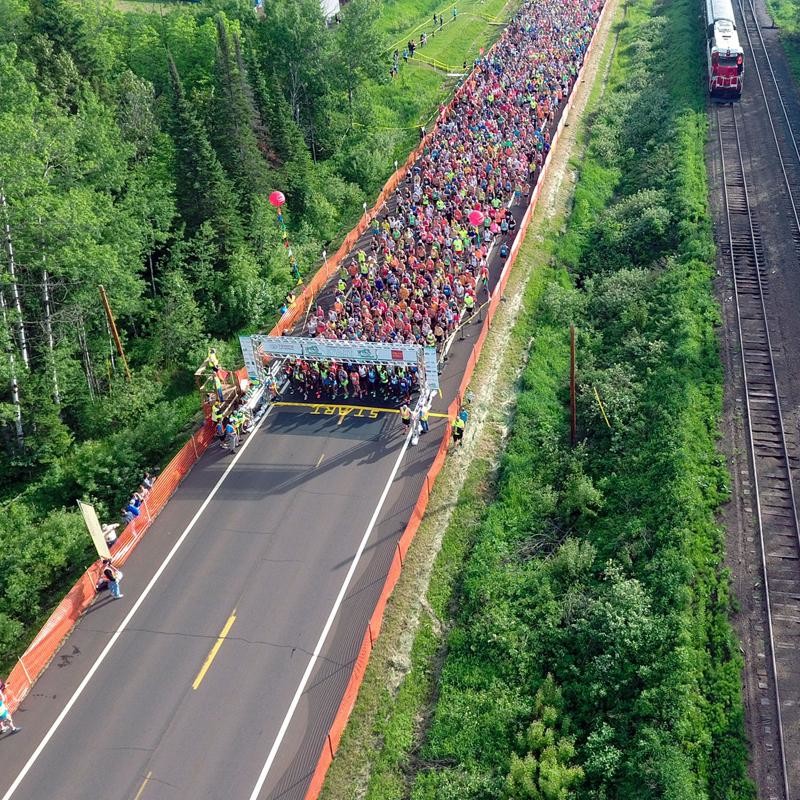
2014 champion Pasca Myers is also expected to compete in the women’s elite field, and she will be trying to become just the eighth woman to win at least two Grandma’s Marathon titles. She also ran here in 2019, finishing in eighth place with a time of 2:36:13.
With a reduced field for the 2021 Grandma’s Marathon, there are 29 men and 29 women expected to be in the elite field on Saturday, June. 19. The 45th annual Grandma’s Marathon is scheduled to start at 7:45 a.m. and can be followed live on our radio and TV partners, The Northland FAN 106.5 FM and WDIO-TV.
For more information, please call our office at (218) 727-0947 or visit grandmasmarathon.com.
(06/03/2021) ⚡AMPby Running USA
Grandmas Marathon
Grandma's Marathon began in 1977 when a group of local runners planned a scenic road race from Two Harbors to Duluth, Minnesota. There were just 150 participants that year, but organizers knew they had discovered something special. The marathon received its name from the Duluth-based group of famous Grandma's restaurants, its first major sponsor. The level of sponsorship with the...
more...2022 registration for Chevron Houston Marathon opens to all runners
Registration for the 2022 Houston Marathon Weekend of Events opens to all runners today, June 2.
The in-person race for the 50th Anniversary Celebration of the Chevron Houston Marathon and the 21st annual Aramco Houston Half Marathon will take place Sunday, Jan. 16, 2022. The We Are Houston 5K will take place on Saturday, Jan. 15, 2022.
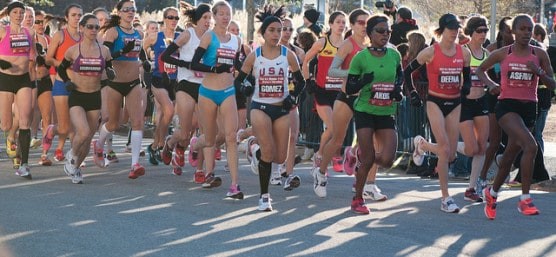
“Chevron is thrilled to be celebrating the 50th anniversary of the Houston Marathon alongside runners, volunteers, city officials and our own employees,” said Margaret Cooper, General Manager, Chevron Corporate Affairs, in a statement. “We look forward to seeing participants in January to commemorate this important milestone and the Chevron Houston Marathon’s incredible impact on our community.”
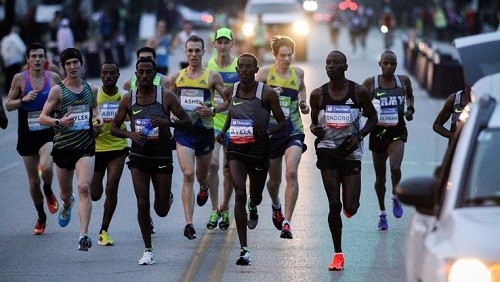
In addition to the in-person events, virtual registration options will also be offered at $75 for the marathon and $65 for the half marathon. Registration for the virtual events also open on June 2. The 2022 Virtual Houston Marathon Running Events will take place over race weekend Friday, Jan. 14 – Monday, Jan. 17.
“We are grateful for the continued support from our running community throughout the past year and look forward to safely welcoming back our runners to the road in Houston,” said Wade Morehead, Executive Director of the Houston Marathon Committee, in a statement.
“Through thoughtful planning alongside our city partners, we are confident that 2022 will be an event year that successfully celebrates the history and camaraderie of our runners, volunteers, race partners, and spectators - all who have made this event possible for the past 49 years.”
Additional details for the 2022 Houston Marathon can be found at chevronhoustonmarathon.com.
(06/02/2021) ⚡AMPby Briana Zamora-Nipper
Chevron Houston Marathon
The Chevron Houston Marathon offers participants a unique running experience in America's fourth largest city. The fast, flat, scenic single-loop course has been ranked as the "fastest winter marathon" and "second fastest marathon overall" by Ultimate Guide To Marathons. Additionally, with more than 200,000 spectators annually, the Chevron Houston Marathon enjoys tremendous crowd support. Established in 1972, the Houston Marathon...
more...Research reveals running boom during Covid-19 pandemic
More people have taken up running during the Covid-19 pandemic, and all of those intend to maintain their newfound passion for the sport once the pandemic is over.
The power of running during this time has been revealed on Global Running Day, with new findings from Nielsen – the official research and intelligence supplier to World Athletics – highlighting how runners have increased their participation and the health benefits they gain from it.
Across 10 surveyed countries, four in 10 people consider themselves to be runners and 30 per cent of those run at least once a week. Distinct from many other participation sports, recreational running has an equal participation split. Of all runners, 53% are men and 47% are women. More than a fifth of all runners reveal that they run more often than they did previously as a result of Covid-19 and most in that group say they will continue to run more often once the pandemic is over.

Among the many benefits of running is the chance to experience the ‘runner’s high’. “It begins with this peace of mind and then a greater ease of movement, a sense of power and confidence, optimism and hope, and you will often hear runners describe feeling loving and connected to everyone and everything,” explained Kelly McGonigal, a psychologist, educator and author of The Joy of Movement, during a recent World Athletics 'Run Anywhere' Webinar in collaboration with Mass Participation World.
The survey reflects this, with three quarters of all runners agreeing that ‘running is good for my mind as well as my body’.

Those aged 25-34 are most likely to be passionate about running, with 50 per cent agreeing that it is a part of who they are. Runners are more likely to consider themselves to be warm and friendly, family oriented, optimistic and passionate, showing greater confidence to associate themselves with positive personality characteristics.
For current runners, the biggest factors in the decision to run are health reasons, the ability to go at your own pace and not needing much equipment. Recent research by runrepeat.com also identified the growing popularity of running, supporting the findings of the Nielsen study.So, what are you waiting for? Why not mark Global Running Day by discovering the power of running for yourself?Further findings are available in the World Athletics and Nielsen Sports 'Recreational running consumer research study'.
(06/02/2021) ⚡AMPby World Athletics
Beatrice Chebet from Kenya sets meet record in France
World Under-20 5,000m champion Beatrice Chebet continued to cement her status at senior level with a meet record victory in the women's 5,000m race at the Montreuil International Track and Field Meeting in France on Tuesday.
Chebet, who days earlier stormed to victory in Doha, won in Montreuil in 14 minutes and 52.06 seconds to edge out Kalimantan Gezahegne from Bahrain in 14:52.92.
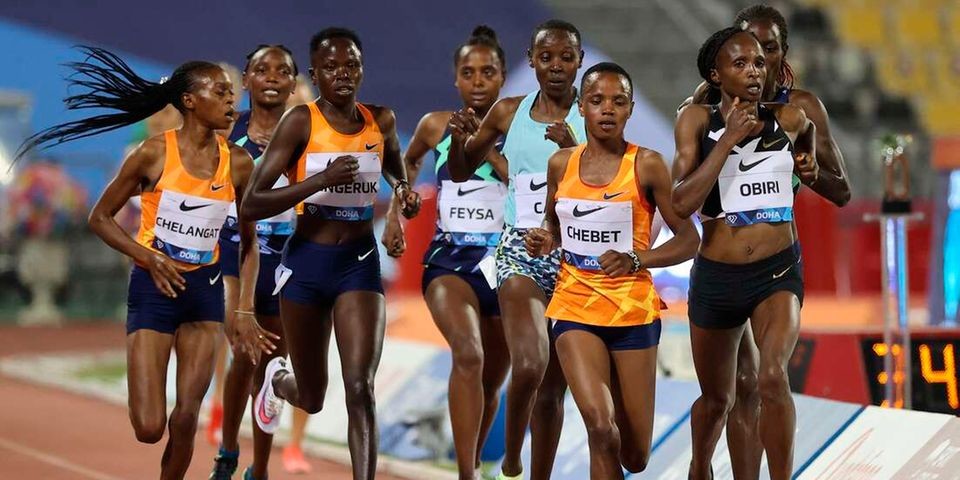
Chebet’s compatriot, former Africa 5,000m champion, Sheila Chepkirui settled for second place in 14:54.06, followed by Burundian Francine Nyonsaba, who ran within the Tokyo Olympics qualifying time and a personal best of 14:54.38.
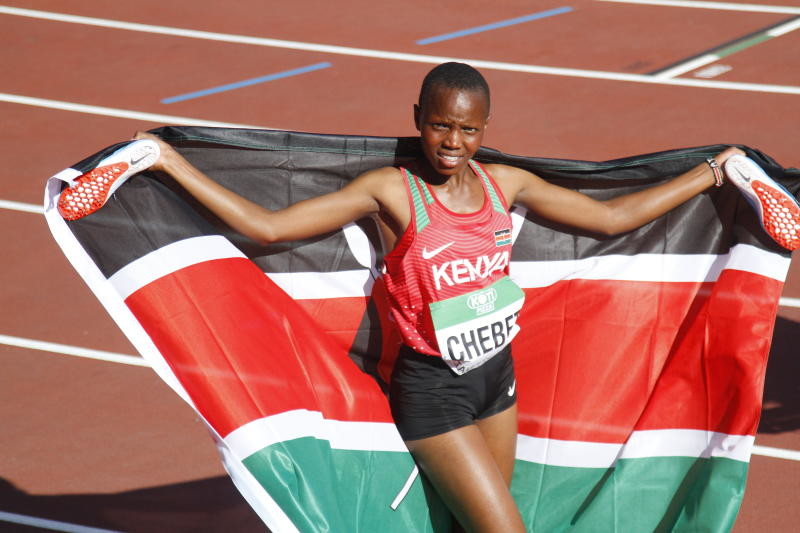
Chebet, who is also the reigning World Cross Country Under-20 champion, had on May 28 shocked a strong field that included defending champion Hellen Obiri, who is also the World 5,000m champion, to win the 3,000m race at the Doha Diamond League.
Chebet clocked a personal best and world lead of 8:27.49 for her maiden Diamond League victory.
Also to glide to a meet record victory at Montreuil was Abel Kipsang of Kenya, winning the men's 1,500m in a personal best of 3:33.99 after.
(06/02/2021) ⚡AMPby Ayumba Ayodi
Burundi's Francine Niyonsaba, who changed events due to testosterone rule, runs Olympic qualifier
She ran a time of 14 minutes 54.38, which is also a new national record, as she finished fourth in the race to easily better the Olympic qualifying time of 15:10.00.
It was just her second race over the distance having just missed out on the qualifying standard when she ran 15:12.08 at a meeting in Spain last month.
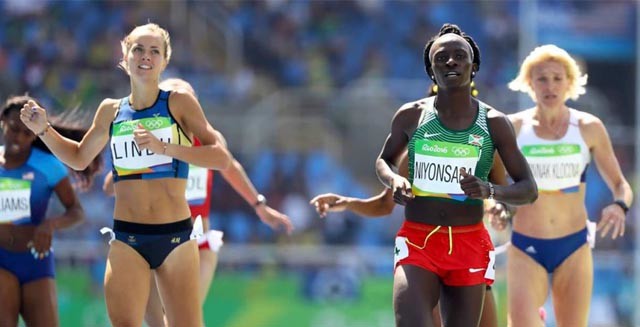
"A challenge is not a barrier. It's an opportunity to do better. Heading to Tokyo with a great qualifying time," she posted on Twitter.
The race was won by Kenya's Beatrice Chebet, who finished just over two seconds ahead of Niyonsaba.
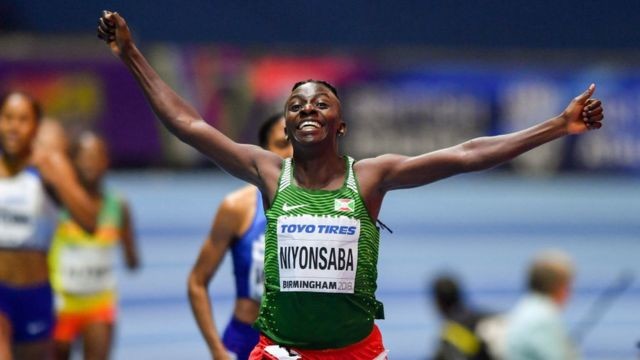
The 28-year-old, who won silver over 800m at the 2016 Games in Rio, has decided to move up to the long distance event rather than taking testosterone-reducing drugs.
Under the latest World Athletics regulations Niyonsaba is classified as having 'Differences of Sexual Development' - or 'DSD' - and so is not allowed to compete in events between 400m and a mile without taking testosterone-reducing drugs.
At the same meeting on the outskirts of Paris Burkina Faso's Hugues Fabrice Zango continued his good form with another win on the triple jump with a leap of 17.67 metres.
Ivory Coast's Marie Josee Ta Lou won the women's 100m in a time of 11.06 seconds just ahead of The Gambia's Gina Bass in 11.30.
Ta Lou's compatriot Arthur Cisse was victorious in the men's event clocking a time of 10.11 seconds.
Kenya's Abel Kipsang was the other African winner on the night in the men's 1500m as he finished ahead of compatriot Charles Simotwo, with Morocco's Brahim Kaazouzi in third place.
On Friday South Africa's Caster Semenya, Niyonsaba's great rival over 800m and another athlete classified as DSD, finished outside the qualifying mark for the 5,000m.
The 30-year-old finished in 15 minutes 32.15 seconds at meeting in Durban - 22.15secs outside the qualifying time.
It was her second bid to qualify for the 2020 Tokyo Olympics.
(06/02/2021) ⚡AMPby Sport Africa
Tokyo 2020 Olympic Games
Fifty-six years after having organized the Olympic Games, the Japanese capital will be hosting a Summer edition for the second time, originally scheduled from July 24 to August 9, 2020, the games were postponed due to coronavirus outbreak, the postponed Tokyo Olympics will be held from July 23 to August 8 in 2021, according to the International Olympic Committee decision. ...
more...Mo Farah is set to race at European 10,000m cup
The European 10,000m cup is taking place this Saturday, June 5 in Birmingham, U.K. According to European Athletics, 111 athletes from 26 countries will be competing, including an Athlete Refugee team in the men’s race. The highlight of the meet for track fans will be the return of Mo Farah, who will be running his first 10,000m since the 2017 World Athletics Championships in London.
38-year-old Farah will be aiming to hit the Olympic standard of 27:28 on Saturday, which shouldn’t be a problem for the 4-time Olympic gold medalist (twice in the 10,000m, twice in the 5,000m), whose PB at the distance is 26:46.57, set in 2011. He will be toeing the line with other strong British runners, including Marc Scott and Sam Atkin. Both men have already run Olympic qualifying times at the distance with 27:10.41 for Scott and 27:26.58 for Atkin, which should make for an exciting race.

Other notable athletes set to compete in Birmingham include reigning European 10,000m champion Morhad Amdouni from France and European 10,000m silver medallist Bashir Abdi from Belgium. Abdi is one of Farah’s main training partners.
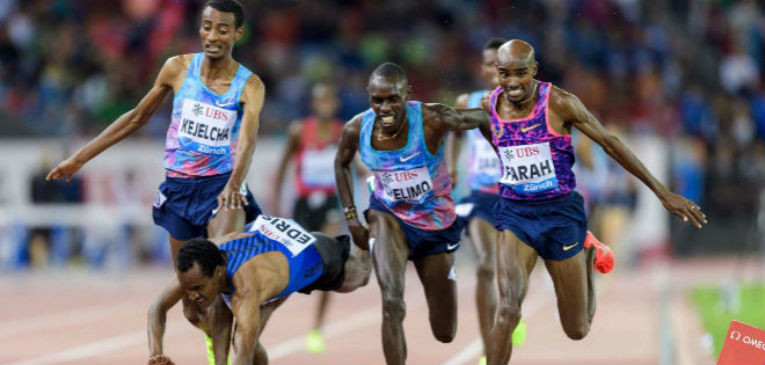
European 5000m silver medallist Eilish McColgan will be the fastest seed on the women’s side, with a recent personal best at the 10,000m of 30:58.94. Several other women are within striking distance of McColgan, however, and with many of them yet to hit the Olympic qualifying standard, we are likely to see some fast racing on Saturday.
(06/01/2021) ⚡AMPby Brittany Hambleton
17-year-old Erriyon Knighton breaks Bolt’s world U18 200m best with 20.11 in Jacksonville
After a string of 200m victories and some swift – albeit wind-assisted – times over 100m in the past two months, 17-year-old Erriyon Knighton finally entered the record books with his 20.11 200m win at the Duval County Challenge, a World Athletics Continental Tour Bronze meeting, in Jacksonville on Monday (31).
Knighton, who hails from Tampa in Florida, turned professional at the start of this year and has been mixing it with the world’s best during the outdoor season. He clocked a wind-assisted 9.99 over 100m in Clermont at the start of May and followed it with a 200m PB of 20.30 at the World Athletics Continental Tour Gold meeting at Mt SAC. More recently, he won the future stars 100m race at the Continental Tour Gold meeting in Boston, clocking 10.16.
In Jacksonville, however, Knighton made another step up in class, taking on some of the world’s biggest sprint stars.
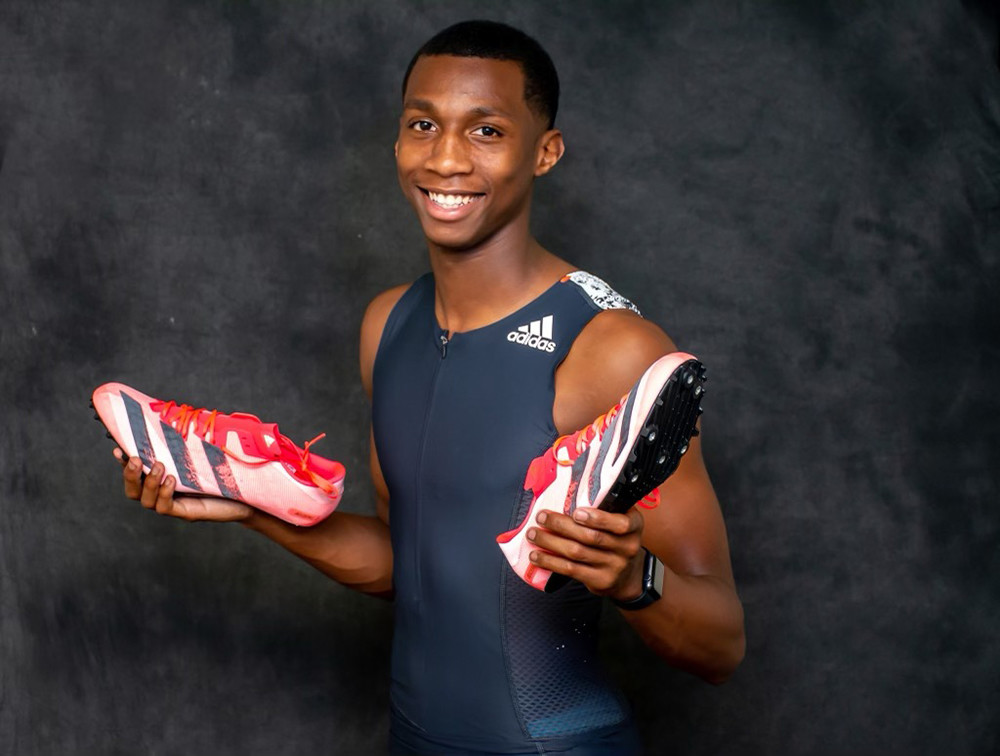
Drawn in lane three, Knighton got off to a solid start and trailed European champion Zharnel Hughes and 2016 world indoor 60m champion Trayvon Bromell as they entered the straight.
Bromell briefly edged in front while Hughes faded slightly, then Knighton held his form well to take the lead, crossing the line in 20.11 (1.6m/s) to take 0.02 from the world U18 best set by Usain Bolt back in 2003.
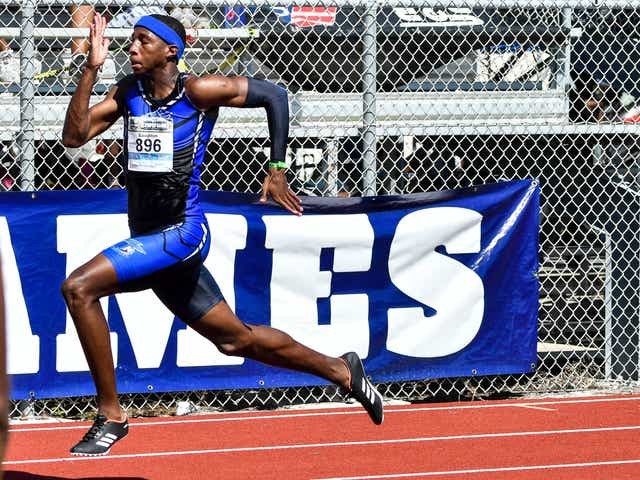
Bromell finished second in 20.20, his fastest time for five years, while Hughes was third in 20.30.
World silver medallist Brittany Brown won the women’s 200m in 22.43 (1.0m/s), beating Dezera Bryant (22.47) and Kyra Jefferson (22.63).
Shamier Little improved her own world-leading 400m hurdles mark by more than half a second, dominating the race to win in 53.12 – the second-fastest time of her career.
Jamaica’s Ronda Whyte was a distant second in 54.33. Dalilah Muhammad, competing in a separate heat, clocked 55.01 in what was her first hurdles race since breaking the world record to win the world title in 2019.
World champion Grant Holloway notched up another convincing 110m hurdles win, clocking 13.10 (1.1m/s) to finish ahead of Devon Allen (13.22) and Daniel Roberts (13.23).
Jamaica’s Brittany Anderson came out on top of a strong 100m hurdles field, winning in 12.59 (0.7m/s). World indoor silver medallist Christina Clemons was second in 12.64, just 0.01 ahead of 2015 world champion Danielle Williams.
Elsewhere, world U20 champion Brianna Williams won the women’s 100m in 10.98 (1.0m/s), from Mikiah Brisco (11.09). World indoor bronze medallist Ronnie Baker took the men’s race in 9.99 (1.3m/s) after clocking a wind-assisted 9.91 in the heats.
(06/01/2021) ⚡AMPby World Athletics


